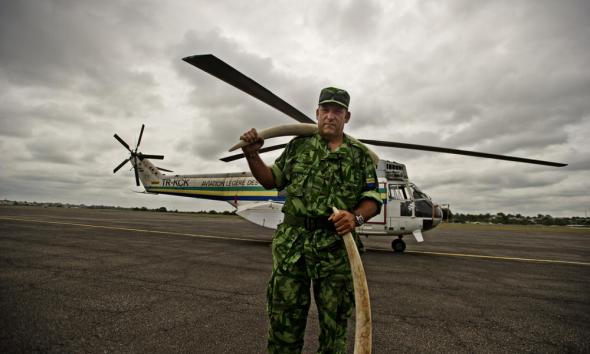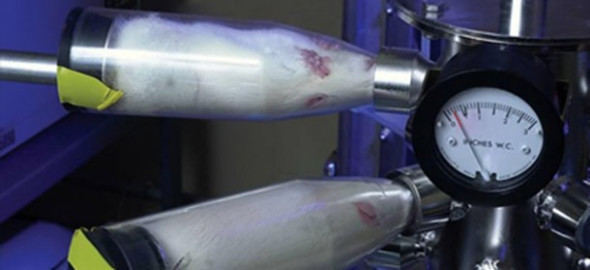Environmentalism - Chapter 26 Drought in America
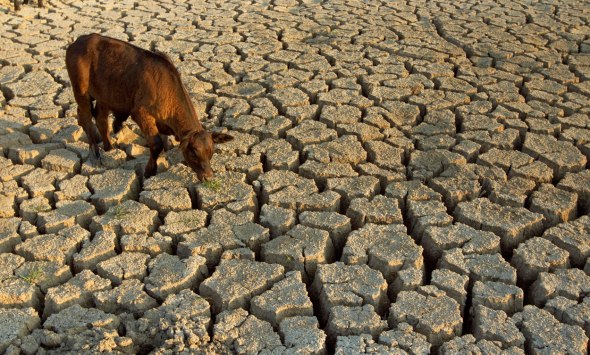
One would believe that with all the recent destructive weather patterns and heavy rain fall in the United States that the rivers would be over flowing to almost flood level. Little did we know that this is not the case and should there not be an increase in rainfall soon to replenish the local state rivers and reservoirs to lakes in the centre state of the United States then we are going to be looking at quite a few problems on our hands with displaced biodiversity, botanical species vanishing, insects moving out of the area thus placing a strain on crops that depend on them, and aquatic species of river fish gone, to agricultural animals dead from severe dehydration.
From 2009-2011 the United States as documented last month was severely hit by a multitude of weather fronts bringing in flooding, typhoons, hurricanes, tropical storms, and heavy transpiration however in 2011 and then 2012 the summers where intense causing colossal crop and agricultural damage, lowering rivers and reservoirs, placing the nation in to now a water shortage crisis of which droughts have been declared over almost half of the United States. Alaska is fairly untouched by the droughts with only 1% of the Alaska actually affected of which the drought [water shortage] is expected to persist or intensify.
Hawaii has not been left untouched either and is like most parts of the United States under a drought “even in the winter”. Mainly on the west coast the droughts are likely to persist or intensify that’s causing some alarm now with agriculturists and cattle farmers, to home owners, river watch schemes, importers and exporters that use the lakes and rivers to move stock across.
Conservationists and climatologists from International Animal Rescue Foundation © have been monitoring the situation along with meteorologists and animal welfare of which the river levels have not changed in western America for the past 12 months and are unlikely to change until we see heavy but prolonged rainfall over a large time frame.
From the 7th February 2013 to the April 2013 the following areas that I have briefly listed below are on drought watch based on up to date accurate weather and river level recordings from the United States government, and local non-related conservation teams.
- Florida needs to now be on alert for droughts that are likely to occur with the entire state of Florida now on yellow watch. The very tip of Florida near Miami and the Everglades National Park has been noted that droughts in this region are likely to intensify and persist.
- Georgia and South Carolina are on red watch with droughts likely to persist and severely intensify, with no reports of real concern in North Carolina.
- Atlanta is on orange watch with droughts on-going although some are likely to [improve] over a set time it is still unclear when.
- Charlotte though is looking fairly clear and green with drought likely to improve with impacting damaging easing considerably even though it is next to a relatively drought hit area.
- Alabama is on orange watch with droughts on-going however there is likelihood of some improvement in the area.
- From the tip of Louisiana to the tip of New York the entire states between this safe-line are “fairly unaffected with only Florida now on severe drought watch [and that needs to be taken seriously]
- However moving west we see the real problems, with the entire west states of America stretching from Texas to New Mexico, Oklahoma and South Dakota all on major red watch with rivers running rapidly dry.
- Wisconsin and North Dakota are lush and green with droughts improving and impacting drought damage decreasing by the month. Lake Michigan is “satisfactory” although we would like to see more rain fall in this area, sadly we are not god and cannot make that happen.
- The Rio Grande is exceptionally worrying to us as like Florida as that is now on imminent drought watch with drought expected to hit at any time with no predictions of when or how long such drought will persist, International Animal Rescue Foundation advises all agriculturalists in this area to arrange other forms of transport and not use barges to transport goods, and to improve on land irrigation, mulching and water retention as and when it occurs.
- The entire state of New Mexico is classed now as a serious area of watch with droughts are likely to persist and/or intensify dramatically.
- Idaho – Washington and Montana are “fairly ok” although this area is not of concern we are monitoring San Francisco, California, Los Angeles, and San Diego that are now like Florida and Rio Grande on yellow watch with droughts likely to develop. We ask all agriculturist’s in these states to be prepared, seek alternative road transport and not river barge transport, monitor your local river levels and if you can rain fall too. Please ensure that irrigation is working and not blocked. We have now left these areas however we would like to view your readings for future predictions. Please email our international conservation investigation team here - externalaffairs@international-animalrescue-foundation.org.uk
State tension – Rivers on watch;
- CATAWBA RIVER – South Carolina vs. North Carolina river concerns are growing that North Carolina proposed hydropower plant on the Catawba River would reduce flow and harm water quality and wildlife. Neighbouring South Carolina objected to this. The US Supreme Court ruled in South Carolinas favour in 2009, blocking construction of the plant.
- LAKE MICHIGAN – States bordering the great lakes have drawn up a legal contract to share the water that feeds the lake. Now the city of Waukesha in Wisconsin wants to divert more water to its supply, citing drought. Should that application get the go ahead, and to many other cites follow suit tensions are likely to mount.
- RIO GRANDE – Texas and New Mexico are in dispute over their shares of water into the Rio Grande, governed by an agreement dating back from 1938. The Lone Star state, which is downstream from New Mexico, has asked the Supreme Court to intervene.
- Missouri and Mississippi Rivers – The shipping industry wants congress to order the release of more water from the Missouri river into the Mississippi, to keep to keep navigation channels open in the face of drought. That could trigger lawsuits from upstream states including North and South Dakota, which rely on high water levels in the Missouri for agriculture.
- RED RIVER- The Supreme Court from the Tarrant Regional Water District in Northern Texas, which wants Oklahoma to supply it with water from tributaries that flow into the Red River, on the border between the two states. Success for Texas could spark further law suits between neighbouring states.
- CHATTAHOOCHEE RIVER – Atlanta’s ever increasing demands for water from the Chattahoochee river in Georgia have angered downstream Florida and Alabama, since 1990, there have been multiple lawsuits. Currently, the US Army Corps of Engineers is studying how best to allocate water among the three states.
Within the news recently it was reported that blizzards have hit the north east, however across much of the country the most widespread drought in more than half a century is still biting with the water ways being the most badly hit.
Lake Michigan and Huron hit their lowest levels on record, with the US Corps of Engineers dredging the Mississippi and blasting away rock formations on the river bed to maintain the three metre depth that barges need to ferry exports to the coast.
Growing urban water demands have long clashed with the needs of agricultural and navigation, and climate change is expected to increase the tension causing wilder swings between drought and flood even in regions that may not get drier overall. It’s predicted that water shortages are going to intensify unless climate change is dealt with on an erratic bur controlled basis and more people in the United States cut their carbon emissions down drastically and immediately.
How is this effecting wildlife though?
In a statement issued April 2012 by the Missouri State it quoted the following;
PLEASE NOTE INTERNATIONAL ANIMAL RESCUE FOUNDATION © DOES NOT SUPPORT CERTAIN VIEWS AND COMMENTS IN THIS REPORT THAT ARE NOT BASED ON UP TO DATE BIODIVERSITY SCIENCE AND WATER WAYS MANAGEMENT/CONTROL. THE VIEWS ARE BASED ON THE NARRATOR AND DO NOT UNDER ANY CIRCUMSTANCES REFLECT WHAT OUR OWN SCIENTISTS VIEW AND WORK ON DAILY.
Everything from trees to fish are feeling the pinch of heat and drought, and the Missouri Department of Conservation (MDC) is tracking the effects of extreme summer weather and doing what it can to help people and nature.
The period from January through June was the hottest on record nationally. June was the sixth-driest on record in Missouri. The Show-Me State’s last rainfall of state wide significance fell on May 7. Meanwhile, extreme heat, wind and unusually low humidity have sapped what little moisture once existed in the state’s soil.
One-hundred degree-plus temperatures began in June and lingered into August. In July alone, temperatures topped 100 degrees on 15 days in central Missouri.
As of July 24 2012, the National Climate Data showed the entire state of Missouri as being in at least severe drought. More than two-thirds of the state was in extreme drought, and the Bootheel and adjacent counties were in an exceptional drought, the most severe classification recognized by the National Climatic Data Centre.
The National Weather Service’s long-range forecast is for drought conditions to persist or intensify across Missouri. No significant increase in precipitation is anticipated before October.
FORESTS
Missouri forests were stressed by several factors even before the drought set in. Most of the state suffered a severe, late freeze in 2007, killing flower and leaf buds on many trees. Multiple ice storms that same year wrecked hundreds of thousands of trees over large swaths of Missouri, and a freak windstorm, known as a derecho, flattened trees across parts of the eastern Ozarks in 2009.
The period from 2008 to 2010 set records for rainfall. Then, in 2011, the weather abruptly turned hot and dry, a trend that has worsened this year. Forests in south eastern and south western Missouri are hardest hit by drought, but trees are suffering state wide.
As if weather challenges weren’t enough, Missouri witnessed the emergence of a brood of periodical cicadas that covered most of the state in 2011, followed by an outbreak of jumping oak gall wasps and defoliating insects.
Nick Kuhn quoted;
“All in all, it has been an extremely tough five years for Missouri forests,” says Forestry Field Programs Supervisor Nick Kuhn. “While it is still too early to know exactly how severe the effects will be, we expect to see some reduction in acorn and nut production. That could be a concern for animals that depend on acorns and other nuts for food, and for Missouri’s nut industry.”
Kuhn says many trees are dropping their leaves early to cope with the heat and drought. Shedding leaves reduces the amount of water trees lose through evaporation, helping them survive. However some trees will succumb to drought.
Kuhn says the drought will be hardest on old trees and those already weakened by disease or parasites. Trees growing on west- and south-facing slopes will face greater drought challenges, as will trees that are crowded or poorly adapted to the sites where they are growing. The drought underscores the importance of proper forest management and working with a professional forest to properly manage forests.
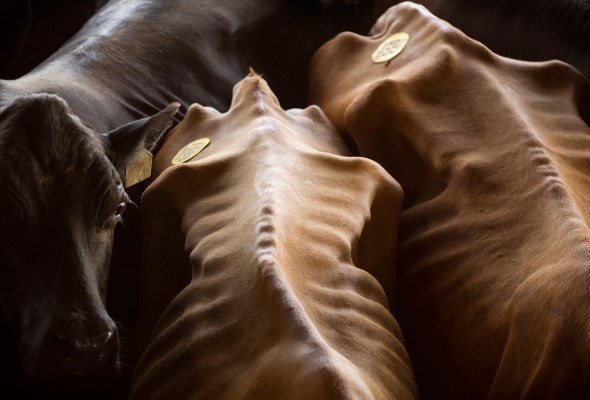
Drought’s in the U.S.A attributed to many cattle losing dying, pic from 2011
Gillespie Livestock Company in Fredericksburg
“Landowners can help their forests be more resilient to insect and drought stresses through proper management,” says MDC Forest Products Program Supervisor Jason Jensen. “Forests need management much the same as a garden or any other crop. When left unmanaged, forests become overcrowded. Trees all compete for water, nutrients and sunlight. When there are too many trees competing for these limited resources, the trees will become stressed and won’t be as healthy and productive as a managed forest. Trees in well-managed forests grow faster and provide better wildlife habitat.”
HOWEVER -
For landowners who are interested in managing their forest or are seeing trees that have died as a result of the drought, a timber sale may be in order. Landowners should seek the assistance of a professional forester when considering a timber sale. MDC has foresters available to assist landowners. To find a forester in your county go to http://www.mdc.mo.gov and select “Who’s My Local Contact.” Private consulting foresters are also available to assist landowners. To find a consulting forester in your area go to http://www.missouriforesters.com.
The on-going drought also has heightened wildfire danger. Unlike western states, Missouri’s primary wildfire season is late winter. Once trees leaf out, the shade they provide causes humidity levels on the forest floor to increase, reducing fire danger. This year is an exception. MDC saw a 150-percent increase in the number of reported fires from May through June. This does not include fires on the 1.5-million acre Mark Twain National Forest. Since Jan. 1, MDC has recorded 2,280 fires affecting 26,944 acres. Those fires destroyed 15 homes and l51 outbuildings and damaged 331 other structures.
Causes of these fires included:
- Debris Burning – 794 fires consuming 4,942 acres
- Equipment Use – 154 fires consuming 1,937 acres
- Arson – 117 fires consuming 4,470 acres
- Smoking – 49 fires consuming 189 acres
- Campfire – 34 fires consuming 82 acres
- Children – 34 fires consuming 83 acres
- Lightning – 23 fires consuming 75 acres
- Railroad – 7 fires consuming 38 acres
- Miscellaneous causes – 1,068 fires consuming 15,129 acres
Compared to a normal year, total burned acreage has tripled. MDC normally sends crews to help fight fires in the western United States, but this year the agency’s entire force of 754 fire fighters is at home, responding to calls for help from local fire departments.
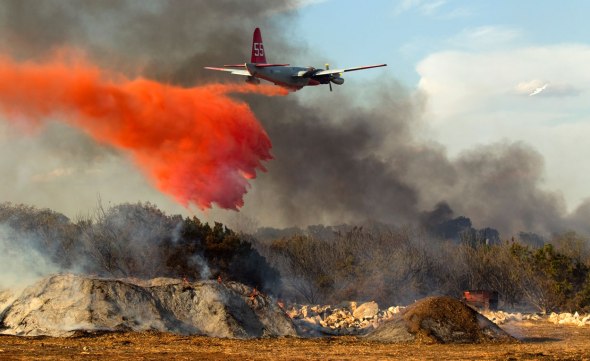
A plane dumps fire retardant on a 30-acre grass fire in Leander on Monday, August 15, 2011.
The blaze destroyed 15 homes displacing many people and cattle.
MDC has mutual aid agreements with more than 800 fire departments and has assigned approximately $70 million in federal excess property equipment to these partners for wildfire suppression. MDC also provides training to volunteer firefighters and awards an average of $400,000 in cost-share grants annually to fire departments to purchase wild-land fire suppression equipment.
Burn bans across most of the state discourage trash burning or any other open fire. MDC has banned open fires on all conservation areas.
“Everyone needs to be extra careful when working or playing outside,” says Forestry Field Programs Supervisor Ben Webster. “It doesn’t take much to start a wildfire.”
At home and on the farm, barbecue grills should not be left unattended. Exercise extreme caution when using farm machinery, mowers or other equipment that could strike a spark or put hot engine parts in contact with dry vegetation. This includes driving vehicles off road. Smokers are urged to put cigarette butts in ashtrays rather than discarding them along roadways. Homeowners should visit http://www.mdc.mo.gov/node/5290 and use the Firewise checklist there to ensure that you can protect your property from wildfire.
WILDLIFE
Native wildlife is well-adapted to the range of conditions that can occur in Missouri. That does not mean, however, that weather does not affect animals, which may have to alter normal behaviour patterns to meet their needs for food, water and shelter.
An example of such behavioural changes came to light recently when Resource Scientist Jeff Beringer attached a video camera to the radio collar he placed on a black bear. When he retrieved the camera and watched the video, he discovered that the bear had spent pretty much all its time walking through the water in a small stream.
Resource Scientist Jeff Briggler’s primary area of expertise is reptiles and amphibians, but he offers a general observation about how current weather could affect human interaction with wildlife.
“Wild animals need water, which is extremely scarce right now,” says Briggler. “People have plenty of water, and watered lawns and gardens, birdbaths, even air-conditioners that drip water are very attractive to all kinds of wildlife.”
Briggler says people shouldn’t be surprised to find squirrels munching their tomatoes or box turtles and frogs around backyard water features. Similarly, cool basements may attract animals trying to escape the heat.
“If an animal can’t get far enough underground to get away from the heat and find moisture in their normal home area, they have to look for someplace they can,” says Briggler.
Deer are traveling farther than usual for this time of year and moving during times of day when they ordinarily would be inactive. Aquatic turtles must move or die when ponds or streams where they live dry up. On the other hand, smaller, less mobile animals, such as frogs, often take the opposite approach, hunkering down to wait out the heat.
Hummingbirds go where there is food, and this summer that means forests, especially around permanent bodies of water, where flowering plants remain available. As a result, fewer hummingbirds are visiting nectar feeders in dry upland areas, causing some people to wonder what has become of the little birds.
Wildlife Ecologist Brad Jacobs urges people to leave hummingbird feeders out well into the fall, however.
“The southern migration of hummingbirds has begun,” says Jacobs, “with increasing reports of adult and young birds at nectar feeders. Artificial feeders are a welcome supplement for migrating hummers. The ruby-throats will be mostly gone by October, but several other western hummingbird species pass through Missouri on up until early December, and they might just stop by a feeder if you leave one out for them.”
Jacobs says the current weather has the opposite effect on birds whose primary foods are seeds and insects. Shortages of these staple foods have meant capacity crowds at well-stocked feeding stations. Putting out black-oil sunflower seeds, seed mixes and suet blocks almost guarantees that mobs of birds will visit your feeder.
Likewise, people are reporting seeing more herons this year. Jacobs says the long-legged wading birds are not more numerous this year. They simply are more visible because they are concentrated around limited water. Shallow, shrunken pools present a bonanza for these predators of fish and amphibians.
Waterfowl hunters have been encouraged by news that near-record numbers of ducks will head south from nesting grounds in the northern United States and Canada this year. However, reduced availability of agricultural crops and natural food plants on wetland areas could prevent ducks from lingering in Missouri long enough to provide much hunting opportunity.
Keeping wetland areas wet enough for ducks could be a problem if the drought continues. Low water levels in streams and wells have raised concerns about the availability of water later in the fall at managed wetland areas, including Bob Brown, Nodaway Valley, Fountain Grove and Otter Slough.
On the other hand, low water levels allow maintenance work on boat ramps and other areas that normally are too wet. Lack of moisture also permits habitat work in areas where soil normally remains saturated throughout the summer and provides opportunities to control invasive plants.
For all these reasons, the quality of this year’s waterfowl hunting remains a question mark in spite of the abundance of ducks.
Resource Scientist Emily Flinn specializes in deer biology and management. She does not expect big changes in deer numbers on account of this year’s weather.
“Deer are resilient animals and have dealt with extreme conditions for millions of years,” she says. “Although fawn survival can be affected by drought, the mild winter and early spring green-up allowed the deer population to enter the summer in excellent body condition. So I doubt that fawn recruitment will be significantly affected statewide.”
Flinn says epizootic hemorrhagic disease and blue tongue (another hemorrhagic disease) always are concerns in drought years, because deer have more opportunity to transmit diseases when they are crowded around limited water supplies. She noted that hemorrhagic diseases are different and unrelated to chronic wasting disease, or CWD.
She has received some reports of dead deer around water, which is typical of hemorrhagic diseases, but she is awaiting test results to confirm the cause. Such outbreaks are difficult to document, since affected deer typically die quickly and are immediately consumed by scavengers. Citizens who see dead or sick deer can report the sightings to the nearest MDC office.
Flinn says she is receiving a larger-than-normal number of complaints about deer damaging crops. She attributes this to reduced availability of other natural foods. At this time of year, deer normally are browsing on plant leaves, buds and fruits.
MDC provides landowners considerable ability to manage deer by providing depredation permits to address localized crop damage and free or low-cost deer hunting permits during the hunting seasons. Flinn stresses that it is important for neighbors to work together to manage deer in their area.
MDC is working with landowners to encourage quality deer management at the community level. Several deer-management landowner cooperatives have started across the state where landowners are working together to better manage the local deer herd.
“Deer hunting is a rich tradition in Missouri and important to our economy,” says Flinn. “MDC wants neighbors talking to each other about how they can work together to better manage the local deer herd “and we’re here to help.”
MDC is hosting four deer-management workshops in August and September that will focus on managing deer on private land. For details, visit mdc.mo.gov/node/18243. For more information on deer landowner cooperatives, contact your county private land conservationist using the “Who’s My Local Contact” link at http://www.mdc.mo.gov.
Weather conditions do affect deer behavior, and Missourians might be seeing evidence of that as deer travel longer distances to find food and water. This could result in deer being active throughout the day, rather than just from dusk to dawn, as they normally are.
One thing that is unlikely to be affected by weather is the size of bucks’ antlers. Flinn notes that deer in Texas showed no change in antler growth last year after experiencing a record drought.
“Again,” says Flinn, “the mild winter and early spring allowed deer to store nutrients and enter the summer in great body condition. I don’t think hunters are going to see any effect on antler size related to the drought and heat.” For the same reason, Flinn said deer don’t need supplemental feeding.
“We do not need to provide supplemental food or water sources,” says Flinn. “This mainly increases the risk of disease spread, which could cause more harm than good.”
Resource Scientist Beth Emmerich says warm, dry weather early in the nesting season gave wild turkeys, quail, pheasant and other upland birds a much needed break from the wet, cold weather that has plagued them in recent years. She says quail should have no trouble finding food because grasshoppers – one of their staple foods – are abundant.
“Most people I’ve talked to are seeing and hearing more quail than they have in the last several years, when it was wetter,” says Emmerich. “It should be good for rabbits, pheasants and other upland wildlife, too. Quail can tolerate periods of dry weather well, as they get their water from dew and food. The mild winter, coupled with a dry summer should be good news for them. I have my hopes up for good survival of quail chicks this year.”
FISH
The most dramatic effects of the current drought on fish and other aquatic life are occurring in ponds, small lakes and streams. Fisheries biologists across the state report increased incidence of fish kills in small impoundments.
Although the number of fish kills is up, such events are normal occurrences in Missouri. In most cases, fish die because they can’t get enough oxygen. Warm water holds less oxygen than cool water, so hot weather is naturally more stressful. Fish usually can cope with this unless other factors come into play.
Warm, fertile water sometimes promotes excessive growth of tiny aquatic plants known as algae. That’s fine as long as the sun shines and the tiny plants are using sunlight to put oxygen in the water. But cloudy weather turns algae from oxygen producers into oxygen consumers, so a couple of overcast days can have disastrous results for fish.
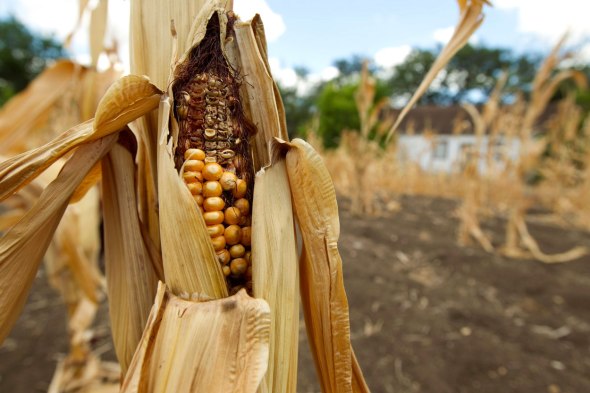
This corn stalk is typical of the condition of hundreds of acres of corn that was destroyed by drought on this farm in Round Rock on Tuesday, July 12, 2011
Fish gulping air at the surface of a pond is an early warning of an impending kill. Sometimes pond owners can improve the situation by running an outboard boat motor with the propeller close enough to the surface to mix air and water, increasing dissolved oxygen. However, they must be sure not to stir up mud, as this can make things worse. They also must ensure that the motor’s cooling-water intake remains submerged to avoid overheating.
Fish in large lakes are not immune to drought and heat. Most of Missouri’s large reservoirs still have reasonably good water levels, but temperatures are climbing and dissolved-oxygen levels are declining. Fish grow sluggish as water warms and oxygen grows scarce, and this makes for poor fishing. Fish also are more susceptible to diseases and parasites in tepid lakes. The longer such conditions continue, the greater the likelihood that fish will die. At present, fisheries biologists worry about the possibility of isolated die-offs of large muskellunge at Pomme de Terre or the loss of walleyes and other prized game fish at other big lakes.
Fish in streams also feel the effects of heat and drought. Streams with healthy watersheds – including good soil-conservation practices, vegetated stream-side buffer zones and trees that provide shade – generally have good water quality and avoid fish kills. But even fish in healthy streams can experience stress in extreme droughts. Trout in the Current and Niangua rivers and small spring-fed streams currently are at risk because reduced flow from springs has raised their water temperatures.
Pools that serve as refuges for fish in small streams statewide are disappearing, leaving fish with nowhere to go. Even where pools remain, severe flow reductions can leave fish vulnerable to pond-like fish kills.
Anglers may find the water level in some streams so low that boat ramps are unusable. Until the drought breaks, it’s a good idea to inspect the bottom ends of boat ramps before launching to ensure the concrete apron extends far enough to support your boat trailer.
Four of MDC’s five cold-water fish hatcheries rely on natural springs to supply water for their operations. Some of those springs are down to less than half their normal flows. This has forced some hatcheries to transfer part of their fish to Shepherd of the Hills Hatchery, which has an abundant supply of cool water from Table Rock Lake. MDC’s four warm-water hatcheries are making do with reduced flows, but hatchery managers are watching conditions closely.
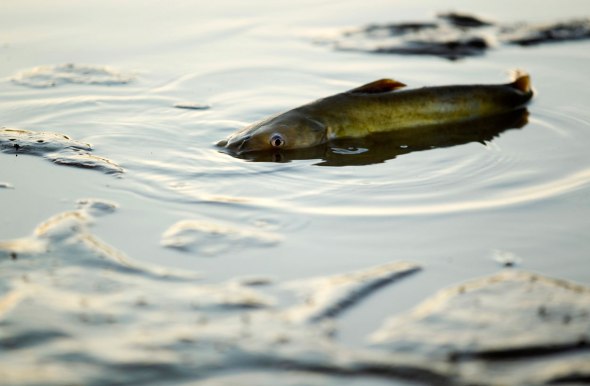
A catfish can barely move on the edge of a pond in that has dwindled to just a few inches deep on Thursday, July 14, 2011, in Old Dime Box in Lee County.
“Hatchery improvements completed the past couple years, such as dissolved oxygen systems, aerators, and renovated raceways have really helped us cope with the drought and low water levels,” says Hatchery Systems Manager James Civiello. “I’d hate to imagine where we would be in this drought without the hatchery improvements.”
PRIVATE LAND
Livestock forage is critically scarce this summer, and MDC supported a request by the U.S. Department of Agriculture’s Farm Services Agency to allow farmers to graze cattle on some land enrolled in the Conservation Reserve Program and permit haying on land enrolled in the Wetland Reserve Program.
MDC also offers cost share to landowners interested in establishing native warm-season grasses for forage production. Native grasses are more drought-tolerant than introduced cool-season grasses such as brome and tall fescue. During the drought, native grasses like big bluestem and switch grass are still growing and providing forage for livestock and cover for wildlife. For more information on native warm-season grasses contact your local private land conservationist or regional MDC office.
Private Land Field Programs Supervisor Rex Martensen reminds landowners that the Missouri Wildlife Code allows them to protect crops and property from deer, bears, raccoons, coyotes, beavers and other wildlife with MDC permission. A call to the nearest MDC office is all that is needed to get help from a wildlife damage biologist.
CONCLUSION
Good news related to the drought is scarce, but there are a few silver linings. One is that ticks and mosquitoes are not as troublesome this summer as they have been in recent years. Invasive zebra mussels can’t tolerate warm water well and apparently were devastated by high water temperatures at Lake of the Ozarks last year. This year’s more extreme conditions could help contain the destructive mussels.
While individual animals and local populations may suffer, MDC experts agree that forests, fish and wildlife overall will bounce back from the current drought and heat.
“The resiliency of wild animals and the stability of natural systems is truly remarkable,” says Briggler. “Trees and animals don’t fret over the present or the future. They just persevere.”
Impacts of drought via climate change;
Drought conditions can affect wildlife populations in many ways, from changing homeland ranges in an effort to find water to creating conditions that can impact health. High temperatures and low rainfall can contribute to outbreaks of Clostridium botulinum or avian botulism, which is a bacterium that typically resides dormant in the soil. Under the right conditions, these bacteria can replicate and produce toxins. These toxins are typically concentrated in maggots and other invertebrates that feed on decaying matter that is a good source of protein for the botulism bacteria. Birds like waterfowl then ingest the toxins through feeding on these organisms or drinking infected water. Species that are most impacted by a botulism outbreak are associated with wetland communities including ducks such as mallards, wood ducks, and teal and water birds such as yellow legs, pelicans or great blue herons.
Habitat;
As drought conditions increase, the impacts on plants can be readily observed, since plants simply reduce the number of stems they produce while others shrivel and die back. This reduction in plant growth results in less available hiding cover, which could increase predation rates for wildlife as well as produce fewer flowers for insects and, as a result, less available food. Species that could be impacted by this decreased habitat quality would be ground nesting birds such as turkeys and pheasants as well as ground dwelling mammals such as ground squirrels.
Nesting birds;
The timing of this year’s drought conditions is not likely to have a significant adverse impact on nesting wildlife, since most birds have fledged the nest and are no longer confined to a specific nesting site. The potential exists, however, that high temperatures and low moisture levels can result in bird losses.
Reduced food shortages;
Extremely dry conditions also reduce the available water sources that many insects are dependent upon for a portion of their life cycle, specifically mosquitoes. Although reduced insect levels can be a positive for people getting outside in the evenings, lower insect levels for bats can mean less food and as a result, lower fat reserves for migration and hibernation. In addition to potential mortality that reduced food sources may cause, wildlife in drought conditions may also need to travel greater distances to find available food. This extra effort also subjects them to increased predation rates themselves and an increased likelihood of accidents.

In the image above one can clearly view how drought is changing over the states of America [Please click image]
In addition to reduced insects for food, the production of other food sources - such as berries and mast, which include acorns or hickory nuts - could also be reduced. Similar to a reduction in insects, a reduction in the available berries and mast can impact wildlife by requiring additional travel to find adequate food sources, causing both mortality from increased predation or accidents as well as indirect mortality from reduced fat reserves needed for hibernation. These impacts can ultimately result in reduced number of young next year.
Another potential impact that residents in the drought areas may experience is an increase in the number of wildlife visiting yards and outbuildings searching for food and water sources. As food sources decrease in the wild, some wildlife species such as raccoons or bear may search out easier food sources such as pet food dishes, cattle troughs or gardens that are regularly watered and are producing a higher volume of berries.
Concentrating wildlife;
As drought conditions increase, much wildlife will seek alternative habitat locations where habitat conditions are more favourable for them to raise young, seek shelter and provide a water source. Some species that would concentrate in these drought conditions would include a wide array of wildlife that would frequent the remaining watering holes to wetland dependent species such as waterfowl and amphibians, specifically frogs, toads and salamanders. While the concentration of wildlife may seem like a security issue to some, it also increases predation rates as the predators also home in on concentrations of their prey species.
Combatting drought - http://drought.unl.edu/DroughtforKids/HowCanWeProtectOurselves.aspx
Reducing water loss based on the most hottest sub Saharan climates – Zimbabwe an example;
Irrigation;
Since 1991 Practical Action has been working with communities in the dry Chivi district of Zimbabwe developing and testing new approaches to overcoming the effects of droughts which affect them three years out of five.
The farmer’s main priorities from the programme were to improve crop yields and conserve water. A high level of community participation - over 1,800 people - ensured that the project reflected local priorities and built on local knowledge to conserve water, protect soil, control pests and maintain indigenous varieties of seeds.
One early successful outcome of the project was a water saving technique involving clay pipes made by the women of the community. The pipes were used to carry water underground for irrigation in order to reduce evaporation.
The results were dramatic. Crops only needed watering twice a week instead of four times and the volume of water required fell by a half.
Other methods of water conservation have also been successfully employed including ridges across furrows to trap water, infiltration pits to soak it up and mulching.
Practical solutions on reducing drought;
- Use water convenient items such as low water showers and 4 minute timers etc. You can also wash your car say once a fortnight instead of daily.
- Mulching with bark and other fibrous chippings to even manure will reduce fluid loss on an agricultural and domestic scale.
- Fixing leaking tapes and pipes and reporting ALL leakages to the water board. It’s estimated that internationally we lose over 56 billion litres of water a year just from “public broken pipes” if you see it REPORT IT.
- Use alternative fuels thus reducing increasing climate destruction that causes drought.
- Set up on your farm and home rain water catch channels that then contain “rain water in to barrels or vast under-ground tanks” that one can then use to water their farms. International Animal Rescue Foundation © recommends that you store these tanks under-ground to reduce [evaporation] and because of the ground being much cooler and cut off from direct sunlight.
- Sounds “dirty” but DON’T allow your shower or bath water to just filter down the plug holes, this water helps in two very important ways of which we use in one of 7 glass houses. 1) Collect all bath and shower water upon finish “even with the soap suds in”. 2) Await for this to water to cool then water your plants [it does not harm them] 3) because the water has a [now] concentrated soap in it that does not harm the plants or crop in anyway; it does actually act as an aphid control. [The soap within the water is slippery and once cooled and then watered onto plants / crops that are infested by bugs, the aphids cannot keep grip on the stems thus falling off. [We always recommend that you use biodegradable chemicals] please view here where you can purchase. http://www.charliesoap.com/kitchen_bath_cleaner.html http://www.alibaba.com/showroom/biodegradable-soap.html http://greenliving.nationalgeographic.com/biodegradable-house-cleaners-2264.html
- It’s important to use biodegradable soap & cleaning products when you are re-using your bathwater to water the garden, as normal soap takes a long time to break down from complex chemicals into more useful simple substances that plant life can absorb. So I thought I would write something on biodegrable soap…first of all, look out for vegetable based solid soap like Marseille soap or glycerin soap. Glycerin soap is usually translucent. Marseille soap uses olive oil as a base. If you prefer to use liquid soap or shower gel, rather than solid soap, you can make your own shower gel by: [1] grating solid soap into flakes [2] putting these into an old shower gel bottle with some hot water [3] Shake the bottle for a few minutes and leave it to stand for a day or too. This is then ready to use. This is also good for the environment because it stops you buying shower gel bottles which then have to be recycled or just thrown away, ending up in landfill. If you can’t be bothered with that, you could use solid soap in the shower, if you have somewhere to put it… you can put in on a string and hang it up above the bath. The best way to do this is to use a screwdriver to grind a hole by hand through the centre of the bar of soap and thread some thick cord through this. It’s best to hang the soap high up so it’s not in the water stream, this way it will last longer. As for biodegradable cleaning products to clean your bath, try using soda crystals or borax. You can buy these sorts of products in cardboard boxes (again less plastic waste) from Clean and Natural by DRI PAK. If you scrub this powder onto the surface of the bath with a bit of water and leave it for a while before washing it off again, it is pretty effortless -on a par with stronger household cleaning products but with less ecological impact. These products are easy and safe to use and odourless. Soda crystals are produced by a relatively simple chemical process which means it’s more easily broken down, unlike phosphates which are found in more modern cleaning products. for more information on this subject see this page on toxic water by Surfers Against Sewage (SAS)
- Take showers not baths
- SO you think that plants and trees only draw water in the daytime when photosynthesis a process used by plants and other organisms to convert the light energy captured from the sun into chemical energy is in operation? WRONG plant roots will not rot away if you water in the night time that is complete and utter nonsense. [Please water only in the night time and sunset] Also water in the very early hours of the morning and if you cannot be bothered to get out of bed then you can set up an irrigation pipe with timer. Here is where you can purchase that timer http://www.sprinklerwarehouse.com/Sprinkler-Timers-Controllers-s/23.htm al shapes and sizes and at all prices.
- NO Air conditioning – It’s a [luxury and not needed] use a hand fan or battery fan. Ask yourself WHY ARE YOU BOILING HOT IN YOUR HOME? Lack of ventilation? Air circulation? Or it is because you’re actually contributing to global climate temperature increase?
- Going camping? Forget the water supply that the camp sites charge you for! PORTABLE RAIN WATER PURIFICATIONS - http://www.travelpharm.com/index.cfm/malaria/Products.List/category_id/4&referer=adwords&keyword=portable_water_purification?gclid=CM_C88-pzrUCFeXLtAodqE0AjQ
If we continue to abuse the environment then we will continue to battle for water thus leaving other community areas short or having to run on limited supply. This will in turn harm our precious biodiversity which is already in a critical state. Please act responsible and don’t ruin our planet anymore. Water shortages in the modern world are also affecting the third world nations and agriculture. Please use water responsibility.
Thank you
Dr J C Dimetri V.M.D, B.E.S, Ma, PhD, MEnvSc
info@international-animalrescue-foundation.org.uk
Who would believe there was a drought with weather like this only 4 days ago;
IF WE CONTINUE TO ABUSE THIS PLANET THEN MOTHER NATURE WILL FIGHT BACK WITH DEADLY FORCE
Environmentalism - Chapter 25 - Understanding Poaching
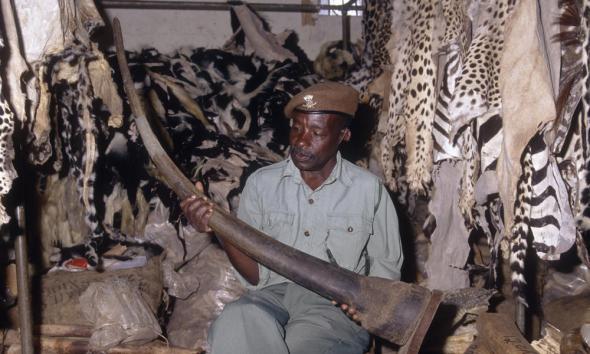
It is without a doubt that Asia is the number one peddler in illegal animal parts trade that spans from China to Vietnam, Thailand to Malaysia and, India to Egypt. We have all viewed from time to time animal parts traded on the streets in Hanoi or within Hong Kong but how bad is the trade in other nations that are not necessarily always placed under the spot light or even asked to curb their illicit and illegal organised traders?
The illegal wildlife trade in Asia is mostly viewed in processed format in medicine shops and street vendors which is rarely seen in raw format of which we have explained on many occasions within this five part written documentary.
But who are the other peddlers and transporters/couriers? And how is it finding its way back into the market from those that confiscated it who are supposed to be trusted law abiding citizens, to traveling from Africa into Asia, and who are the distributors, and what routes are being taken to even companies being used to transport it unknowingly and corruptively?.
These are the many questions that are difficult to answer unless intense investigations, covert intelligence is gathered to operations outside of Africa are ordered that can be intensively frustrating, tiring, dangerous but rewarding once one hits the sources the areas that need one hundred per cent attention which in turn leads to arrests via monitoring the spider web of depict and corruption from the buyer, to the poacher, from poacher to disturber and then couriers and peddlers to the common market and more.
The illegal wildlife trade is so complex it can take years to infiltrate, befriending highly sophisticated governmental or military trained criminals of which you’re on your own in no man’s land not knowing if your position or colleagues position could be compromised at any minute placing your life in danger to the entire 1-5+ year operation and intelligence gathering at a dead end.
Many organisations never reveal such intelligence work and gathering simply because we are dealing with government run armed and highly volatile individuals that are only after monetary gain. Should one disrupt that gain and “your” position is compromised then the entire criminal syndicate gangs descend lower in the black market placing more critically endangered species of flora and fauna in jeopardy of extinction.
It’s frustrating when one reports wildlife crime knowing that the nations that one has been viewing and investigation on, just simply turn a blind eye or are not willing to order law enforcement to take imminent and immediate action to shut these traders down. However working in great detail, and gathering years of evidence then proving this work can be very rewarding to knocking out a syndicate thus destroying the entire communication web which in turn preserves our biodiversity more as each mission concludes.
Asia and United Arab Emirates in particular (part off Asia) is one area that we have been scrutinising now for some time as of recent confiscations and arrests in 2011 and 2012 and recent surveys that we have looked into and freedom of information requests, requested that has taken us over six months to almost a year to obtain from very reluctant but proud nations that find such findings of crime that is then independently reported embarrassing (hence why one has to tread with caution to respecting those that we are working with to ascertain positive and rewarding conclusive results).
Within Dubai September 2012 Dubai customs foiled an attempt to smuggle 215 pieces of ivory in to the nation within an estimated value of 15 million dirhams which is Dubai currency. The seizure was hidden in “company haulage” as usual with most large illegal importations and was seized at the port of Jebel Ali.
Yet again the shipments where all from African states, of which the shipment was concealed in food containers that had white beans within them, the ships contents had come from the farming areas of South Africa”. Why these ports are not checked within South Africa and Africa alone of which we have been tipping individuals off with regards to movements we simply don’t know however most are then seized when entering Asia mainly by sea.
On scanning the containers in Jebel Ali it showed concealed within white bean shipments from Africa the ivory of which only one woman was subsequently arrested and charged under the illegal importation of wildlife parts. Once the crates where taken apart and the seizure added up experts quoted that 108 Elephants where slaughtered for these tusks which is emotionally upsetting and frustrating. The report can be viewed here http://www.emaratalyoum.com/local-section/accidents/2012-11-11-1.525674
Within the United Arab Emirates ivory is big business on the black market of which is rarely sold within shops and malls. Any ivory that is sold is “apparently antique” I suppose this buy and sell site is all antique too of which the users brag on how much they can obtain http://statigr.am/p/388457701835017907_256232306 http://statigr.am/p/359200723472485744_256232306
There is not much call for the Rhinoceros horn in the United Arab Emirates of which brings very little money or interest, however, ivory is a completely different story which can sell just for one delicately carved set of beads up to and beyond $25,000 and for a single hand and machine carved ivory horn in the most intricate of detail.
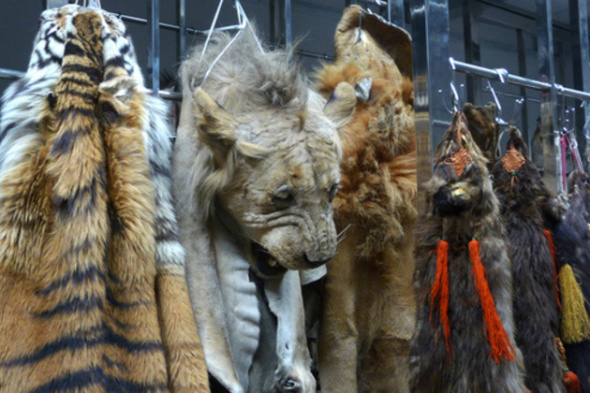
A single horn can fetch up to $100,000 that are mostly sold in hotels, back street markets, classified advertisements using fake names and details to people’s homes. This piece of ivory that would have been lathed then delicately carved by master craftsmen http://statigr.am/p/376159101687947701_224452295 is being sold within a hotel which gives the description “Exquisitely carved ivory and accurate located in Asia at Hotel Yuexiu # # China” as you can see in this link http://www.agoda.com/asia/china/guangzhou/yuexiu_hotel.html the hotel that these dealers are using will be financed of which businessmen in the medicine and antique trade are most likely linked to triad gangs and highly lucrative and organised trade.
Fourteen days ago another arrest this time outside of the U.A.E of which a police officer was caught smuggling ivory into Thailand from Malaysia. The haul was located in the boot of the suspects’ car hidden inside fertilizer bags. A total of 20 Elephant tusks where located of which both the driver and the police officer where arrested. Please view the report here http://www.alriyadh.com/2013/02/04/article807332.html
Moving back into Africa reports on the 8th February 2013 quoted the following;
Defence ministry said on Friday Ugandan troops found large amounts of ivory in a cache of rebel leader Joseph Kony of the LRA leader Ugandan militant in the Central African Republic. Chasing Uganda with the support of experts U.S. military, the law enforcement rebel group hopes to arrest Kony and other fighters required for trial for war crimes before the International Criminal Court in The Hague.
Kony has been accused by groups within the nature conservation society that LRA Ugandan hard line elements of the Ugandan army have been ordered to kill elephants for illegal international traffic in ivory to finance their operations, however, Uganda has denied any involvement in it.
As explained in the previous documentation the sales and trade of ivory unless it is antique and has permits of which peddlers rarely do is sold mainly on the internet and is making large money mainly in Egypt which we wouldn’t of known had we not delved deeper into the Rhinoceros horn trade although we was expecting it.
These marketers know that what they are doing is illegal and could earn them a hefty prison sentence, however where there is money there is happiness and most if not all of those that are peddling in illegal custom made ivory don’t even realise that the Elephant has to DIE for ivory jewellery or other intricate pieces of handmade craftsmanship. This Egyptian buy and sell classified sales site is selling more ivory here http://egypt.souq.com/eg-en/%D8%B9%D9%82%D8%AF-%D8%B9%D8%A7%D8%AC-%D8%B7%D8%A8%D9%8A%D8%B9%D9%89-%D8%A3%D8%B5%D9%84%D9%89-3932364/i/
E-Bay has been repeatedly cautioned and educated on the sales of ivory of which most is illegal to sell however it is still present to even data on how to “spot fake ivory to the real thing” http://reviews.ebay.com/How-To-Tell-Authentic-Ivory-From-Fake?ugid=10000000003245884
The Jimbiya http://www.ebay.com/itm/Yemen-style-JAMBIYA-with-horn-handle-exceptional-quality-/261172218651?pt=LH_DefaultDomain_0&hash=item3ccf13cb1b are crafted mainly in Yemen that is given to mature teenage boys when they reach adulthood. Although the practice is fairly unheard of it still sadly exists and the Rhinoceros are slain for this simple “horn” knife that in reality [wood] handles could be used instead of which the real deal is priced at a staggering $272.0, and that’s cheap compared to newer hand-made items.
Tiger balm is now said to be non-Tiger part containing of which (some) “is” that will have mostly simple healing properties in such as herbal menthol heating agents that one applies to the skin that you can in reality purchase alternative products over the pharmaceutical counter for as little as $5.00 or on prescription.
However “with no methods” of checking the marketers are keeping to strict wildlife/importation and exportation laws then items like these can easily be mixed alongside others of which you’ll never know whether your purchasing “herbal” or actual dead Tiger which is strictly prohibited. http://www.ebay.com/sch/i.html?_trksid=p2047675.m570.l1311.R9&_nkw=tiger+balm&_sacat=0&_from=R40
Tiger bone wine is yet again another illegal property that’s highly craved for in Thailand. http://www.forum.munkonggadget.com/detail.php?id=43566 It’s classed as rare to locate however that’s untrue and whilst the “just legal” zoo’s in Asia that keep Tiger’s carry on breeding them then we will continue to view this illegal item on the market.
Ivory and Rhinoceros horn up for sale again on Facebook http://www.rumruay.com/tag-%E0%B8%99%E0%B8%AD%E0%B9%81%E0%B8%A3%E0%B8%94.%E0%B8%81%E0%B8%A3%E0%B8%B0%E0%B9%80%E0%B8%9E%E0%B8%B2%E0%B8%B0%E0%B8%9B%E0%B8%A5%E0%B8%B2.%E0%B9%82%E0%B8%AA%E0%B8%A1%E0%B9%80%E0%B8%81%E0%B8%B2%E0%B8%AB%E0%B8%A5%E0%B8%B5.html
Trade routes;
It’s virtually impossible to locate then follow too investigate the entire trade route for many reasons that I have highlighted below briefly.
- All 176 registered CITES nations that have signed the CITES agreement have no real formal environmental police units. They are though all obliged to keep the laws of which Asia is failing too.
- Co-operation from both investigators, customs and freight yards to local police and international law enforcements agencies can be awkward to build relations, good rapport and communication, there is also language barriers and lack of the correct investigative individuals that are non-experienced to non-linguistic which is high priority in monitoring the trade route thus killing demand.
- Investigation units are concerned that they could be actually giving information to “the criminals themselves” that are being paid by wildlife part smugglers to allow trade to pass unchecked through customs thus compromising the entire operation to months if not years of painstaking funded work.
- Trade routes change daily to monthly, along with shipping and airline transport.
- Investigation teams need the full cooperation of customs and law enforcement.
- Wildlife counter intelligence teams are relatively small and rely on funds that they/we need to keep tabs on the criminal’s activity to travelling abroad. Africa and Asia are also massive in square mile footage and knowing where the syndicates are storing within what ports ready for shipment is like looking for a needle a haystack.
- Vessels are routinely tampered with by syndicate gangs that open up and construct concealed compartments. This method of concealment was first used by narcotic gangs in North America of which the Asian syndicates have now caught onto using this as a way to smuggle out and in wildlife part contraband.
The scale of the illegal wildlife trade is alarming. Due to the nature of illicit trade, it is hard to obtain exact figures, but some experts estimate the value of the illegal wildlife trade at 10-20 billion US dollars annually the actual figures that International Animal Rescue Foundation © have from a recent FOIA for 2012 December end are now at 17.7 billion US dollars. While arrests and interceptions are on the rise, they expose only a small fraction of this underground criminal enterprise.
The illegal wildlife trade affects all Southeast Asian nations. The rich biodiversity’s of Indonesia, Malaysia and Myanmar are particularly targeted. Smugglers are frequently caught utilizing transport links through Thailand and Vietnam. However, poaching, transit and consumption occurs in all countries to varying degrees. A significant proportion of wildlife trafficked through Southeast Asia is purchased by wealthy consumers outside the region, in China, Europe and the United States.
Starling scientific facts;
- Massive and irrevocable biodiversity loss - If trends continue, recent predictions show that 13-42% of Southeast Asia’s animal and plant species could be wiped out this century. At least half those losses would represent global extinctions.
- Degradation of natural ecosystems and essential environmental services - Poaching to supply wildlife trade disturbs delicate biological balances. Knock-on effects can precipitate the unravelling of living ecosystems that underpin fresh water supply and food production. With predictions of severe impacts from a changing climate, reducing other man-induced pressures on biodiversity and ecosystems, such as poaching, is imperative.
- Human health is endangered by unregulated trade in wild animals that can spread and pass on viruses and diseases (there have been recent [unconfirmed reports] that Attention deficit-hyperactivity disorder has been (linked) in Asian children to the consumption of Rhinoceros horn by from gestating women. There are no other links outside of Asia that show this and this report has yet to be confirmed as 100% accurate by professional American and European scientists
Some interesting facts here that we can also look upon to be prepared to for a possible poaching incident;
- High profile business trips in Asia mainly China, Vietnam and Thailand will see more wildlife parts ordered of which more men at a rate of 20% will consume and women 13%.
- People in Asia mainly, China, Vietnam and Thailand between the ages off 24-44 years of age will consume more wildlife parts (over that age the rate is just 9% from 45-60 years of age with no real percentage of after that consuming.
- Normal friends and family gathering days will see 31% of Vietnamese, Chinese and Thai’s consuming animal parts of which again females are the most consumers at 33% and males at 30% the age group those that consume the most at gatherings and normal meals are in the age group of 45-60 years of age.
- Festivals and events for example Chinese New Year we would usually see more animals slaughtered in Africa however this is not the case, a total of 29% in China, Vietnam and Thailand consume animal parts at festivals. Males at 28% and females at 29% are the most consumers. Those that are more likely to consume are in between the ages of 18-24 at 32%
- The most shocking though of which we would off thought the medicine trade would be the more likely area to probe to hit the demand and send the message home is in fact wrong. The food trade is the most concerning area. Please read the statistics for requested survey information. This is JUST from MEALS every day. 50% of Chinese, Vietnamese and Thai’s consume more animal parts for their everyday staple diet ruling out that the medicine trade is in fact the largest “problem here”. Male and females stand both at 50% consumption. 18-24 year olds eat a staggering and consume 58% in all three nations that’s (58% per nation). 23-34 years of age stands at 50%,35-44 years of age stands at 51% consumption and 45-60 stands at 42% (This is rather concerning of which can be more easily talked to beat demand than going for the pharmaceutical businesses that are reluctant to help).
- The consumption of wildlife parts though in the medicine trade I.e. Traditional Chinese Medicine is very shocking as we did truly believe that in all three nations that the TCM/TIM trade would be the most out of all consumption (we were wrong and this is now concerning) the following figures stand at 6% whereas consuming in (food) stands at a skyrocketing 50%. More Asians are NOT relying on TCM for medicine – 2% males still consume with (-) no percentage of females consuming for medicine. HOWEVER between the ages of 18-24 are the [highest] users with 5% using illegal animal parts in TCM/TIM.
The following survey was taken in high streets, shopping malls, online surveys, and basic door to door over a period of 12 months. Who is driving the food trade? Are there food manufactures placing illegal animal parts within Asia that need to be targeted? And if there is only based on recent and VERY accurate figures only 5% of 18-24 year olds consuming illegal wildlife trade then we need to seriously start targeting these individuals to drive down demand through awareness and education.
The trade routes;
The illegal wildlife trade routes start in Africa and are networking from the following regions;
- Southern Africa and Central Africa are the main TRADE routes that then move to the ports of mainly South Africa. DR Congo, Zambia, Mozambique and Tanzania see’s routes forming that travel to the South Africa again, Tanzania, and Kenya (These shipping ports and airports have been for the past 9 months of some interest to us)
- Both Southern and Central African routes are not “always” moving straight through to China as we did realise but are in fact traveling direct to Vietnam, Thailand, Malaysia, Indonesia and Singapore and Burma
- Based on intelligence more illegal animal parts are/have been moving from South Africa in to India that then travel from India into Vietnam, Burma, and China.
- Following the main trade routes from central and southern Africa smuggled animal parts then end up in traveling into “South East Asia” as well this is another separate trade route used by smugglers to take the long route into main land China and Japan. This type of trade route could also be seen as “drop of zones” to sell and then distribute further
- Northern India is a very large focal point from which animal parts go direct from South Africa being that the main ports in to India then moving into China.
The following listed above is based on “snippets” of intelligence that we have acquired of which we cannot place into the public domain any furthering information on this. However we are not satisfied at the lack of cooperation from customs and excise in Africa that must as a CITES signatory take imminent and immediate action to cease all illegal wildlife parts from moving in and out of the ports, improve security in the ports, move corruptive individuals out via internal company investigations and communicate freely with others to combat trade moving into Asia thus decreasing demand greatly.
Shipping container ports of interest that are and have moved illegal wildlife parts out of South Africa to Asia are listed below;
- Richards Bay
- Durban
- East London
- Port Elizabeth
Shipping container ports of interest that are and have moved illegal wildlife parts out of Kenya to Asia are listed below;
- Mombasa
Alternative container ports of interest that have moved illegal wildlife parts out of Africa in “general” into Asia – Please note these are (covering all trade routes of interest that are moving high quantities of [ivory, Rhinoceros horn, Pangolin meat, and other critically endangered parts]
- Harare (is linked to container ports)
- Cabinda
- Luanda
- Lobito
- Kribi
- Boma
- Matadi
The following listed are moving illegal animal parts out of Africa of which needs thorough intense monitoring, updated security, corruption removed, communication intelligence networks placed within, regular updates on vessels that are moving in and out of ports to cease and hit demand before it enters Asia. Carrying out such scrutinising, surveillance, and regular checks on vessel modifications one can then view who the large couriers are thus terminating [the middle connection] immediately and increasing arrest rates.
We are more than aware that half of the seized Ivory and Rhinoceros horn that travels through these ports is not being “kept where it should within Asia” and then ends up back on the illegal market.
There is plenty of proof on this via internet and ground intelligence that Operation Trojan Horse carries out daily. We have not included China as we truly believe to cease the demand, the demand has to stop IN AFRICA and FULL STOP!
Areas of interest are as follows;
- Port Gentil
- Banul [least concern]
- Chinde
- Quelimane
- Maputo
- Walvis bay [least concern]
- Luderitz [least concern]
- Warri [least concern]
- Port Harcourt
- Mogadishu
- Zanzibar region
- Dar-es Salaam region
It must be remembered that there is a huge legal market for wild plants and animals – a market which the illegal trade undercuts, supplants and exploits. Unscrupulous individuals, rogue traders and criminal gangs all threaten sustainable and responsible businesses that provide vital income to some of the world’s poorest countries. The global legal trade in wildlife resources was estimated in the early 1990s to be worth nearly US$159 billion a year in export value. Sixty five per cent of this trade involves timber exports (worth US$104 billion), with fisheries exports constituting a further 25 per cent (US$40 billion).
Trade in live animals, plants, products and derivatives were therefore estimated to be worth approximately US$15 billion annually. The legal trade in protected species broadly flows from range areas – where the species come from – to consumer areas. Some are both significant consumer and range areas. The situation is made more complex by a thriving trade in captive-bred or artificially propagated specimens, which may be farmed in non-range areas and traded internationally. The involvement of intermediate destinations and the consequent re-export trade further complicates the picture and opens up opportunities for illegal trade.
Illegal trade in wildlife is often not conducted directly between range area and consumer area, but specimens may be transported to a variety of intermediate destinations. As with many types of international trade, intermediate destinations are a common feature of illegal wildlife trade routes and can serve five broad functions:
- Funnel locations where shipments are bulked for longer-haul journeys.
- Stop overs and convenient ports – these may be ports where illegal wildlife shipments are switched between different modes of transport. For instance, shipments might be switched between surface and air transport.
- Processing centres – where products made from wildlife are manufactured
- Transhipment centres and “free” trade areas – countries where porous borders, weak legislation and lax enforcement allow the illegal import and export of wildlife to continue unhindered, and provide suitable transhipment locations for wildlife trafficking
- Regional distribution centres – these are close to final destinations and provide places where bulk shipments are broken down into smaller consignments and transported on to the consumer market.
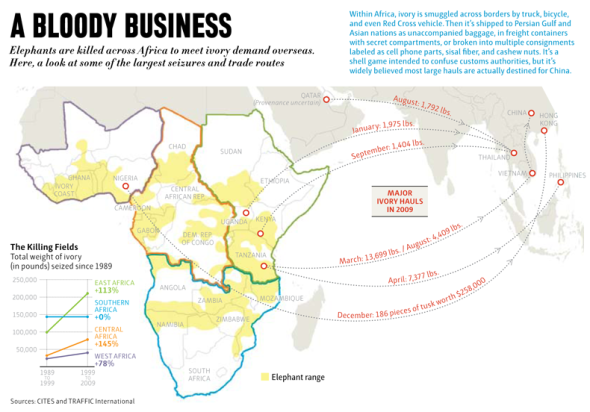
Technique’s to avoid customs and excise is highlighted below;
- Disguising illegal items so that they will pass through customs checks as legal imports. This involves either changing the appearance of the items, or providing fraudulent documentation, or both
- Concealing the illegal items within legal shipments
- Evading customs controls by making wholly illegal shipments
The following examples illustrate the lengths to which smugglers will go in order to conceal shipments:
- Ivory has been dyed to appear like wood and concealed in timber shipments
- Rare bird chicks have been mixed with shipments of hen chicks from India
- Rhinoceros horn concealed inside statue’s made from plaster of Paris
Other methods;
Traditional Asian medicine manufacturers operating in the Far East gather shipments of endangered species or their parts and derivatives from all over the world, including tiger bones from India, bear gall bladders from Asia and North America, and musk deer glands and ginseng from China and Russia. The packaged medicines are distributed within Far East markets, and to Europe and North America through commercial shipments and small quantities carried by passengers.
United Arab Emirates;
Historically, the most significant transhipment centres for the illegal wildlife trade have been Hong Kong and Singapore. However, recent research points to the United Arab Emirates (UAE) as a centre of growing importance. The UAE as a nation state has joined CITES, but partly because each emirate in the federation maintains a separate enforcement policy, the record of the UAE overall has been very poor in terms of compliance with, and enforcement of, CITES. There is a bustling free trade zone in the Dubai emirate, and the Blue Souk in Sharjah is notorious as a market where endangered species are openly on sale.
Wildlife smuggling can also be a response to other desires and markets, as in the case of illegal hunting. In November 2001, following a lengthy undercover investigation, the US Fish and Wildlife Service prosecuted five people in Missouri for smuggling endangered leopards and tigers into the US so that they could be hunted and killed. Similar undercover operations in India have revealed that hunters will pay vast sums to hunt and kill endangered species such as tigers, Tibetan antelope, brown bears and clouded leopards.
We must all now start focusing on “outside border operations” instaed of documenting on these activities and wasting public funding and resources.
There is vast ammounts of information on the internet and on the ground of which we are fully aware of wit regards to illegal wildlife trade, we must not and cannot waste time in documenting anymore and now special wildlife law enforcement teams need to be established. Working to survey the problem areas then talking these with force.
Airports and shipping container yards MUST be priority in order to hit the demand even harder until Asia finally gets the message.
Should we fail and just ignore this message then we are failing our flora and fauna of which most will be banished into the realms of extinction through greed and get rich quick opportunities.
Please stay tuned for the final part of [Understanding Poaching]
Thank you
Dr J C Dimetri Director V.M.D, B.E.S, Ma, PhD , MEnvSc
info@international-animalrescue-foundation.org.uk
NOT GOOD ENOUGH INTERPOL - WE NEED MORE TEAMS WORKING WITH US
REPORT SERIOUS WILDLIFE CRIME IN THE LINK BELOW
REPORT SERIOUS ENVIRONMENTAL CRIME BELOW
http://www.interpol.int/en%20%E0%B9%8F%E0%B8%9F%E0%B8%9D%E0%B9%8F%E0%B8%9F%E0%B8%9D/Forms/EnvironmentalCrime
Road to Nowhere - Syria Conflict Rages

WELCOME TO MY WORLD - I AM BEING FORCED AT THIS AGE TO FIGHT FOR MY FREEDOM, WILL YOU HELP ME BY ASKING YOUR GOVERNMENT TO STEP IN?
AMERICA AND EUROPE HAVE NO INTEREST IN HELPING ME TO FIGHT FOR PEACE
DO YOU THINK THAT THIS IS NORMAL FOR TODAY’S WORLD, FOR A CHILD TO BE FIGHTING WITH A RIFLE? IF SO THEN DON’T BOTHER READING!
WARNING YOU MAY OR WILL FIND SOME IMAGERY AND FILMS EMOTIONALLY DISTURBING
WE HAVE GIVEN YOU PRIOR WARNING BEFORE CONTINUING TO READ, VIEWER DISCRETION IS ADVISED - WE ADVISE THAT ONLY THOSE OVER 18+ VIEW AS OF WAR CRIMES AND FOOTAGE
Syria dates back to some 65 BC and being one of centres of Neolithic culture was once a fine and majestic nation drenched in ancient history and being one of many nations that holds such vast religious artefacts dating to the lord Jesus Christ and roman era when Emperor Alexander Severus, who was emperor from 222 to 235 AD ruled that brought many fine riches to the country that can still be located to this day within archaeological explorations and museum’s outside of Syria where safety is a [relative comfort zone] for many thousands of people that have fled the on-going political uprising and coup.
Syria is significant in the history of Christianity Saulus of Tarsus, better known as the Apostle Paul, whom was converted on the road to Damascus and emerged as a significant figure in the Christian Church at Antioch in ancient Syria, from which he left on many of his missionary journeys.
The name Syria is derived from the ancient Greek name for Syrians, Σύριοι, Sýrioi, or Σύροι, Sýroi, which the Greeks applied without distinction to the Assyrians, However, the discovery of the Çineköy inscription in 2000 seems to support the theory that the term Syria derives from Assyria.
The area designated by the word has changed over time. Classically, Syria lies at the eastern end of the Mediterranean, between Egypt and Arabia to the south and Cilicia to the north, stretching inland to include parts of Iraq, and having an uncertain border to the northeast that Pliny the Elder describes as including, from west to east, Commagene, Sophene, and Adiabene.

Syria has always been a relatively “peaceful” nation however with strict Arabic laws with which men have to act responsible, and women have to cover and not show their faces similar to the once Taliban ruling in Afghanistan where woman where ordered to wear the Burka or face the fear public flogging or even stoning to death.
I [quote] peaceful as the nation has since late 1883 to present ruling from President Taj al-Din al-Hasani 1885-1943 to President Ahmad al-Khatib 1933-1982 to now President Bashar al-Assad from 1965 to present been forced into a regime of silence.
Should anyone dare speak out against the dictatorship of the present and past presidents which I have only included a handful then the normal punishment for this would be beheading or brutal barbaric torture ordered by the governments special police force better known as the Syrian military intelligence force, although they were moderately tame compared to the “real” emotionless, callous, criminally psychotic barbarians of the Syrian Secret police better known as the SS.
The Secret Police where/still are the most fearsome that compromised some brutal and heartless thugs hell bent on any form of torture they could use on its own people and, those that dared to invade.
When the United Kingdom sent special forces from the Special Armed Forces into Baghdad that subsequently dropped special tactical soldiers within the wrong location of the Syria the Special Police where soon on to the remaining S.A.S soldiers that were subjected to cruel and torturous Mr nice guy and Mr bad guy outright torture of which they had their jaws broken, teeth smashed in, teeth wrenched out, and forced to drink and eat their own faeces to public humiliation.
Since the invasion of neighbouring Iraq Operation Desert Storm from 2nd August 1990 – 28 February 1999 that eventually led to the defeat, capture and death of the dictator President Saddam Hussein Abd al-Majid al-Tikritiand other Arabian nations that being Afghanistan, Libya and uprisings in Egypt the tension has also since spoiled over into Syria that is now more than out of control it’s a killing no go zone which the Media and the Press fail to report on correctly out of sensitively mostly, and fail to show to the world what is really happening with both the United Kingdom, France and American government’s more interested in the Mali and Somaliland conflicts which has again created mass refugee camps, crime poverty and environmental crime and destruction.
The Syrian conflict or uprising as it is more commonly known by the people of Syria that want a more structured leadership, freedom of speech/expression without death armies kicking their doors in and a free and fair democracy began March 15th 2011.
The conflict is now raging out of control which Russia, Belarus, Iran, China and North Korea are funding in one way of the other the corrupt and fascist dictator 48 year old President Bashar al-Assad that has ordered his henchmen to use live rounds, missiles, and heavy air to ground and artillery against innocent members of the public that are fighting for freedom.
The conflict is between forces loyal to the Syrian Ba’ath Party government and those seeking to oust it that has seen many innocent murdered, tortured, and slain in cold blood by government armed military using tanks, jet planes and anything that can tear these freedom fighters apart.
The uprising started in early March 2011 with peaceful marches and protests that were similar to that of the Egyptian and Libyan uprising, however embarrassed and angered that his countrymen and women would dare speak out against him “President Bashar al-Assad regime” he then demanded and ordered the military into the protesters area in the southern city of Daraa, sometimes called the “Cradle of the Revolution
President Bashar al-Assad gave only a minute ultimatum. “Cease your actions now and go back to your homes or face the consequences”. The protestors stood their ground growing larger by the hour and day, aggressive at the lack of response and actions from the President of which he then ordered on March 15th 2011 the most bloodiest and brutal bloodbath that makes the Libyan conflict look relatively peaceful. The people in Daraa came under intense shell and mortar rounds attack killing hundreds.

President Bashar al-Assad ordered immediately armed troops and tanks into the city where protestors where coordinating “very peaceful unarmed” demonstrations. The brutal and psychotically deranged mentalist then ordered his own people that being the troops from the Syrian Military to open fire on thousands off [unarmed and peaceful] protestors slaughtering unarmed innocent mothers, children and fathers in cold blood.
The protests then marked the real uprising in April 2011 which soon after turned into a more personal issue and brigades where set up to take on the Syrian army that have since, the blood bath of March 2011 pummelled most off the nation in the following cities killing thousands and reducing homes, businesses, schools and hospitals in Aleppo, Idlib, Latakia, Tartous, Homs, Damascus, Daraa, Deir Ezzor, and Hama to complete rubble whilst Britain is more concerned about a horse meat scandal that they should have been monitoring more closely and America more concerned about the “fiscal cliff deal” than really the innocent being slaughtered and tortured by the al-Assad regime in Syria.
Estimates of deaths in the Syrian civil war, per opposition activist groups, vary between 50,130 and 66,955, the latter figure combining several sources. On 13 February 2013, the United Nations put out an estimate of 70,000 that had been brutally murdered in the war mostly all by Syrian Army and the Syrian Secret police.
UNICEF reported that over 500 children have been killed by early February 2012. Another 400 children have been reportedly [arrested and tortured] in Syrian prisons. Both claims have been contested by the Syrian government. Additionally, over 600 detainees and political prisoners have died under torture. By the beginning of February 2013, the opposition activist group SOHR reported the number of [children killed in the conflict had risen to 3,717], while at the same time 2,144 women were also killed.
The overall deaths include the following that some may find emotionally upsetting to read;
The number of fatalities in the conflict, according to the Syrian opposition website Syrian Martyrs, is 54,601, updated to 18 February 2013. The number includes 6,923 rebels, including 35 foreign fighters, but does not include members of the government security forces or pro-government foreign combatants who have died. 472 foreign civilians who have died in the conflict are also included in the toll, most of them, 401, being Palestinians. The Syrian Martyrs number is significantly higher than the ones presented by other organisations, including the UN, one reason being they record deaths even when no name is given for the reportedly killed individual.
Al Jazeera journalist Nir Rosen reported that many of the deaths reported daily by activists are in fact armed insurgents falsely presented as civilian deaths, but confirmed that real civilian deaths do occur on a regular basis. A number of Middle East political analysts, including those from the Lebanese Al Akhbar newspaper, have also urged caution.
This was later confirmed when in late May 2012, Rami Abdulrahman of the Syrian Observatory for Human Rights, which is one of the opposition-affiliated groups counting the number of those killed in the uprising, stated that civilians who had taken up arms during the conflict were being counted under the category of “civilians”.
Most of the deaths were recorded by the United Nations between the 11th March 2011 and the 12th February 2013 that numbered a staggering 70,000 slaughtered Syrian people. April 2011 though was what many reporters and war correspondents called the “bloodiest day of peaceful protests in the world”.
April 2011 the start of mass murder the tanks rolled in and opened fire;
Dozens of people were reportedly killed after troops and armour flooded into the southern city of Dera’a and opened fire on residential areas, at random without [warning] killing innocent mothers and children.
Amid growing international condemnation at the mounting death toll in Syria, where more than 100 protesters were killed on Good Friday alone, members of the UN Security Council were considering a statement being circulated by a British-led group of European countries, which condemned the killing of hundreds of Syrian protesters, however the statement didn’t stop the fighting and was seen as a “verbal ticking off” in our eyes a slap in the face to the people of Syria crying out for help daily.
The statement, which was proposed with France, Germany and Portugal, called for an immediate restraint, an end to the state of emergency, and an independent investigation into the civilian deaths. It was released on Tuesday and approved by China and Russia, a western diplomat at the UN said.
The diplomat said the measure was aimed at “putting Syria on notice” that the Security Council was closely monitoring developments. “There may be talk of sanctions,” the diplomat said. “At present the focus is on releasing as strong a statement as is possible and securing the reforms that Syria has promised”.
The diplomat’s comments came as the United States threatened to impose sanctions on Mr Assad and his henchmen in a significant policy shift. Placing sanctions though against a nation would only be affecting the people that need food, water, fuel and most of all help.
It was quoted;
“The brutal violence used by the government of Syria against its own people is completely deplorable,” said Tommy Vietor, a spokesman for the National Security Council quoted.
The Obama administration has been criticised for its perceived reluctance to criticise Mr Assad, a US foe who is nonetheless seen as a bulwark against instability on the Syria-Israeli border, even as Nato has bombed Libya.
But US sanctions alone are unlikely to have much impact on Mr Assad, who has abandoned all pretence of restraint in recent days. When the tanks rolled into Dera’a, where the uprising against the government first began, there were no protesters on its streets. It was 4.30am and most people were still asleep, though some were walking towards mosques for dawn prayers.
From loudspeakers in places of worship across the city, imams broadcast frantic messages warning people to take cover – but it was too late. Without warning, the firing began. They entered the city from each of its four corners and just started shooting,” a resident of Dera’a said. “They are breaking into people’s homes and opening fire into their houses.”
Witnesses estimated that up to 5,000 troops, supported by armoured personnel carriers and at least seven tanks, advanced on the city. Amateur video footage smuggled out of Dera’a showed soldiers erecting mounted machine guns before opening fire. The nearby border with Jordan, from where the explosion of artillery shells was clearly audible, was sealed off to prevent escape.
The wounded were dragged into nearby houses, which were turned into makeshift hospitals, blood dripping onto living room floors. Some activists said that 25 people had been killed, but others said there was no way of verifying the death toll. There is no way of knowing how many casualties there are because they are still lying out on the streets and you can’t use ambulances because the security forces are hiding inside them,” said Ausama Monajed, a Syrian political activist in touch with people in Dera’a.

“The bodies of two Syrian children, killed by Syrian Army shelling, lie on the street near Dar al-Shifa hospital in Aleppo, Oct. 11, 2012.”
Security forces also staged similar raids in Douma, on the outskirts of Damascus, while at least 13 civilians were said to have been killed since a military operation began in the coastal town of Jabla.
WARNING SOME IMAGERY YOU WILL FIND DISTURBING - 22+ AGE IS RECOMMENDED BEFORE VIEWING - SOME OR ALL IMAGERY YOU WILL FIND UPSETTING
WHAT THE PRESS DON’T SHOW YOU
Video footage from Jabla showed gunfire being directed at unarmed protesters marching down a street. As the shots rang out, the demonstrators sat down on the road, only to come under fire again. One man, shot in the back of the head, was seen being carried back by fellow protesters as the gunfire continued. A second clip showed another man dying from a gunshot wound in his neck.
The change in tactics appeared designed to keep protesters from gathering on the streets, a strategy that smacked of desperation, Mr Monajed said. “They have made up their mind, they are going to use the army now because they know the end is close,” he said. “The more emphasis we put on non-violence and the more brutal they become, the shorter this will be because there will be more defections from around the regime.”
There were unverified reports that some soldiers and junior officers involved in the operations in Dera’a had joined the protesters. But observers said the large-scale military defections seen in Libya and Egypt were unlikely to be repeated in Syria, where the vast majority of senior officers come from Mr Assad’s Allawite Shia sect, a minority that stands to lose its privileges if the Sunni majority comes to power as a result of the uprising.
December 24th 2012 Warplanes used - a brutal and outright bloody attack on innocent civilians;
Scores of people who had been [without bread for days] were killed when Syrian (warplanes) bombed a bakery in the western village of Halfaya, opposition activists quoted that Sunday.
More than [100 people were killed], the opposition Local Coordination Committees of Syria said. The death toll could rise, the activist group said. An activist who oversaw the burial of [many bodies] said at least 109 people died.
Hassan Al-Rajb told reporters that 69 people were identified and buried, while 15 others were laid to rest without being identified. At least 25 more bodies were still at the site, but hospital workers said the roads were cut off and they were unable to reach the bakery, he said. The hospitals cannot handle all the wounded, he said.
There were dozens of dead thrown in the street. The residents were shocked and in a [state of fear]. It was chaotic,” Mahmoud Alawy said.
Videos posted on social media that day purported to show the aftermath of the attack. Many bodies had limbs apparently blown off, and others lay bloody in the streets and in rubble strewn over a sidewalk. Uniformed Free Syrian Army soldiers and civilians scramble to pull survivors out of the carnage. The Syrain Intelligence Forces then restricted access to the site and censored many photography and videos to even lying that it was an American attack two years ago in Kuwait.
The town has lacked the ingredients for bread for about a week until an aid group delivered provisions that Saturday, Alawy said. Hundreds of people lined up at the bakery on Sunday.
Al-Rajb said the town has three bakeries, and one opened at 1 p.m. Workers began to distribute the bread two hours later. He was on his roof about 200 meters (about 219 yards) from the bakery about 4 p.m. and saw a plane overhead. He scrambled toward the scene when he heard cries of “Emergency! Emergency!” he said.

“The first floor collapsed on the second floor, and four rockets were fired into it,” he said of the attack. Alawy claimed the government has been targeting large gatherings of people with artillery shells in the recent days since the Free Syrian Army liberated the town from Syrian forces.
About an hour after the bakery attack, 15 shells were fired into Halfaya from a nearby town, Al-Rajb said.
The Hama Revolution Command Council, a network of activists affiliated with the FSA in Hama province, said a MiG warplane bombed the bakery. Many Syrians face food shortages and other needs as winter weather sets in. The United Nations estimates that more than 2.5 million need humanitarian assistance urgently and immediately.
Earlier in the week, opposition groups also said rebels and regime forces battled near a hospital in Halfaya. Twenty-five people died there, the LCC said.
Hospitals attacked;
At least 40 people were killed in an airstrike on a key hospital in the besieged city of Aleppo, a rebel the attack targeted the Dar al-Shifa Hospital and that the dead included two nurses.
The hospital is one of the main sources of medical help for people in Syria’s commercial hub. Video posted by activists showed a collapsed building adjacent to the hospital. The blast appeared to have hit the hospital’s front lobby, which is often crowded with patients, civilians and rebels. The hospital had been attacked earlier this year when an artillery shell hit its [maternity ward].
Schools attacked 5th December 2012 - A sad and emotional day;
Speaking out in the wake of a deadly mortar attack on a school outside Damascus, the United Nations Children’s Fund (UNICEF) today declared that strikes on schools during the Syrian conflict are “unacceptable.”

UNICEF condemned the shelling of a school near Damascus that killed a number of students and a teacher,” said the agency’s Middle East and North Africa Regional Director, Maria Calivis, in a statement.
Since the violence in Syria began, schools have been looted, vandalized and burned, Ms. Calivis added. This is unacceptable. Schools are, and must remain, zones of peace.
According to media reports, at least 28 students and a teacher were killed when a mortar hit the Batiha School in al-Wafidin camp, a community 20 kilometres northeast of the capital that is home to about 25,000 people displaced when Israel captured the Golan Heights during the 1967 war.
DEADLY FIGHT BACK – 9 HOURS AGO 21 FEBRUARY 2013;
At least 53 people have been killed in a car bombing near the headquarters of the ruling Baath party in Syria’s capital, state media said. Around 200 others were hurt, it claimed, adding the atrocity was a suicide attack by “terrorists” battling President Bashar al Assad in a two-year uprising.
The attack was “carried out by armed terrorist groups linked to [al Qaeda] that receive financial and logistic help from abroad,” the ministry said in a statement, using government terminology for rebels battling the Syrian regime.
Most of the victims in the Mazraa district of Damascus were reportedly civilians, including children, possibly from a school behind the Baath building, and it was the deadliest attack inside the capital in nine months. The UK-based Syrian Observatory for Human Rights, which monitors violence via a network of sources inside Syria, said at least 42 people were killed.
The organisation reported the device was detonated at a checkpoint close to the Baath party building, about 200 metres from the Russian embassy, and members of the Syrian security forces also died. Syrian television broadcast footage of several bodies along a main street and fire fighters dousing dozens of burning vehicles.
Debris was spread over a wide area and black smoke billowed into the sky. The windows of the Russian embassy were blown out by the blast but none of its staff were hurt, Russian news agencies reported.
One local resident said: “It was huge, everything in the shop turned upside down.” Damascus has so far mostly avoided the large-scale violence that has destroyed other Syrian cities.
But rebels who control districts to the south and east of the capital have been attacking Mr Assad’s power base for nearly a month, and have carried out devastating bombings several times in the last year.
The United Nations has said around 70,000 people have died in the uprising since it began in March 2011. The attack came as the opposition umbrella group, the National Coalition, was meeting in Cairo, Egypt, to discuss proposals to hold conditional talks with Mr Assad’s regime.
TERROR CELLS;
The number of Jihadist groups flooding into Syria two years after the start of the uprising is threatening to eclipse the power of mainstream opposition groups as well as the authority of the Free Syrian Army.
One of the increasingly influential groups, Jabah al Haq (The Front for Justice), quoted that Jihad is spreading across North Africa and the Middle East and will not stop at Syria but will include Jordan, Lebanon, Iraq and even Israel. The frontline in the Battle for Aleppo is constantly changing. You know when you are there the people disappear. In these parts of the city only fighters are on the streets, in battered buildings and destroyed alleyways.
There is nothing left anymore. It is a frightening kill-zone. The sounds of rockets crunching into buildings, the whistle of high velocity rounds passing a few feet above your head, the scream of men shot by snipers never stops, or if it does, it is not for long. The fighters on the rebel side are made up of a mish-mash of defected soldiers, the Free Syrian Army and a growing number of Jihadists some are from Syria many are from abroad. Jabah al Haq men took to their truck weaving passed blown up cars, and homes passed streets with huge tarpaulin sheets strung across to give protection from government snipers.
Abu Obaeda, a former soldier with a sniper rifle hung over his back, described the front as ‘cold’ with little real fighting. But even as he spoke machine gun fire drowned him out. A man was hit and his comrades were organising a truck to speed him away while attacking the government forces.
The Jihadists wouldn’t say how many men they had but said they were fighting 200 government soldiers supported by as many government militia, the Shabiha.
International Animal Rescue Foundation © are like many people and other non-governmental organisations concerned about the fighting however were also growing increasingly concerned about the zoo’s within Syria too, along with the natural habitat, conservation, and domestic animals such as canines and felines and more.
We are unable to even move into such a highly volatile and dangerous nation with sporadic fire fights and unpredicted shelling in all areas. The war has been raging now for almost two years and without help moving in then we will regrettably lose these vulnerable and endangered species.
Within one zoo that we are growing increasing concerned about are Caracal’s, Arabic horses, Desert Fox, Oryx, Bengal Tiger, Bears and Asian Elephants, Rhinoceros and Hippo plus many more animals that are under extreme threat. For security reasons we are treading carefully and since October 2012 when help was sent we have now since received a reply back 21st February 2013 requesting immediate help of which we are now planning how to solve this very difficult and sensitive problem.
Dr J C Dimetri V.M.D, B.E.S, Ma, PhD , MEnvSc
Director international Animal Rescue Foundation
Speak up for the Voiceless
FUNDING AFRICAN WILDLIFE SURVIVAL
info@international-animalrescue-foundation.org.uk
“PLEASE BEFORE YOU SLEEP - SAY A PREY FOR ME AND NEVER FORGET WHAT WE ARE ALL FIGHTING FOR AND WHY WE ARE FIGHTING”
“WE FIGHT FOR PEACE AND DEMOCRACY AND I AM BEING FORCED AT THIS AGE TO FIGHT FOR FREEDOM - FREEDOM FOR MY CHILDREN”


Unrelated news
News in on 21st February 2013 -
On our last document, part three of the Illegal Animal Parts Trade, our counter intelligence teams passed on all relevant information with regards to the illegal sales and peddling to importation of Rhinoceros horn and Tiger parts.
Operation Trojan Horse our elite anti poaching and animal part trade investigation team secured the arrest with Vietnamese officers and wildlife enforcers three Vietnamese individuals of which they where as of yesterday in custody. They have now been released and are due in court in the next 3 days.
On locating the objects of interest we then gave the site owners the ultimatum that should the illegal animal parts not be removed and full cooperation with us be taken in the 48 hours as requested then we would close the site down and enforce more tougher and harsher actions.
The owner of the site agreed that a violation was present and the offending objects and entire pages where removed within 5 hours of our email and subsequent telecommunications to them. The full document can be read below via Facebook of which their reply into removing the violations was answered in Vietnamese.
Should you become aware of a wildlife crime violation then we ask you to report to our investigation unit with immediate effect, however should we know, locate or view that your violating rules we will not under any circumstances tolerate such illegal activity of which you will only be given one warning to remove [should] we see this on sites. We will bend over backwards too, to ensure that an arrest is made under the breach of CITES laws.
https://www.facebook.com/notes/international-animal-rescue-foundation-world-action-south-africa/violations-under-the-cites-agreement-1976/437498456330064
Thank you
Conservation Investigations Crime Unit
CICU
externalaffairs@international-animalrescue-foundation.org.uk
Environmentalism Chapter 24 - Understanding Poaching Part III
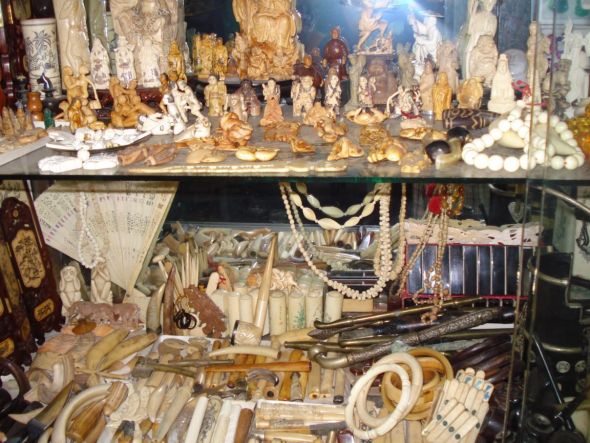
The demand for Elephant ivory, Rhinoceros horn, critically endangered Siberian Amur or Leopard skins, Tiger bone wine, to just over 300 hundred other animal parts is increasingly growing out of control with very little policing on the ground and the “internet” within Asia and outside from CITES registered nations.
Poaching and demand is so out of control it needs to be addressed immediately or were going to view in the next ten years many of our large and very well-known mammals and non-mammalians wiped of the face of the earth for greed that will then start another poaching endemic off with non-endangered species.
In parts one and two of “Understating Poaching” of which this is part three of five we look further into the field of demand and deceit with regards to the new marketer/peddler that is mainly anonymous, unseen and practically beyond traceable unless you know what you’re looking for or working within conservation crime investigations to sourcing these criminals then closing them down which is by far a lot easier said than done considering you need everyone to work together to make the seizure and then the arrest of all involved down to the poachers right through to the kingpins themselves.
The World Wide Web more commonly referred to as the (internet) which dates as far back as 1800 and born in the United States is now being used a peddling tool to sell and trade in literally anything with most companies being completely legit selling and distributing legal everyday items from groceries to clothing, automobiles to even ships and aeroplanes, however it has a much murkier side.
Back in the in the 1960’s when the internet first really evolved the term “packet switching” was used which basically refers to digital networking communications method’s that groups all transmitted data, regardless of content, type, or structure into suitably sized blocks, called packets.
This type of data grouping was used by the United States Army and NASA with very little evidence if any of the public able to access the internet within this ere and even if they could computers and not “personal computers” or PC’s as they are referred to now would have been colossal in size, using more energy than 1000 computers combined racking up thousands of dollars in electricity usage.
Although the first concept of the computer dates back to the 1800’s when “punch cards” where used of which Joseph Marie Jacquard developed a form of (textile computer) to help him in the textile business which allowed his loom to weave intricate patterns automatically the formal basics of computer technology didn’t really take off until 1837, it was seen as the fusion of automatic calculation with programmability that produced the first recognizable computers to date.
Then in 1880 Herman Hollerith invented the recording of data on a machine-readable medium that then started the process of the computer technology to evolve still though being vast in size and relatively scattered over large areas. The key punch machine was then invented soon after from the concept of the idea going back to the punch card era, so in reality one could say that the computer and now personal computer down to smart phones and more was actually invented with regards to Joseph Marie Jacquard thought of easing the work load in the textile business. Little did one know though the black side to the internet and illegal activity was to take off on the “computer” that then linked up to the internet.
1940-1945 then saw the computer take of which was used primarily in the 1940-1945 world wars to communicate via various means from Morse code to again the “punch machine” methods, of which the computer still unknown to the public and the “internet” started to come together in the 1960’s again used by the United States Military within aerospace and aviation technology and design to communicate and send and retrieve large reams of data encrypted and non-encrypted.
In 1941 Konrad Zuse then devolved the Z3 better known as the Zuse Z3 that then started the internet and computer to computer race of which has seen some amazing ideas created along with software but most importantly of all bringing people together from thousands of miles away at the flick of a few switches although the Z3 (Zuse Z3 still had a long way to come) to make it into the computer revolution. The black trade was looming.
Then in 1998 at a cost of $6500 the first web server evolved named “NeXT Computer” used by Berners-Lee at CERN, with mouse, keyboard and earth net the computer and the internet then “combined” bringing not just people together but regrettably crime.
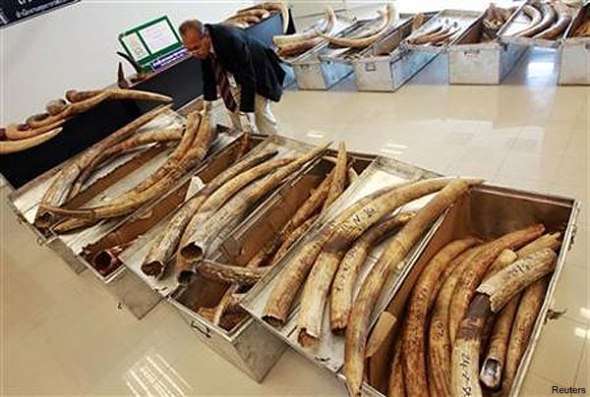
Being fairly still expensive to purchase the modern day Personal Computer (PC) can range now from $500 to $19,000 depending on size, screen, data storage, and masses of software.
The wildlife trade, tropical pet trade, to arms and narcotics are routinely hit on “the ground” in an international spectrum and with illegal peddlers and syndicates to narcotic barons being the prime targets of policing authorities and “trade being the money maker” to finance wars, civil disobedience and illicit trade then the internet was seen as a new weapon to evade arrest and detection “to a certain level”.
The internet is seen not just seen any more as a fancy commodity but as an anonymous marketing tool to the criminal and a type of (surveillance) weapon of which criminals can watch us, and the policing agencies knowing what to expect where to expect it, to then planning two steps ahead using an array of code words, encryption, pseudonym’s and software to hide their computers personal address or (IP) - Internet Protocol address.
Law enforcement are able to pinpoint address (IP) details where the computer was purchased, to what (ISP) – Internet Service Provider one’s using to sourcing locations to around 20 to 50 miles from the Internet Protocol address. Web proxies, IP proxies, and Clouds are mostly used by criminal gangs of which when you search for them upon locating illegal trade or pedophiles their IP proxies will always be on thus making searching for these anonymous gangs almost impossible, (However there not as smart as some people out there, and there is always someone watching them and how they operate using sophisticated high grade software and technology). Or you just have the simply dumb criminals that wish to make a quick buck believing that no one is actually watching.
New laws and censorship rules from 2011 to 2012 have been enforced to help tackle illegal wildlife trade on the internet to narcotics to basic petty crime however it’s not working and believe it or not in under 2.1 minutes we can locate an array of illegally operated sites using web proxies to clouds that are operating in nations that are immune from the law enforcement being that mainly “non-European” registered nations where censorship is not a problem, and crime can be pushed from “Vietnam for instance” but using another nation such as Iceland as a “bi proxy” so if criminals are eventually located in (person) whether or not their computers are seized their criminally active domains are untouchable and will continue to run making the internet the all round new tool in illegal trade.
How bad is the illegal wildlife trade on the internet?
The trade is copious with “some” items easily located and others that need more intensive tactics to source. The problems are not just in Asia too. Canada, America, Russia to most of the Balkans, and Great Britain are more involved than one thinks. Crime on the internet involving illegal animal parts is massive and until the policing agencies, wildlife monitoring groups and all 176+ nations that have signed The Convention on International Trade in Endangered Species of Wild Fauna and Flora mandate start to work proactively together then the internet is constantly going to be exploited with criminals buying and selling Rhinoceros horn, Elephant Ivory, fur coats from critically endangered species in the pet trade to illegally produced rugs, medicines and potions from Traditional Chinese Medicine (TCM) to Traditional Indian Medicine (TIM) with some three hundred animal parts for sale.
Please note that all of these individuals that been reported to the International Authorities, Rhinoceros horn that has been located has only just come into the nation with most of it cut into 10kg bags then sold on. This serious breech of animal parts trade is highly illegal and is not being policed correctly.
What items are mostly viewed?
- Vietnam, Ho Chi Minh City – Ivory http://www.vatgia.com/raovat/2951/5807629/ban-trang-suc-bang-nga-voi-that-100.html (banned under law)
- Vietnam, Classified add’s - LH: Vo Dang Khoa, Ho Chi Minh City, Tel. 0906991319 - http://muaban.net/hang-hiem-ho-chi-minh-l59-c730111/ban-sung-te-giac-va-cao-ho-cot-id10994923 (Please view the following that you may find upsetting, if you have Google translate or Chrome I do believe that it will translate automatically for you) These are all Rhinoceros horn sellers that have since with the help of Operation Trojan Horse our Asian Conservation Crimes Surveillance unit has now reported to INTERPOL - http://muaban.net/ho-chi-minh/raovat/tim-kiem.html?q=t%C3%AA+gi%C3%A1c+s%E1%BB%ABng&cat=&min=-1&max=-1&all=0&city=0&page=2
- Province Bangkok – Selling Tiger Bone Wine http://www.rumruay.com/id-50d03f9f0b8564d257000024.html
- Vietnam - Hanoi, Bear Bile http://muaban.net/ha-noi/raovat/tim-kiem.html?q=m%E1%BA%ADt%20g%E1%BA%A5u&cat=&min=&max=&all=0
These are merely 4 of the most common items being sold illegally from Elephant ivory, vast quantities of Rhinoceros horn and Tiger Bone Wine all illegal animal parts, all slaughtered within Africa and Asia and all on classified advertisement sites within Vietnam, Bangkok, and China.
These items where simply discovered going through reams of code words and, encrypted sites that illegal street or shop traders have set up then allowed the sales to market, one such site is even linked to Facebook of which Tiger Bone Wine and the Facebook page in Thai is freely advertised (even though tiger part sales are illegal). https://www.facebook.com/pages/Rumruay/518908294808697 set up on the 20 January 2013.
A report due to be published in 2012 concluded that a growing proportion of wildlife crime is using “deep web” tools more commonly associated with serious financial criminals, drug traffickers and child pornographers.
“The internet has without a doubt facilitated the huge expansion of illegal international wildlife trading over the last decade, rare jewels of the forest can now be caught, boxed and shipped almost overnight just like any other express commodity.
It is a wide-ranging business. Elephant ivory is used for ornaments, and parts of tigers and rhinos are used in traditional medicine or ground down and added to wine. Pelts from leopards and polar bears fetch high sums, while rare reptiles, birds and fish are bought as pets.
There are no precise figures on the scale of the problem. Global Financial Integrity, a Washington-based lobby group, last year estimated the global illegal wildlife trade to be worth at least £5bn. various reporting systems and investigations suggest commercial exploitation of many at risk species has reached – or is close to – all-time high.
Protected live animals and body parts are still traded in shops and markets in cities such as Bangkok and Jakarta, however much of the business is now handled online by middlemen using varying degrees of secrecy.
Previous investigations have found a lot of trade taking place relatively openly on auction sites, via classified ads and in enthusiast chat rooms. Products from rhino, tigers and elephants are often advertised as historical artefacts without documentary proof. Animals caught in the wild are described as captive bred. Acronyms, misspellings and code words are used to evade detection.
Once you know the terminology and you know how to search, then a lot of it is pretty open, so if this is the case then why are nations such as Thailand and Vietnam to China not taking action even though they signed The Convention in Trade of Endangered Species (CITES)
An investigation by the International Fund for Animal Welfare (IFAW) highlighted the sale of 2,275 elephant ivory items on eight different eBay websites in a single week in 2007. The site subsequently banned such sales, but conservationists say sellers simply avoid using the word “ivory” in item descriptions.
In August, for example, a search on eBay’s UK site for “ox bone” – widely used as a euphemism for elephant ivory – yielded more than 5,000 results. An eBay spokesman told the Guardian: “eBay works closely with conservation groups such as the IFAW and goes beyond legal requirements to restrict the sale of ivory products on the marketplaces site. The eBay trust and safety team proactively enforces eBay’s policy on ivory products and works quickly to take action to remove listings of items of concern.”
In 2008 IFAW identified more than 7,000 wildlife products from threatened species being offered for sale in dozens of online auctions, forums and classified ads. Last year it found ivory worth £500,000 for sale on 43 sites based in the UK, France, Germany, Spain and Portugal.
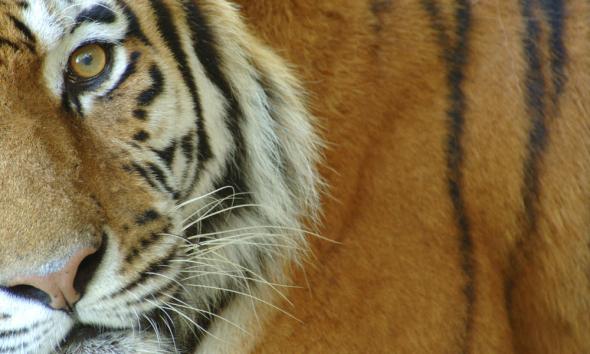
International trade in wildlife is regulated by the Cites convention. Exploitation of around 800 threatened species is largely banned, while both exporting and importing many others requires permits.
A forthcoming report from Traffic, the wildlife trade monitoring network, revealed how researchers in Canada received emails from dealers offering to export coral without required permits by pretending the specimens were glass.
IFAW, which has been working with Interpol, says organised wildlife criminals are becoming increasingly secretive online. The “deep web” has long been used by criminals in other spheres to evade law enforcement. Sites that are not accessible via search engines and which require software to access are used. Communications are bounced through large numbers of computers to maintain anonymity.
Online wildlife trade is seen as a high-profit, low-risk activity by some criminals. A lot is shifting from publicly accessible sites to dark corners of the web.
A report on the ivory trade in the EU published December 2012 by IFAW highlight’s the use of tools such as mailing list servers, password-protected sites and encryption. National and international laws to control the trade often pre-date the online trade, and the internet has made the jobs of those trying to enforce the law and protect wildlife even harder.
However some say the net can also be used against wildlife criminals. Those wanting to train can email us at externalaffairs@international-animalrescue-foundation.org.uk
The internet has made it easier for traders, but it has also helped us research and monitor their activities very closely no matter what technology they use they will not evade capture.
Part four and of “Understanding Poaching” will be in great detail moving away from the African poaching trade and demand and into the European demand and Asian poaching for profit.
External Affairs
International Animal Rescue Foundation
externalaffairs@international-animalrescue-foundation.org.uk
Should you know of anyone selling/illegally trading in animal parts that are strictly prohibited please don’t ignore it and REPORT it to us or law enforcement.
Environmental crimes can also be reported to IFAW/WWF/CITES/Interpol/TRAFFIC/ or your local sheriff/FBI department.
For more information on how you can help please email
info@international-animalrescue-foundation.org.uk
Dr J C Dimetri Director
The bottom video is related to the I.A.P.F (part two is to show and describe how bad the illegal wildlife trade is in Vietnam of which you can view above in the links that have since been reported to law enforcement)
Environmentalism Chapter 23 - Understanding Poaching
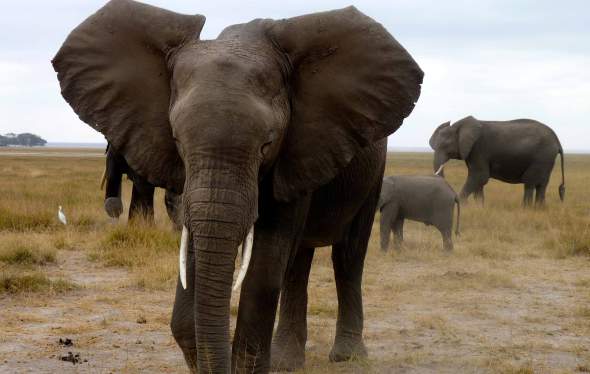
To get to grips with the current poaching crisis and to tackle demand then one has to place themselves in the shoes of the poacher, and the marketer, to knowing the facts and current laws as to why demand is driving the illegal animal parts trade intensely on a large international scale.
As quoted by The Convention on International Trade in Endangered Species of Wild Fauna and Flora in January of this year 2013 trade is vast in size and is not just being driven on the ground, its driven on the internet using simple code words such a “horn” “animal” to “bones” “rugs” and more which is relatively easy to locate.
However it’s frighteningly worrying that the 170+ nations whom agreed to The Convention on International Trade in Endangered Species of Wild Fauna and Flora laws are not obeying by these simple rules nor are they policing or “have created” a wildlife policing networking team to international policing monitoring service to arrest illegal traders, distributors and those that wish to violate and flout the rules.
At this current moment there “are few” law enforcement teams that work within many continents that will take action against smugglers plus working with agencies such as INTERPOL that will with the help of other policing agencies clamp down on illegal animal parts peddlers.
All nations that have joined the Convention on International Trade in Endangered Species of Wild Fauna and Flora that signed the treaty must agree to work on clamping down on these traders, yet still we see in Asia and Africa rules violated time again with many vulnerable, endangered, critically endangered to near threated animal parts and tropical pets on the market for fake medicine’s, bush meat/meat or just the tropical pet trade.
As explained in my previous document February 17th 2013 we cannot just lay blame to the poachers and must now open this extremely harmful trade up to the public for them to better understand as well as tackling the illegal wildlife parts trade outside of nations that are being hit hard, for instance South Africa where poaching of all Rhinoceros and Elephant species is colossally out of control.
I briefly explained 17th February 2013 that syndicates are preying on vulnerable individuals in nations that have been hit by drought, famine, climate destruction to civil unrest that has affected many African nations since the early 1980’s.
With the current destructive climate predictions for the next fifty to seventy years quoted to increase than we need to act fast before we view a complete biodiversity nightmare with species from the Rhinoceros, Elephant, Lion, Leopard, Cheetah and more pushed to extinction.
Before I explain more in depth of how to understand the poaching trade I would like to recommend these two paper book’s in to you that I myself have read with both printed on recycled paper.
Both books explain in great detail the seriousness with regards to the poaching crisis and how we need everyone on board to help. You can purchase the two paperbacks here which I do believe one can purchase in hard back too. http://www.amazon.co.uk/Blood-Ivory-Massacre-African-Elephant/dp/075094157X this is very good read for anyone that doesn’t understand the full extent of the poaching crisis and Killing For Profit I highly recommend to anyone that wishes to learn more about the illegal wildlife trade with regards to the Rhinoceros illegal horn trade http://www.amazon.co.uk/Killing-Profit-Exposing-Illegal-Rhino/dp/1770223347/ref=sr_1_1?s=books&ie=UTF8&qid=1361157582&sr=1-1
Preying on the vulnerable;
The United Nations Refugee Agency has identified for 2013 the following refugee camps that host from 500 to 25,000+ refugees in each camp – Please note this is just for Africa; please also note these figures are factual for January start 2012. Current figures for 2013 haven’t yet been released however International Animal Rescue Foundation © has asked for these figures plus other information that we are withholding.
- Refuges from Angola within camps stands at 128,664 with an extra 16,223 traveling in 2012
- Refuges from Botswana within camps stands at 85 with an extra 3,312 traveling in 2012
- Refugees from Comoros within camps stands at 422 with an extra 0 traveling in 2012
- Refugees from Lesotho within camps stands at 11 with an extra 34 traveling in 2012
- Refugees from Madagascar within camps stands at 289 with an extra 9 travelling in 2012
- Refugees from Malawi within camps stands at 222 with an extra 6,308 traveling in 2012
- Refugees from Mauritius within camps stands at 42 with an extra 0 travelling in 2012
- Refugees from Mozambique within camps stands at 155 with an extra 4,079 traveling in 2012
- Refugees from Namibia within camps stands at 1073 with an extra 6,049 traveling in 2012
- Refugees from Seychelles within camps stands at 42 with (no current record for 2012)
- Refugees from South Africa within camps stands at 429 with an extra 57,899 traveling in 2012
- Refugees from Swaziland within camps stands at 42 with an extra 759 traveling in 2012
- Refugees from Zambia within camps stands at 240 with an extra 45,632 traveling in 2012
- Refugees from Zimbabwe within camps stands at 25,048 with an extra 4,561 travelling in 2012
Fourteen states (nations) within and of the coast of Africa have serious refugee problems of which is being made worse by the following;
- War and civil unrest to political coups
- Environmental disasters (flooding, drought, agricultural crop damage from pests and diseases).
- High unemployment and anti-social crime
- Economic collapse
- Terrorism
- Ethnic cleansing
- Political instability (E.g. The 2000 land take over in Zimbabwe)
All 14 nations are of a concern to us with regards to syndicates taking advantage of the vulnerable within these camps however those most concerning as to where these syndicates may be located are listed below.
Please note there is still no factual evidence to prove as yet where these syndicates could be located however with recent and past arrest rates and “what citizens are being arrested” then by analysing this data action can be taken to pinpoint possible problem areas to placing into action, strategic planning on communicating, planning, sourcing, locating and arresting those involved that are sending “paid” vulnerable out of South Africa citizens in to South Africa to take down our fauna and flora being the Rhinoceros and the Elephant.

These problem area[s] needs to be addressed immediately and rapidly however sensitively as to not upset social unrest more by just wading into areas heavy handed that would only push the syndicates and poachers into to other areas of the unknown;
- Refuges from Angola within camps stands at 128,664 with an extra 16,223 traveling in 2012
- Refugees from Malawi within camps stands at 222 with an extra 6,308 traveling in 2012
- Refugees from Namibia within camps stands at 1073 with an extra 6,049 traveling in 2012
- Refugees from Mozambique within camps stands at 155 with an extra 4,079 traveling in 2012
- Refugees from Zimbabwe within camps stands at 25,048 with an extra 4,561 travelling in 2012
South Africa it’s self is still seeing vast asylum seekers moving in, plus fluctuating numbers of refugees moving in to South Africa from bordering nations since January 2011-2012. Viewing these figures and the current poaching arrest rates of non-South African citizens then it is more than evident that we have serious problems with syndicates working “outside of South Africa” but within Africa its’ self which needs addressing immediately or we will just continue to fight a losing battle.
It has been quoted by the United Nations Refugee Agency that;
At the end of 2011, there were some 449,000 people of concern to UNHCR in Southern Africa, including 145,000 refugees, 245,000 asylum-seekers, 55,000 internally displaced persons (IDPs) and 4,000 returnees.
Individuals in mixed-migration movements towards South Africa often use camps in Malawi, Mozambique and Zimbabwe as temporary stopovers, putting a strain on scarce humanitarian resources and creating tensions locally. This has led many governments in the region to restrict access to the asylum system by requiring travel documents at entry points and applying the “first safe country” principle, whereby entry is refused to asylum-seekers who have travelled through a safe country prior to their arrival.
Some positive steps have also been taken in the management of mixed-migration movements. These include Mozambique’s signing of the International Convention on the Protection of the Rights of All Migrant Workers and Members of their Families. Other countries in the region have pledged to accede to the relevant international and regional instruments and to undertake legal and policy reforms to address the mixed-migration challenge.
With the exception of Angola and South Africa, the countries in the sub-region hosting a significant number of refugees maintain encampment policies that restrict the freedom of movement of refugees and asylum-seekers and hamper their efforts to become self-reliant.
There are many people who may be at risk of becoming stateless in Madagascar, Malawi, Mozambique, South Africa and Zimbabwe. At the Intergovernmental event commemorating the Refugee and Statelessness conventions in Geneva in December 2011, Madagascar, Mozambique, South Africa and Zambia pledged to accede to one or both of the Statelessness Conventions.
This may all seem confusing to some however as I did explain yesterday the syndicate poaching gangs are intelligent and are only after that one single item and that is animal parts.
They know that by preying on the vulnerable using psychological mind games plus knowing that these individuals know the lie of the land then poaching “by proxy” as we say is considered to them the easy way in obtaining parts then paying the vulnerable a small sum that to them “the refugee” is a year’s wage to support their families.
As I explained yesterday most if not all refugees are living in putrid conditions with little or no food, lack of medical aid, lack of heating in the cold months, lack of electricity, with illness rife. And $1,000 to them sounds a lot better than $1.00 a day of which they are receiving little of.
How do we tackle this area though?
Without going into great detail we do need to start tackling the poaching crisis outside of South Africa too that holds the largest populations of Rhinoceros in the world via focusing our attention on what is “going on around us”. Whilst still battling within “we must use fresher eyes to view” what’s going on around us, if we are aware the poachers are deriving from over the borders then we need to battle them there too of which we are able to track and gain intelligence on syndicate gangs.
We are fully aware that patrolling in other nations is not that easy and cannot just be carried out on one’s say so or without permission however there are many ways and means that we and others work in the European Union and other international nations of which we have managed to build hearts and minds, communications, rapport thus leading to successful operations positive surveillance and high arrests.
The saying goes the (answer is always in front of you) is literally just that, and by analysing “whom is arrested” and what nations these individuals are deriving from to what is on-going within these nations then one can build a much clearer picture up of who to target and where, of which we can tackle demand and hit it on the head hard nailing these kingpins and taking the opportunists out too.
The problems though are not just the vulnerable being preyed upon we are also dealing with the illegal arms trade/civil unrest or war and this is an area that needs outside assistance from governmental forces to building good political relations and rapport in taking these individuals out thus neutralising the problem and the persons.
Civil war and funding of the illegal arms trade;
Since the September 11th terrorist atrocities that shocked the word when America was hit by Al-Qaida security has drastically been stepped up that’s seen many restrictions placed on nations and individuals.
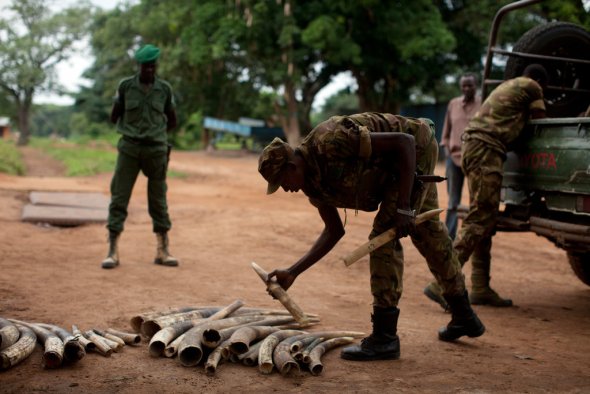
Due to these attacks many illegal terrorism units have then since turned to what can fetch them the most monetary gain to purchase illegal arms to fund their barbaric atrocities instead of the “arms being imported” from countries that they have previously attacked that did support them in the past.
America and Europe have funded many “terrorist nations” with military weapons that then travelled into the hands of terrorists and not as requested to the security forces tackling these crude radical mentalists, and because to these restrictions the animal parts trade has fluctuated that is fuelling organised and serious crimes against humanity to the narcotic trade too.
Illicit trade in wildlife has exploded for 2013 into a $19bn a year criminal enterprise, threatening government stability and national security.
Reports quoted the current effort to stop trafficking in ivory, rhino horn, and other endangered species was pitifully inadequate against the powerful and sophisticated crime syndicates with a global reach.
The report quoted;
“It has been a failure. We are losing these populations in front of our eyes,” “It is being outgunned in terms of technology. It is being outgunned in terms of resources, and it is being outgunned, worst of all, in terms of organisation.”
The report, compiled by the Dalberg consulting firm, was based on interviews with government officials in countries on both sides of the smuggling chain in Africa and Asia.
Conservationists have contacted the United Nations to now spur governments in to taking stronger and direct action into combatting illegal wildlife smuggling that’s fuelling the arms trade and terrorism.
Within the past year alone, organised crime syndicates armed with military-issue machine guns have slaughtered hundreds of elephants at a time in places like Cameroon’s Bouba Ndjida national park, the report said.
The wildlife trade appears to fund terrorist cells in unstable African countries – threatening national security – and that the industry often uses the same networks and routes as other illegal trades, such as drug trafficking.
Over the past five years, meanwhile, the numbers of rhinos poached in South Africa has risen exponentially from about 20 a year to an expected 600+ for 2012 end It is shocking to see the numbers grow the way they have.
Elsewhere, powdered rhino horn, a medicine that has now morphed into a status symbol in some parts of south-east Asia, has sold for upwards of $100,000/kg. The average rhino horn was worth $600,000 – a price that gave the traffickers plenty of cash to pay off corrupt government officials.
The explosion of the trade – and the involvement of organised crime and violent rebel groups – this year captured the attention of the Pentagon and the state department. The secretary of state, Hillary Clinton, upgraded trafficking from a conservation issue into a national security threat. Wildlife trafficking now threatens government control and national borders.
Hilary Clinton quoted;
“It is one thing to be worried about the traditional poachers who come in and kill and take a few animals, a few tusks, a few horns, or other animal parts,” Clinton told a meeting at the state department. “It’s something else when you’ve got helicopters, night vision goggles, automatic weapons, which pose a threat to human life as well as wildlife.”
Smuggling of wildlife was now overseen by powerful crime syndicates stretching across international borders. The crime groups use their enormous profits to buy weapons, finance civil wars and buy corrupt government officials – rendering existing laws against trafficking almost useless.
America is the second largest destination for smuggled goods made from endangered wildlife. This is not an issue that can be solved solely by departments of parks or environment or solely by park rangers who are fighting it on the frontline we need the full strength of the government.”
We need to deploy the police and in a number of cases we need to deploy the military to crack down on these terror cells immediately before another mass human fatality “occurs”. Those that are dealing in illegal contraband, smuggling, trafficking down to the poachers, distributors and the opportunists need to be located, prosecuted and the key thrown away.
Some of the more sophisticated resources to catch the traffickers are now forthcoming. Google awarded WWF a $5m grant for aerial drones to track poachers and endangered wildlife, such as rhinos, tigers and elephants. (However why didn’t Google help the smaller units that all work together, this then singles others out and is not fighting the war on poaching and illegal trade on a larger scale to overwhelm these criminals.
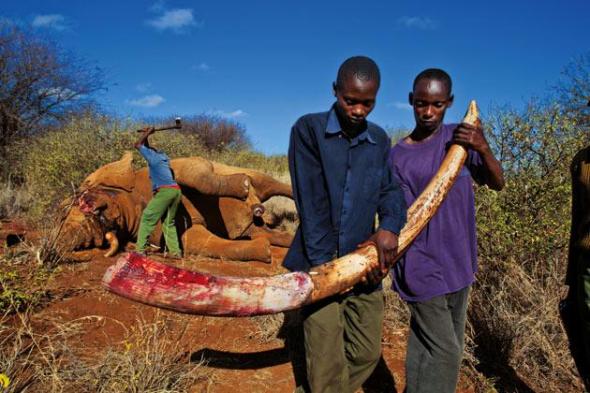
But the overwhelming takeaway from the report was the failure of political will in some countries to deal with trafficking and this is where we ourselves International Animal Rescue Foundation © are either viewing nation not willing to become embroiled in counter terrorism due fear of their own inner state problems, an uprising attempt as seen in in some nations 2012-2013, or they simply are corrupt and more involved than we and other conservationists believe. There was evidence of that gap in the report itself.
Dalberg interviewed 15 government officials and seven representatives of international organisations that deal with trafficking, after making dozens of initial contacts. But the firm said some of the key players – such as Vietnam, a large and growing market for illicit trade in rhino horn – refused to take part. Two government officials objected specifically to questions about government corruption. (With the COP march summit only days away with Vietnam being seen as a focus of interest we as an organisation believe they are going to play hard to get).
The only way in which then to deal with nations such as Vietnam is to place imminent and immediate sanctions on them until they take direct action to curb the illegal wildlife trade thus decreasing the illegal arms and narcotic trade and civil unrest in African and Arab nations. Economic sanctions would be the preferred choice of weapon however by dong this (would it see an increase in criminal activity thus placing more animals in danger?).
“However by using past and current events within talks to ministers and the current endemic of wildlife poaching, sanctions” (could be imposed).
Who’s fuelling the trade though?
There are many fractions fighting in Africa however the main parties I have highlighted below that we are 100% certain on are going to place African wildlife in danger more unless immediate sanctions are imposed and tougher action taken further afield.
M23 March 23 Movement;
The March 23 Movement (French: Mouvement du 23-Mars), often abbreviated as M23, is a rebel military group based in eastern areas of the Democratic Republic of the Congo (DRC), mainly operating in the province of North Kivu. The group is currently involved in an armed conflict with the DRC government which has led to the displacement of large numbers of people. On 20 November 2012, M23 took control of Goma, a provincial capital with a population of one million people.
The M23 rebels have been responsible for a number of poaching incidents involving Elephants in the region as explained by the author of Killing for profit. They have murdered and mutilated Gorillas to exporting them out of the nation for big money into Nigeria mainly.
Leaders of the M23 movement are, Makenga Sultani, Jean-Marie, Runiga Lugerero
In late 2012 M23 Rebels acquired approximately 20 shipping containers filled with arms and ammunitions of various calibre, as well as 6 artillery pieces (type 26 and BM-type rocket launchers), all of which were abandoned by the FARDC in its retreat from Goma.
The M23 rebel and Congolese war has displaced many people that now reside in another refugee camp situated about 150 km north and 6 hours’ drive from Goma. A small town which population has more than doubled with the arrival of 20,000 displaced people. The camp is located in the Congo named Nyanzale camp.
South African police arrested 19 suspected members of a Congolese rebel group this February 2013, accusing them of plotting to overthrow their nation’s government after it recently came under attack by militants said to be backed by neighbouring Rwanda. http://abcnews.go.com/International/wireStory/south-africa-police-arrest-alleged-m23-rebels-18406975
Reports of poaching https://www.commondreams.org/headline/2012/09/04-0 by the Ugandan army supported by the Americans took down a herd of Elephants o which Ivory was very quickly whisked away in what was described as “a professional military attack” similar to that of a Special Forces raid http://www.globalpost.com/dispatch/news/regions/africa/120904/ivory-ugandan-army-suspected-elephant-slaughter
It has been quoted and is very factual –
Some of Africa’s most notorious armed groups, including the Lord’s Resistance Army, the Shabab and Darfur’s janjaweed, are hunting down elephants and using the tusks to buy weapons and sustain their mayhem. Organized crime syndicates are linking up with them to move the ivory around the world, exploiting turbulent states, porous borders and corrupt officials from sub-Saharan Africa to China, law enforcement officials say.
But it is not just outlaws cashing in. Members of some of the African armies that the American government trains and supports with millions of taxpayer dollars — like the Ugandan military, the Congolese Army and newly independent South Sudan’s military — have been implicated in poaching elephants and dealing in ivory.
Joseph Rao Kony – Joseph Kony (MOST WANTED WAR CRIMINAL) – Lord’s Resistance Army
Joseph Rao Kony born sometime between July and September 1961 is the head of the Lord’s Resistance Army (LRA), guerrilla group in Uganda.
While initially enjoying strong public support, the LRA allegedly turned on its own supporters, supposedly to “purify” the Acholi people and turn Uganda into a theocracy. Kony proclaims himself the spokesperson of God and a spirit medium, has nurtured a cult of personality, and claims he is visited by a multinational host of 13 spirits, including a Chinese phantom. Ideologically, the group is a syncretic mix of mysticism, Acholi nationalism and Christian fundamentalism, and claims to be establishing a theocratic state based on the Ten Commandments and local Acholi tradition.
Kony has been accused by government entities of ordering the abduction of children to become child-sex slaves and child soldiers. An estimated 66,000 children became soldiers and two million people have been internally displaced since 1986. Kony was indicted for war crimes and crimes against humanity by the International Criminal Court in The Hague, Netherlands, in 2005 but has evaded capture. The LRA operates in Uganda, the Democratic Republic of Congo, Central African Republic and South Sudan, his exact geographical location is being hunted down by Special Forces.
Joseph Kony’s destruction against Elephants;
Joseph Kony has commanded his Lord’s Resistance Army soldiers to kill elephants in Central African forests, a new study has revealed. The LRA Crisis Tracker 2012 Annual Security Brief says LRA escapees have reported witnessing rebels shoot elephants and remove their tusks at Kony’s demand. Individuals that have escaped abduction by the LRA also say that unknown persons arriving by helicopter to remote locations have provided rations in exchange for ivory.
The LRA has been responsible for some of the most egregious violations of human rights in Central Africa. Now Kony and his rebels appear to be engaging in elephant poaching and ivory smuggling to sustain their terrorist operations. The security implications of illegal wildlife trade extend far beyond conservation. It is a national security issue and a threat to human life.
Last month the United Nations Security Council requested an investigation into LRA’s sources of funding, including elephant poaching and ivory smuggling. The move came just after a briefing of UN ambassadors highlighting the national security threat posed by wildlife crime.
Poaching of elephants has reached crisis levels in Central Africa, largely due to demand for ivory products in Asian markets such as China and Thailand. Thailand is by far one of the nations in which Joseph Kony is involved within transporting illegally smuggled ivory. Please goggle for the petition and sign asking for Thailand to now cease all ivory sales.
Lastly we see new international battles that are raging in Mali with Somalia being a focal point for EU forces to invade and restore order as of colossal terrorist atrocities, illegal wildlife trade, narcotics, ethnic cleansing and terrorism training camps.
French-led war in Mali has come with a huge cost for the local population whose livelihood has been shattered. Petty crime, anti-social behaviour, high unemployment and now again more refugee camps are breeding to the north of Mali. This is not good news and we know exactly what is going to happen here should the French and British and not sustain this war now.
As explained there are already 14 “recognised” refugee camps in Africa and now we have another in Mali that is growing larger by the day with very little signs of aid relief moving in and order being restored.
The majority of the youth there now find themselves without jobs with many are trying to spend their time by any means possible. As a result, petty crimes such as pick pocketing and theft have become a common occurrence among the refugees in the north of the country.
Some of the youth are reportedly using violence against women refugees who are increasingly becoming vulnerable to attacks in the north. Some of the acts committed against refugees according to locals have gone unreported. Given the already poor security situation within several camps across the country’s north, the refugee population there say what keeps them alive is the hope that they will live to see the next day.
The crime rate in the northern Mali has been on the rise with mostly people in refugee camps bearing the brunt of that due to the high unemployment rate caused by the French-led war in Mali.
Sadly again Elephants are coming under brutal attack;
Events of 2012 have meant that for the first time, three elephants have been poached. Community information networks discovered the identities of the perpetrators but require armed back-up to be able to act on this information, particularly with the influx of a variety of armed groups and the imminent military campaign to retake the north of Mali.
The 550-700 elephants are a notable remnant population and represent 12% of all West African elephants. This sub-desert population largely escaped the intense poaching of the 1980’s that extirpated other Sahelian populations, making them the most northerly African population and a high priority in IUCN’s regional elephant strategy. They survive by making the largest elephant migration in Africa, whose route takes them annually from Mali to Burkina Faso and back. One elephant was measured to have covered 3,435 km in 12 months!
With the vulnerable being preyed on in many African refugee camps, civil unrest which has been on-going since the 1980’s and now the new war over the border of Nigeria where it has been reported more Elephants are being poached than anywhere else in the continent what hope does our wildlife have?.
Although we and other conservationists cannot work to cease “civil wars” we can take action to hunt for the syndicates in bordering nations with South Africa along with working to build a lateral bond up with refugee agencies to help in sourcing, reporting and locating illegal activities in the area.
International Animal Rescue Foundation © works in building community relations too, and by building relations and using intensive strategic surveillance too, and informer networks then we are hopeful in tackling at least this “area” whilst reporting back to other agencies thus sourcing and arresting criminal syndicates that are taking down our Elephants and Rhinoceros.
Taking direct and immediate actions must been seen as a priority and one cannot save these species on a social media page. WE AND YOU have abilities to cease this poaching crisis so let’s start using hearts and minds.
Please stay tuned for part III of five – Understanding poaching and the illegal wildlife trade,
Dr J C Dimetri – Chief Executive Officer / Founder 2010-2011
Environmentalism Chapter 22 - Understating Poaching
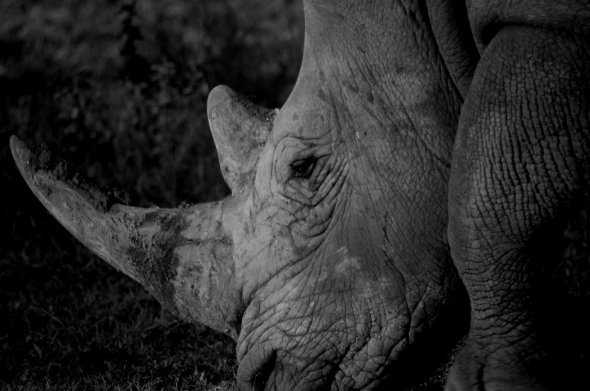
The poaching crisis in Africa and Asia is out of control and there seems to be no stopping these brutal and heavily armed sophisticated poachers as yet. Africa is again seeing the brunt of all poaching that includes both the Elephant and the Rhinoceros to Pangolin with Lion bones being used more than ever to produce fake Asian medicine bone wine.
The numbers of the one horned Rhinoceros and Asian Elephant and Pygmy Elephant (rare to poach) are incredibly low too which would indicate why there are such low poaching “incidents” however when a poaching incident occurs it’s now in large numbers taking out large numbers.
Arrests are climbing “to a certain degree” and within January 2013 there were many animal parts seizures internationally both in Thailand, Malaysia, Vietnam, Hong Kong and Singapore of Rhinoceros horn, Elephant ivory to other animal parts and living specimens too from snakes seized in Thailand of just over two thousand living snakes (February 2013 – Chinese new year) as of course it is the year of the “snake” as advertised all over Asia so in theory the snake will be brutalised to great lengths this year for fake potions, medicines and bush meat to satisfy Asian demand which is incredibly high with no signs of a decrease as yet in some animal parts.
However there has been a decrease in Rhinoceros horn on the market in Vietnam and China which I have explained further on within this news and media documentary.
There is no hiding the fact though that poaching is erratically out of control in Africa with last year’s poaching statistics standing at an eye watering six hundred and twenty two brutally slain Rhinoceros for counterfeit Asian pharmaceuticals for the month of December 19th 2012 as stated by the Department of Environmental Affairs minister Rt Hon Albi Modise and Rt Hon Minister Bomo Edna Molewa.
The total end poaching statistics for December end of 2012 stood at six hundred and sixty-eight poached Rhinoceros for South Africa shocking Africa and many conservationists around the globe. http://wessa.org.za/get-involved/rhino-initiative/current-rhino-poaching-stats.htm
The current number of Rhinoceros in South Africa alone that we can only go on from our previous correspondence with the Department of Environmental Affairs (Dec 2012) is totalled at 18,800 however this number in detailed correspondence in many email’s to us from Rt Hon Albi Modise states that number is from the “2010 census count” and is not the true figure for 2012-2013 with many propagandists placing the Rhinoceros populations in South Africa at a non-factual 22,000 – 22.200 which it completely untrue with no supporting evidence to back this evidence up.
Based on poaching statists and the population counts for 2010 then adding to that the “gestation” length of birth coupled with the female cow only giving birth to one Rhinoceros with gestation at 450 days then we have estimated the total number of Rhinoceros (which is not a factual precise number) at 15,300 and dropping rapidly now at two to three a day every day being poached. We also took into account the number of hunting permits that was handed to hunters (hunting within Africa) to hunt “Rhinoceros” standing at one every year.
15,300 is as we have calculated non-factual due to not being able to “fulfil a detailed census count” however based on reams of evidence this is the closest number based on scientific data, hunting permit records, gestation, and the number of poaching incidents to the “population” count of 2010 too that we have located which is now frighteningly worrying. Should there be no serious plan of action implemented on all sides and not just including the South African government then regrettably we will one of our famous big five.
Within India Assam, Kaziranga that holds roughly 2,200 Indian one horned Rhinoceros the poaching figures for December end 2012 was eighteen with many arrests and poachers shot dead on site. For February 2013 India sadly see’s nine one horned Rhinoceros poached dead to date for February 16th 2013 as communicated to us by the forestry and ecotourism ministry of Assam, India.
Elephant poaching statistics for the entire continent of Africa, and India including Indonesia and Malaysia are sketchy as the authorities are reluctant to release factual data with regards to the world’s largest land mammal that’s roamed the continents for millions of years.
What we have managed to locate is an estimated 25,000 elephants that were slaughtered in 2011 with most of these being hit in Kenya, Cameroon and Zimbabwe. For 2012 the “estimated figures are” that have yet to be released by all official governmental environmental agencies stands at 27,600 again that is increasing and very alarming and is estimated by many non-governmental organisations and non-profits. The actual true extent down to the nearest number will never be known for Africa or India due to the sheer size in continents and dead non-accounted for.
Within India the total number of Elephants slain is again sketchy as (The Convention on International Trade in Endangered Species of Wild Fauna and Flora does not want to place within the public domain information with regards to the poaching of these magnificent gentle giants to a certain level.
For 2012 in India that holds a very low population of Asian Elephants standing at 20,000 poaching statistics are roughly to date for February 16th 2013 sixty one poached, however in Odisha just outside of India the number of deaths stands at two hundred and ninety five. Odisha is situated here http://goo.gl/maps/Qrv60
The Asian Elephant is now at extremely decreased population levels concerning ourselves International Animal Rescue Foundation ©, World Wildlife Fund, The Convention on International Trade in Endangered Species of Wild Fauna and Flora, TRAFFIC the wildlife trade monitoring network, and The International Union for the Conservation of Nature plus many more conservation networks.
The critically endangered Pygmy Elephant is also in danger to, the Pygmy that “had” a population of 1,500 at the start of January 2013 now stands at 1,430 with most slaughtered not for “ivory” but because they are pests within and around the buffer zones of palm oil and pulp and paper plantations within mainly Malaysia and Indonesia.
Before January 2013 it was estimated that 11 critically endangered Pygmy Elephants had been deliberately slaughtered by poisons just to keep them away from the palm and paper plantation’s with another 8 found on January 26th 2013 and 5 more on February 4th 2013 there is unfortunately speculation that more may lay dead from poisoning just to satisfy greed from over obsessive consumerism outside of Asia for palm oil, wood and paper products.
The Asian Elephant is continuously slaughtered now in the most graphic and nauseas manners we’ve ever seen of such a splendid mammal, almost identical to that of the barbaric fur trade they are slaughtered by electrocution a new and torturous method of murder for ivory.
To kill an animal in such a disgraceful manner like this, knowing that it will burn alive from the inside out slowly and withering in agony then poachers and syndicates are dropping to all-time lows in side India and Africa which now must work together to end this sickening and repulsive bloody destruction of our critically endangered, endangered and vulnerable fauna and flora just for myths and counterfeit Asian pharmaceuticals within the Asian alternative medicine market.
Recent surveys have proved for 2012 that the Alternative Medicine Market or TCM/TIM is now using more African animal parts than ever before. Traditional Chinese Medicine and Traditional Indian Medicine that are both popular alternative medicine practices internationally using approximately 1,000 plant and 36 animal species to date based on recent 2012-13 TCM/TIM surveys conducted by International Animal Rescue Foundation ©, this is also including the tiger, rhinoceros, black bear, musk deer, and sea horse the tiger, rhinoceros, and sea horse are endangered or moving to endangerment.
As many know or don’t know Rhinoceros horn is used in fake Asian medicine to treat fever, convulsions, and delirium (Rhinoceros horn does not and never has cured any disease). Its popularity has been a major factor in the reduction of the rhinoceros population in Africa and Asia.
According to the World Wildlife Fund, only about 3,100 black Rhinoceros in Africa and 2,800 of all three Asian species (Sumatran, Javan, and Indian) in Asia are still survive. Black, Sumatran, and Javan Rhinoceros are designated as critically endangered on the 2007 World Conservation Union Red List of Threatened Species. The Javan numbers at 30 left in the Asian wild (2013)
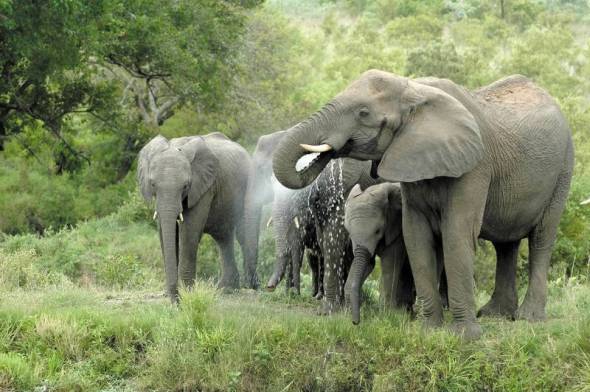
The Indian endangered one horn Rhinoceros, and the African White Rhinoceros variety are now nearing possible endangerment to extinction of which we could see the Indian species gone in 1-2 years maximum unless actions are taken to flow the demand with the White Rhinoceros banished in 3-4 years.
Despite protective laws, poaching continues still motivated by the Asian market for Rhinoceros horn. Captive-breeding is now the only hope for some species until protection can be provided in the wild sadly this is not the always the answer and breeding does not and has proven to be ineffective in increasing birth rates however does higher “mortality” to a considerable level, it regrettably is not the answer though.
Within India In an attempt to stay one step ahead of the local authorities, poachers in the Ganjam district of Odisha, India, are configuring power lines into homemade, electrocution tripwires, which they are using to kill elephants. 91 deaths that have occurred of the Asian Elephant have occurred from “some form of Electrocution” it’s the most silent way and easiest way in order to take an Elephant down so Assam Anti-Poaching teams have quoted to us (2013) which they are now launching in-depth investigations into the number of deaths so far this year.
Wildlife officers have suggested several remedies, including building taller, more insulated power lines, to help ensure the elephants’ safety. Others suggest cutting off power to areas with large elephant populations during strategic migratory periods. With poaching “known” though in these areas energy officers and anti-poaching rangers are in bitter battles on “who is to blame” (the poacher or the energy officials) “I think we all know who is to blame.
Zimbabwe holds a rough total of 700 Rhinoceros with 19 lost in 2011 from illegal poaching with great fears that the current poaching epidemic has now spread in to neighbouring states concerning many conservationists. Reported on 14th January 2013 Zimbabwe saw a copious hit on its Rhinoceros population on New Year’s Day with a total of four white Rhinoceros slaughtered with a remaining eight Rhinoceros horns recovered and spent ammunition cartridges. 2010 saw 23 Rhinoceros poached. Poaching is now considered rife in Zimbabwe’s game reserves, fuelled by cross-border syndicates from Mozambique, Zambia and South Africa.
It was stated in news feeds with regards to the four Rhinoceros that had been slaughtered in Zimbabwe that “mounting speculation that there is more than meets the eye in the suspected ‘poaching’ of the Rhinoceros on the Thetford Estate, which belongs to controversial businessman and known ZANU PF crony Mr John Bredenkamp”.
At the beginning of January it was reported in Kenya one of the worst nations with regards to out of control Elephant poaching that a family of 12 elephants were the most recent victims of a new epidemic of poaching sweeping Kenya, and Africa. It was the worst poaching hit in decades.
A gang stuck the Tsavo National Park in Kenya, one of the largest elephant sanctuaries in the world, slaughtering the animals, hacking off their tusks. The incident is the worst recorded ivory poaching incident in the history of the country.
According to the Kenyan Wildlife Service and International Fund for Animal Welfare, the trade in ivory, fuelled from Asian countries such as Japan and the rapidly prospering China, has increased to epidemic levels over the past few years.
Last year almost 34 tonnes of ivory was seized across East Africa, with 34 tons seized in 2012 with nearly 90% of all ivory seized had come from or had been transported through East Africa, and The number of animals that died for their tusks doubled in less than two years to approximately 360 in 2012.
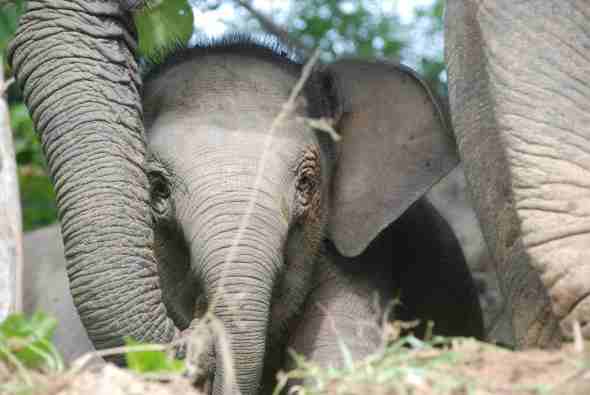
In 2011 40 poachers where shot dead on site in Kenya by rangers, all of the poacher had heavy military or “hunting rifles” which is now fuelling speculation again that there is a hunting fraternity in Africa that is supplying these rifles, who these individuals are though are yet to be announced however we ourselves are investigating too with Africa being one of the worst nations in the world with regards to illegal poaching rising (and it’s going to keep rising unless more governments act and place a complete moratorium on hunting which we International Animal Rescue Foundation © are fighting in silence.
We know that hunters, rangers, police, to even the specialist Anti-Poaching Units are involved to “a degree” not all but some individuals are which has been proven time again. These members of the public and wildlife protection force are supposedly trusted individuals however with recent arrests in 2011 and 2012 it’s not looking good and is also effecting funding and “whom” to place trust in.
Some Charities are calling for a return to a full ban on the sale of ivory, and for authorities to address the involvement of international criminal gangs being involved in the trade.
Greater education for consumers might also help to stem demand, according to campaign group Dirty Ivory, a survey in China showed that almost 70% of the public thought ivory did not come from dead elephants, but that it fell out naturally, like teeth, by simply searching online one can view that ivory is freely available to purchase. Please view the links of which took our investigators on 3.6 minutes to search for and is widely available on the internet illegally.
http://www.npm.gov.tw/exh98/carvings/ch_05.html
http://duocminhanh.com.vn/am140/Vong-tay-nga-voi.html
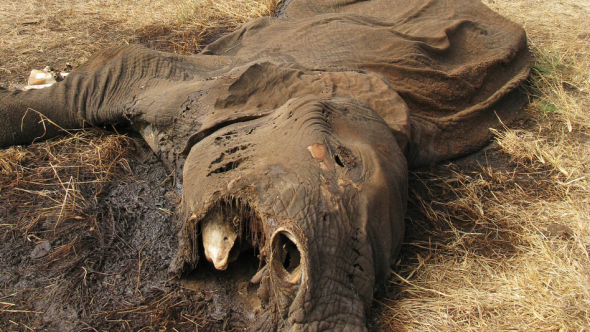
Elephant slaughtered for it’s tusks in Tanzania - Just to make ivory (What a waste of such a precious life)
The South African government have again launched a new war on the poachers however it’s not working and what it appears to us is that “anyone and everyone” is being arrested apart from the perpetrators themselves.
Within SABC news column the Department of Environment and Affairs minister for South Africa quipped;
Environmental Affairs Minister Edna Molewa says she’s confident that Sanparks may be on the verge of a turnaround with regard to the fight against rhino poaching.
Molewa says they now had a stronger team and a stronger force to help in the fight against rhino poaching. “Indeed there are people who have helped us to get new equipment which are able to help us deter those poachers from very far. There has been a contribution of helicopters by private sector and ordinary people.
“We now have a stronger team and a stronger force not just from Sanparks but from South Africans and the media” says Molewa. The Minister also thanked Lead SA, who she says has been at the fore front of the campaign.
Meanwhile, two more rhinos have been poached. The Hawks say the animals were killed and dehorned at Bulhoek farm near Brits in the North West, three or four days ago from the 10th February 2013. The rhino task team in the province is investigating.
Over 80 rhinos have been killed in South Africa since the beginning of the year (Jan 2012). Kruger National Park remains the hardest hit with 61 rhinos lost, to presumed foreign poachers. Kruger National Park is the worst hit park of them all.
We do not view this as very promising and with the latest shoot-out last Saturday and Sunday (Feb 2012) http://stfrancischronicle.com/2013/02/11/three-suspected-rhino-poachers-killed-in-shootout-with-rangers/ and with demand shooting through the roof then the war needs to be “moved into Asia” and not just in South Africa.
The Rhinoceros species could be preserved more if the government of South Africa simply;
- Place an immediate moratorium on hunting of which they quoted to us that this is not possible as hunting brings in more funding thus preserving conservation, plus in further correspondence “it would have to be proven that species in Africa where under threat”
- Cease the movements/sales of all Rhinoceros in South Africa to nations where Vietnamese hunting permits can still be used
- Improves tourism which brings in a considerable amount of income for conservation relief
- Quicker and harsher sentences for poachers and corrupt individuals
- Improving communications
- Brining all Anti-Poaching Units under governmental control and “funding them”
- Introducing a strategic Anti-Poaching command base with landing pads and runways
- Rooting out corruption with the use of polygraph technology invented in 1921
- Securing the main border channels
- More stringent checks on Asian construction workers
- Ceasing the sales of taxidermy to Asia which would impact on demand
- Tackling the air and freight ports
- Funding more security and newer high grade technology for reserves and farms
- Lowering tuition fees for those wanting to train as conservationists and/or ranger’s within South Africa
- Funding more ranger schools
- Tackling crime in “shanty town districts where poaching gangs are known by ourselves to hide”
- Education and awareness of tribal gangs and community relations
- Investigations into where donations are going to that are being ploughed in parks
- Release the R1 million that SANparks asked for in 2012 for equipment and ranger training (and purchase more equipment) International Animal Rescue Foundation © gave $10,000 with regards to the 2012 video advertisement for funds for this vital equipment and training however it’s being held back to hand to “anyone that can shop a poacher OR name a syndicate”.
- Setting a task force up to locate syndicates over the border
The above are just a handful of many tasks that the government can work towards to help in preserving our endangered fauna and flora, however they refuse and continue to support the likes of the hunting trade that is fronting the poaching trade and as much as many people “may disagree” the evidence is more than evident.
M99 (Entorphine) is still being used to take the Rhinoceros down, the Rhinoceros horn treatment is still not funded by the government, freight and airports are left untouched of which the DEA know damn well this is the main exit point for ivory and horn.
Non-profit Organisations, to non-governmental organisations and opportunists are working as rapidly and to the best of their ability to preserve and conserve however “funding is needed” and whilst funding is being pushed in to over 130+ African zoo’s where is the funding for the Rhinoceros protection? It’s slowly trickling in from the humble public in small quantities that’s going astray.
Pelham Jones makes very dull point here http://www.globalpost.com/dispatch/news/regions/africa/south-africa/120226/rhino-war-can-hunting-save-the-rhino of which he truly believes that “hunting animals is preserving them” however this is totally untrue, and should one look at the PHASA terms and conditions and their “voluntary donations” scheme then one will understand that “tourism brings in more money than that of hunting” as more people travel to AFRICA to shoot with a camera than they do with a rifle.
Pelham Jones quotes “that when hunters come for trophy hunting, they kill old, non-breeding animals. “We have no problem with this,” he said. “Unlike with humans, there are no retirement villages for animals.” (Utter nonsense) excuse me Mr Jones can you explain to me why there are breeding farms located all over South Africa?
Yes I understand that one then has to move new stock in but how is this actually preserving our wildlife? It’s exactly the same as purchasing a new car, you trade the old one in for half the price if that, and then you purchase a new model. In this case it is the animal, so next question is exactly how much of the so called remaining pocket funds goes back into conservation? Oh yes very little, and it’s proven time again.
Why is there breeding farms located here http://goo.gl/maps/qnSX5 that have links (and strong ones as we have checked to canned hunters?) I suppose that these breeding farm’s “coincidentally next to Wild Cats World and Daniels Cheetah Project don’t purchase new young then sell the surplus to canned hunters or to zoos too? Zoo’s in the Netherlands that coincidentally purchase animals which then travel BACK to Africa and are then shot dead.
(To those that are reading we were threatened by Danish mafia (apparently) in 2 emails if we carried on harassing this area of interest that we are disgusted and sickened about.
What tourism can bring for YOU but most importantly CONSERVING FAUNA AND FLORA
Tourism is regarded as a modern-day engine of growth and is one of the largest industries globally. In 2012, G20 heads of state recognised tourism as a driver of growth and development, as well as a sector that has the potential to spur global economic recovery. Just in 2009-2010 in Uganda (not related to this tourism shot up by 300%) That’s in a war torn zone.
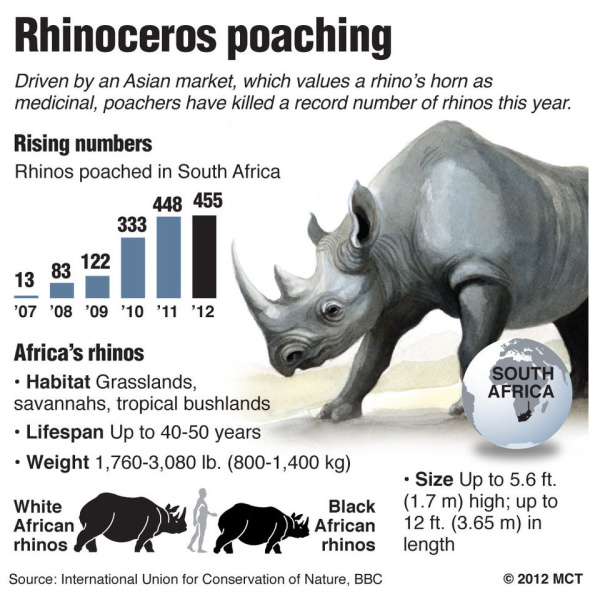 South Africa has earmarked tourism as a key sector with excellent potential for growth: the government has increased tourism’s contribution, both direct and indirectly, to the economy from the 2009 baseline of R189, 4-billion (7.9% of GDP) to R499-billion by 2020 (National Department of Tourism, 2012). Tourism supports one in every 12 jobs in South Africa and heavily supports conservation (but we need more)
South Africa has earmarked tourism as a key sector with excellent potential for growth: the government has increased tourism’s contribution, both direct and indirectly, to the economy from the 2009 baseline of R189, 4-billion (7.9% of GDP) to R499-billion by 2020 (National Department of Tourism, 2012). Tourism supports one in every 12 jobs in South Africa and heavily supports conservation (but we need more)
South Africa’s spectacular scenery, friendly people, world-class infrastructure make it one of the most desired destinations in the world. The sector was given a massive boost by the successful hosting of the World Cup in 2010, when the country received a record-breaking 8.1-million foreign visitors. Despite tough global economic conditions, tourism grew in 2011, with 8.3-million international tourists. The regional African tourist market is South Africa’s important tourist markets, contributing more than 73% of total tourist arrivals and more than R50-billion in revenue in 2011.
Domestic tourism is also an important source of revenue and employment, contributing 52% of total tourism consumption. Cruise and rural tourism are focusing within growth areas.
A labour-intensive sector, with a supply chain that links across sectors, tourism is a priority sector in the government’s planning and policy frameworks – it is one of the six job drivers of the New Growth Path framework.
The National Tourism Sector Strategy, launched in 2011, aims to ensure the sector realises its full potential in terms of job creation, social inclusion, services exports and foreign exchange earnings, fostering a better understanding between peoples and cultures, and green transformation, and conservation.
South Africa is a popular destination for business travellers, who spend on average three times more than their leisure counterparts while crossing over significantly into leisure travel themselves, through tours before or after their business activities and through return trips in subsequent years.
With its first-world infrastructure, balmy climate and breath-taking scenery – not to mention acres of golf courses – South Africa is an ideal location for international congresses and conventions.
The country has well over 1 000 world-class conference and exhibition venues, ranging from intimate bush hideaways to large-scale, hi-tech convention centres. All of these offer a wealth of leisure activities, side-tours and events: from walking with elephants to first-hand experiences of African culture to luxury shopping and relaxation.
The country has set up the National Conventions Bureau to help it secure more international conferences, an excellent source of foreign tourists and revenue. The conference industry is in 37th place in the International Congress and Convention Association’s top-100 list of leading destinations in the world, released in 2012.
South Africa is home to diverse cultures, ranging from the Zulus who resisted European conquest to the nomadic San of the Karoo desert. Each culture has evolved its own distinctive art forms, music and traditional rituals, while the descendants of colonial settlers have evolved variations of their European roots.
South Africa’s history has been one of confrontation, but is now also known as one of reconciliation. World-class sites have been established to commemorate the country’s past and celebrate its new-found unity, while the number and quality of cultural villages, community and township tours has grown dramatically.
World Heritage
South Africa is home to eight World Heritage sites, places of “outstanding value to humanity”.
Four of South Africa’s eight Unesco World Heritage sites are cultural sites, while one is a mixed cultural/natural site. These are: Robben Island, the Cradle of Humankind, the Mapungubwe Cultural Landscape, the Richtersveld Cultural and Botanical Landscape, and the uKhahlamba Drakensberg Park.
South Africa’s diverse climates range from tropical in the south-east to desert in the central region. The scenery runs the gamut from spectacular mountain ranges to vast grass plains, from coastline to meandering rivers to desert dunes. The country’s wildlife is far more varied than just the celebrated “Big Five”, and is supported by an extraordinary biological diversity.
Three of South Africa’s eight Unesco World Heritage sites are natural sites, while one is a mixed cultural/natural site. These are the Cape Floral Region, the iSimangaliso Wetland Park, the Vredefort Dome, and the uKhahlamba Drakensberg Park.
South Africa is leading the way in one of the boldest cross-border initiatives currently unfolding in southern Africa, the development of transfrontier parks.
There are 19 national parks, including the world-famous 20 000km2 Kruger National Park. The country’s terrestrial protected areas stand at around 6.9%, according to a World Bank report published in 2012. Marine protected areas make up around 11%. The country’s private game lodges range in standard from middle to very upmarket, with ultra-luxury lodges catering almost exclusively to foreign tourists.
Being at the southern tip of a large continent, South Africa offers 3 000 kilometres of coastline along with breath-taking mountains – often side by side. The country’s diverse terrain, together with a climate suited to outdoor activities, make it an ideal hunting ground for adrenaline seekers.
South Africa offers world-class climbing, surfing, diving, hiking, horseback safaris, mountain biking, river rafting – and just about any other extreme activity you can name, all supported by dedicated operators.
World-class venues and supporting infrastructure, top international events, and South Africans’ passion for sport combine to make the country a huge draw card for sports fans.
More than 10% of foreign tourists come to South Africa to watch or participate in sport events, with spectators accounting for 60% to 80% of these arrivals.
There are numerous world-class sporting events on South Africa’s calendar every year, such as the Cape Argus Cycle Race and the 89km Comrades marathon. The country has proved that it can successfully pull off the really big events, which have included the 1995 Rugby World Cup, the 2003 Cricket World Cup, and the biggest of them all, the 2010 Fifa World Cup.
PLEASE VISIT SOUTH AFRICA – SHOOT WITH YOUR CAMERA – PLEASE GIVE TO CONSERVATION
In 2012 we made a direct demand to President Jacob Zuma that should he not clean the poaching trade up then we would launch imminent and immediate boycotts of the South African tourism and trade industry. Please view the links
http://www.waterconservation.co.za/2012/01/20/threat-of-boycott-to-save-the-rhino/
http://mg.co.za/article/2012-01-13-rhino-lovers-issue-ultimatum
It was a wrong and uneducated move by me the founder/CEO of the International Animal Rescue Foundation of which I didn’t see the full potential of what tourism could bring into South Africa which has masses of “potential if the tourism trade acts with us and others”.
Tourism is big business in South Africa and in the European Union, Africa is plastered on every tourism outlet everywhere one travels, by working with the tourism industry, showing the trade that walks through the door of what is happening in the nation they wish to visit then “more sums of monetary gain” can be achieved and pushed directly into conservation to protect our Rhinoceros and Elephant, Lions to Pangolins and more.
International Animal Rescue Foundation © has been working intensively to help preserve the famous big five in Africa along with many other conservationists and individuals, we placed conservation teams on the ground with our own European Anti-Poaching Units that are kept low key as we believe that corruption in Africa involving the animal parts trade doesn’t just involve government, police, rangers, to farmers.
As explained we also believe that there are individuals working within Anti-Poaching Units that are tipping poaching gangs off with planned movements of Anti-Poaching personnel. We refuse to allow any African Anti-Poaching teams or Africans to work with us not because of discrimination but because we are highly concerned at the corruption of instate individuals and we do not wish to take chances. This we feel very unfair as it could introduce good working relations, and rapport.
There are also other major factors that are not being taken into consideration with regards to poaching and every time we mention these important factors to government and smaller non-profits and non-governmental agencies they are simply brushed aside. We are not going to allow those problems to be simply hammered down because of fear of upsetting people in other nations, or their own governments.
We explained to our team back in 2009 that we need to look at poaching in Africa within a more (broader setting), who else could be involved? Why have the numbers of poached Rhinoceros drastically increased from 7 in 2000, to 122 in 2009 than 2011 seeing just over 448 poached?
Elephant poaching statistics went skyrocketing from 2005-2006 being the start of the main Elephant poaching frenzy then decreasing in 2007 to a maximum number of 15,000 with 2008 being the lowest ever year recorded in Africa alone for Elephant poaching with numbers of poached Elephants under 10,000.
Then 2009 see’s under 37,000 thousand poached Elephants with the year 2010 practically shooting of the graphs with poaching statistics standing at just under 58,000 poached dead, 2011 and 2012 see’s the largest now moving into hundreds of thousands standing at 25,000+ with formal records still to come back to the IUCN and CITES.
The statistics of “poaching incidents” for both Rhinoceros and Elephants are almost identical, and yes we are fully aware that the Rhinoceros hasn’t been poached into the thousands as with the Elephant species but what we are trying to explain is the “years of increasing hits” on wildlife.
Let’s pull some facts and questions here and lay them on the table;
- Between the years of 2002 and 2009 the poaching “hits or incidents” and not (numbers of poached) on both the Rhinoceros and the Elephant have increased at the same time moving from a steady low then high to decreased poaching rates then sliding of the scale. Why did Africa see these rates at such fluctuating levels?
- There are more poaching incidents next to “war torn” or “poverty hit nations” (we know the KNP (Kruger National Park) holds the largest number of Rhinoceros and we are also aware that Kruger and Mozambique meet that are not secure or manned properly at the border posts with some poachers traveling through the Giriyondo gate via the getaway or just moving animal parts discreetly through the frontiers.
- There are more poaching incidents of Rhinoceros in the Kruger “which people believe is (only) because there is more numbers of Rhinoceros in the Kruger however this side of Africa (KNP) also borders extremely poor nations” where civil unrest and refugee camps are becoming increasingly larger.
- There are more Mozambique’s, Somalia’s, and Ethiopians arrested in “poaching incidents” than there are Asian poaching gangs with regards to the Rhinoceros and Elephant.
- Moving back to the poaching of Elephants the numbers stand at this in (percentage) for 2011. 1) The percentage of poached Elephants for 2011 in central Africa stood at 90% 2) The percentage of poached Elephants for 2011 in East Africa stood at 59% 3) The percentage of poached Elephants for 2011 in southern Africa stood at 51% 4) The percentage of poached Elephants for 2011 in Western Africa stood at 84%
ONLY YOU AND WE CAN STOP THIS - STOP IGNORING THE DAMAGE - START TAKING ACTION - WE NEED MORE ACTION IN THE FIELDS NOW - WE ARE LOSING THIS BLOODY WAR - PLEASE HELP US - PLEASE HELP THE AFRICAN BIODIVERSITY NOW!.
Identifying other areas of interest I have listed below.
- There has been 16 years of civil war in Mozambique that ended in 1992. Stated in 1975 after independence from Portugal it displaced millions, ruined homes and infrastructure, agriculture, and living, pushing people into poverty and crime with most people living on $1 a day to support themselves and family. Although in Mozambique the Civil war has since ended (to a degree) the country still sees for 2012 based on UNHCR statistics some 145,000 refugees, 245,000 asylum seekers, 55,000 internally displaced persons, with only “four thousand returnees”. The country also has a 20%+ unemployment rate.
- In 2002 a severe drought hit many central and southern parts of the Mozambique, including previously flood-stricken areas. Poverty remained widespread, with more than 50% of Mozambicans living on less than $1 a day. At this same time of year poaching increased of the Rhinoceros from 6 in 2001 to 25 in 2002 than 22 in 2003 with a decrease in poaching between the years of 2004-2007 with only 2006 seeing a fluctuation, the years of 2002 to 2005 is a typical “drought session” is this an indicating factor that we should all be looking for in the future to prepare oneself for possible poaching “incidents?
- In 2012 it was reported that Individuals in mixed-migration movements towards South Africa often use camps in Malawi, Mozambique and Zimbabwe as temporary stopovers, putting a strain on scarce humanitarian resources and creating tensions locally. This has led many governments in the region to restrict access to the asylum system by requiring travel documents at entry points and applying the “first safe country” principle, whereby entry is refused to asylum-seekers who have travelled through a safe country prior to their arrival.
- 2012 The UNHCR has now called on the Mozambique government to STOP asylum seekers from being deported of which will see more pressure placed on refugee camps, more crime, poverty and anti-social unrest. (Could this be another reason why poaching is increasing as of asylum into a poor nation?) Why would anyone decide on seeking asylum in Mozambique in such (small numbers that are not even totalling that of what Britain see’s and being under 200,000)
- In 1993 President Robert Mugabe born 21 February 1924 threatened to expel white landowners who objected to the 1992 Land Acquisition Act permitting the government to force them to give up their land for redistribution to black Zimbabweans.
- In 2000 President Robert Mugabe begins ordering white farmers to give up their land. Some 4,000 farmers lose their land and Zimbabwe’s agricultural output decreases sharply.
- In 2004 it accusations by Human Rights Watch state that starvation is being used as a tool for the regime’s support among Zimbabweans. Farm output has decreased sharply since Mugabe began his policy of land grabs.
- 4,500 white commercial farmers to surrender their lands without compensation to black settlers that had NO agricultural or botanical experience at all plunging the economy into doom with hypermarket shelves left bare and empty.
- In 2000 Up to 13 million people, close to half of them in Zimbabwe, starved over the six months as a result of drought and political mismanagement across six countries in the region. Between 2000 and 2008 203 Rhinoceros where poached (there is now 700 Rhinoceros left in Zimbabwe alone) Was the land reform partly responsible for poaching fluctuations too in South Africa coupled with droughts of 2000 in Mozambique?
- From 1999-2000 Zimbabweans unemployment rate stood at 52% and as drought took hold due to rapid climate change and lack of agricultural consumer goods as of inexperienced agriculturists this had a knock on effect with increased unemployment increasing, from 2001 unemployment shot up to 57% from 2005 unemployment stood at 73.4% then rising yet again in 2007 at a staggering 88% unemployed with 2009 at 95% for the years of 2011 to 2012 the unemployment rate is of the scale with most of those unemployed between the ages of 18-35 years of age. (Coincidentally those that are arrested for poaching are also in between this age group and are from Mozambique, or Zimbabwe. Between the years of 2007-2011 poaching skyrocketed (could this be another reason why poaching took off coupled with the animal parts trade in Traditional Chinese Medicine too?
- Zimbabwe has the “highest rate” of unemployment in the whole of Africa standing at 95% with Mozambique at 21% (are more poachers deriving from Zimbabwe where Asian syndicate gangs are taking advantage?) Namibia stands at 51.2% unemployed, Kenya and Swaziland stands at exactly 40% unemployed, South Africa 24.9% Ghana 11%
- As reported on May 8th 2012 Angola entered its pre-electoral phase, with civil unrest very likely to rise effecting Botswana although Botswana is a relatively peaceful nation compared to others it’s not of a major concern to ourselves with regards to poachers slipping over the borders or possible syndicates seeing these areas as poaching havens to pay poachers to do their dirty work whilst they stay relatively safe in neighbouring nations bordering South Africa.
South Africa borders four other major African nations as explained above, Namibia, Zimbabwe, Mozambique and Botswana with Swaziland closest to Mozambique and Lesotho 30 degrees east. Leaving Botswana, Swaziland, Lesotho, and Namibia out of the equation the top ranking nations that have the most problems with petty crime, unemployment, social dysfunction, organised crime, and drought to very low income then these nations can be and are from what we are seeing being targeted by highly sophisticated Asian syndicate gangs.
The opportunist is also targeting our wildlife within South Africa and who can blame them when you see figures such as this above from mainly Mozambique and Zimbabwe regarding unemployment, civil unrest and drought.
The same more or less is on-going in Indonesia and Malaysia with regards to illegal logging of which poor families that are none the wiser are completely oblivious to what damage they are causing to our sensitive biodiversity.
Bringing these two together with the poor and the sophisticated heavily armed and trained poachers could this be a reason why the Rhinoceros and the Elephant is now being plunged into nearing extinction at such a rapid rate? And are the syndicates residing in Zimbabwe where they know there basically untouchable thus sending in trained poachers to take down South African wildlife. We all know that from time to time the poor man will take his fair share, however the poor can easily be manipulated and bribed and $1000 sounds a lot better than $1 A DAY!
Shoot out 26th November 2012 - with the other two poachers moving back across the border into Mozambique http://www.timeslive.co.za/scitech/2012/11/26/two-men-arrested-for-rhino-poaching
On the 7 March 2012 more Mozambicans were arrested for Rhinoceros poaching - Mozambican nationals, Timothy Ngcobe, 44, David Lazerus, 29, Carlito Masundu, 25, Santos Smit, 28, Chicco Khoza, 35, Sam Mashaba, 36, and Sello Zitha, 35 were later arrested over the weekend. - http://www.sanews.gov.za/south-africa/more-rhino-poachers-be-arrested-says-kruger
9th February 2013 – Shootout erupts with remaining poachers fleeing back over the border into Mozambique - http://blog.getaway.co.za/travel-news/suspected-poachers-killed-arrested-kruger/
24th January 2013 – The DEA reports on more arrests with “poachers fleeing over the border into Mozambique” feeling over the border http://www.politicsweb.co.za/politicsweb/view/politicsweb/en/page71654?oid=352926&sn=Detail&pid=71654
It was stated on the 6th March 2011 by the Department of Environmental Affairs
“South Africa and Mozambique have signed a historic agreement to drop fences between the two countries for biodiversity reasons in the Greater Limpopo Trans-frontier Park. Evidently, this has been exploited by criminal elements.
Working together with her Mozambican counterpart, Minister Molewa will address this concern. This bilateral with Mozambique will address among others how we should jointly strengthen and upgrade the security situation to arrest the scourge of rhino poaching. We also would want to share with our Mozambican counterparts our initiatives that allow collaboration between various security agencies to deal with poaching as a priority crime”. http://www.environment.gov.za/?q=content/rhino_poaching_cause_concern
What minister Molewa shouldn’t off done was drop the fence, the Minister has along with her Mozambique counterpart increased poaching figures dramatically, and yet still claims that she is cracking down on poaching. This is bloody absurd and the so called “criminal elements” are the Mozambicans, Zimbabwean’s themselves or are they?
One cannot just blame or point the finger though at Mozambique or Zimbabwe, we also have refugee camps that are in dilapidated and in repulsive conditions with little food, electricity black outs, social dysfunction, drought, lack of sanitation “if any at all”, to people living way below the bread line. What would you do if you had been forced out of your nation with three children in tow and had to live months if not years in cramped, stinking, and heat swamped conditions? These areas also need addressing and rapidly.
The Rhinoceros and the Elephant we are fully aware is being targeted for TCM and TIM as there is no use for these animal parts in other nations. However we MUST locate these syndicates and vaporise them for good. International Animal Rescue Foundation © believes that these syndicates are over the border and this is a prime interest area for us.
We must also remember that Rhinoceros and Elephant poaching is not just “Asian related”. The poor that are attacking our precious biodiversity are also being targeted by syndicates in a no win situation. We need to clean these areas up, and that is exactly what we are going to do based on accurate informer intelligence and co-operation from over border agencies.
Together working in unity we will crush these bastards that are slaughtering our natural and most beautiful biodiversity fauna and flora.
Please stay tuned for part II of Five detailing the Rhinoceros and Elephant crisis.
Thank you for reading.
Chief Executive Officer
Dr J C Dimetri & Directive team of staff International Animal Rescue Foundation
If you would like to know more about the the International Anti-Poaching Foundation please visit
http://www.wildvolunteer.com/volunteer-international-anti-poaching-foundation/
Please donate to the I.A.P.F. here -> http://www.iapf.org/en/donate#paypal (Please READ what your donation can achieve) Please speak to Damien for more information the Chief Executive Officer and ex-Australian special forces solider -BE THE BEST I.A.P.F
Environmentalism chapter 21 - Alternative stress medicine

Mother Nature (sometimes known as Mother Earth) is a common personification of nature that focuses on the life-giving and nurturing aspects of nature by embodying it in the form of the mother. We the Homo sapiens were the third dwellers on the planet with Mother Nature being the first occupant that has thrived through many living organisms of which the small cellular living algae was the first living creature “or” plant to evolve upon earth but not formally “established” to this very day as scientific factual evidence.
Botanical species came first in the way of living organisms, then the species of mammals, and non-mammals then of course the human being the last to evolve with no actual scientific proof of how humans actually really evolved. It is stated but never has been actually proven that some 2.3 million years ago humans “could” of evolved from Chimpanzees however with Chimpanzees now set in stone with no further evidence of “evolution change” then this we cannot specify whether humans evolved from “chimps” or not although they share some 97/8% of our DNA structure.
The first fossils of macroscopic land plants have been found in the Middle Silurian of Ireland. They are about 425 million years old. They consist of small bifurcations some centimetres in size. Only in the very last part of the Silurian fossils of land-plants become more common and also more complete. The best known plant from that time is called Cooksonia. It is named after Ms Isabel Cookson, who occupied herself with intensive collecting and describing plant fossils.
The little plant looked very simple with a stem which bifurcated a couple of times topped with small spheres in which the spores were formed. Thus sporangia being formed that had no leave’s, no flowers, no seeds and roots. They most likely had horizontal growing stems, connected with the soil by root hairs that took the function of roots. But this is not sure for fossils proving this has yet to be fully established and maybe never will unless more remains are unearthed. During many millions of years it was mainly this kind of plants that grew on humid places on the land.
So what I am trying to explain is that our botanical species that being the first ever earth dweller we must take as the most important evolution of living known species to date. Plants have always been a natural source of non-potent to powerful forms of medicine, yet still we are killing our botanical species of by the day in the vast swathes of forests that reside in the America’s, and mainly Asia.
We live a very hectic and intense lifestyle and yet still remain on synthetic pharmaceuticals or fake animal parts that being users in Asia mainly for the relief of an array of illness and symptoms such as the common cold, migraine, anxiety, aphrodisiacs, or influenza (antibiotics - DO NOT cure influenza), viral infections, diabetes to blood disorders, hypertension to oedema and tachycardia and many more illness to complaints.
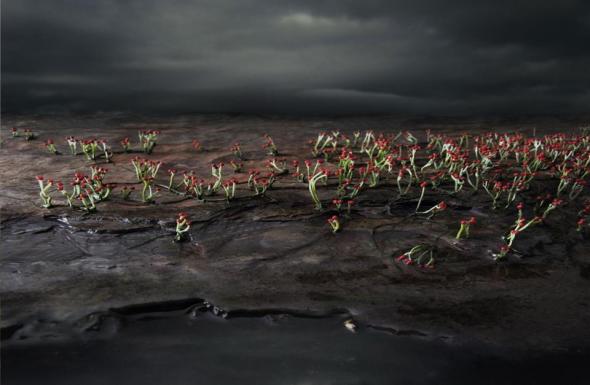
Cooksonia - Located in Ireland over 400 million years ago is said to be the first recorded plant on earth along with mosses and lichens
STRESS though is a number on factor within our life and is not just harming our own health, but others around us too along with harming the environment through negligence chaotic out of control thinking. I have listed below a number of plants that you may be familiar with or may not that can and have been proven time again to help relieve just stress plus other ailments however STRESS or anxiety is the number one subject within this botanical document that I wish to narrate on.
Stress is defined as an organism’s total response to an environmental condition or stimulus, also known as a stressor. Stress typically describes a negative condition that can have an impact on an organism’s mental and physical well-being. There are many “signals” to stress or anxiety attacks to feeling (anxious)
How does stress (interfere with our bodies complex organs?)
Brain
The brain plays a critical role in the body’s perception of and response to stress. However, pinpointing exactly which regions of the brain are responsible for particular aspects of a stress response is difficult and often unclear. Understanding that the brain works in more of a network-like fashion carrying information about a stressful situation across regions of the brain (from cortical sensory areas to more basal structures and vice versa) can help explain how stress and its negative consequences are heavily rooted in neural communication dysfunction. In spite of this, several important brain structures implicated in playing key roles in stress response pathways are described below.
Human brain (hypothalamus=red, amygdala=green, hippocampus/fornix=blue, pons=gold, pituitary gland=pink)
Hypothalamus
The hypothalamus is a small portion of the brain located below the thalamus and above the brainstem. One of its most important functions is to help link together the body’s nervous and endocrine systems. This structure has many bidirectional neural inputs and outputs from and to various other brain regions. These connections help regulate the hypothalamus’ ability to secrete hormones into the body’s blood stream, having far-reaching and long-lasting effects on physiological processes such as metabolism. During a stress response, the hypothalamus secretes various hormones, namely corticotropin-releasing hormone, which stimulates the body’s pituitary gland and initiates a heavily regulated stress response pathway.
Amygdala
The amygdala is a small, “almond”-shaped structure located bilaterally, deep within the medial temporal lobes of the brain and is a part of the brain’s limbic system, with projections to and from the hypothalamus, hippocampus, and locus coeruleus, among other areas. Thought to play a role in the processing of emotions, the amygdala has been implicated in modulating stress response mechanisms, particularly when a feeling of anxiety or fear is involved.
Hippocampus
The hippocampus is a structure located bilaterally, deep within the medial temporal lobes of the brain, just lateral to each amygdala, and is a part of the brain’s limbic system. The hippocampus is thought to play an important role in memory formation. There are numerous connections to the hippocampus from the cerebral cortex, hypothalamus, and amygdala, among other regions. During stress, the hippocampus is particularly important, in that cognitive processes such as prior memories can have a great influence on enhancing, suppressing, or even independently generating a stress response. The hippocampus is also an area in the brain that is susceptible to damage brought upon by chronic stress.
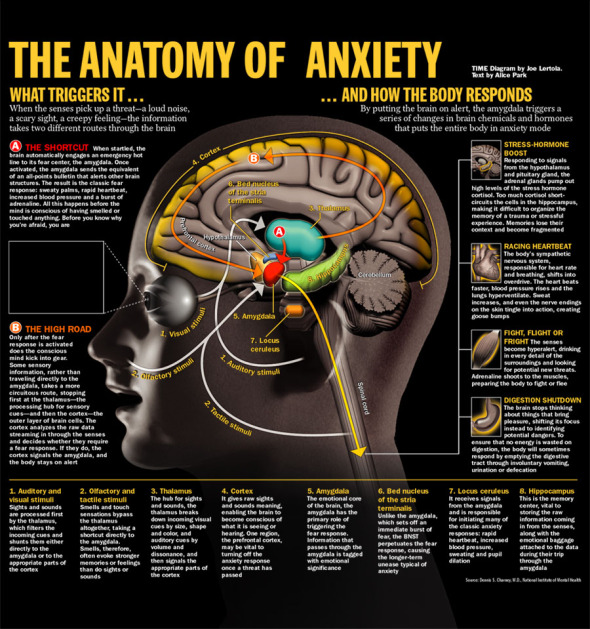
Locus coeruleus
The locus coeruleus is an area located in the pons of the brainstem that is the principal site of the synthesis of the neurotransmitter norepinephrine, which plays an important role in the sympathetic nervous system’s fight-or-flight response to stress. This area receives input from the hypothalamus, amygdala, and raphe nucleus among other regions and projects widely across the brain as well as to the spinal cord.
Raphe nucleus
The raphe nucleus is an area located in the pons of the brainstem that is the principal site of the synthesis of the neurotransmitter serotonin, which plays an important role in mood regulation, particularly when stress is associated with depression and anxiety. Projections extend from this region to widespread areas across the brain, namely the hypothalamus, and are thought to modulate an organism’s circadian rhythm and sensation of pain among other processes.
Spinal cord
The spinal cord plays a critical role in transferring stress response neural impulses from the brain to the rest of the body. In addition to the neuroendocrine blood hormone signaling system initiated by the hypothalamus, the spinal cord communicates with the rest of the body by innervating the peripheral nervous system. Certain nerves that belong to the sympathetic branch of the central nervous system exit the spinal cord and stimulate peripheral nerves, which in turn engage the body’s major organs and muscles in a fight-or-flight manner.
Pituitary gland
The pituitary gland is a small organ that is located at the base of the brain just under the hypothalamus. This gland releases various hormones that play significant roles in regulating homeostasis. During a stress response, the pituitary gland releases hormones into the blood stream, namely adrenocorticotropic hormone, which modulates a heavily regulated stress response system.
Adrenal gland
The adrenal gland is a major organ of the endocrine system that is located directly on top of the kidneys and is chiefly responsible for the synthesis of stress hormones that are released into the blood stream during a stress response. Cortisol is the major stress hormone released by the adrenal gland.
In addition to the locus coeruleus existing as a source of the neurotransmitter norepinephrine within the central nervous system, the adrenal gland can also release norepinephrine during a stress response into the body’s blood stream, at which point norepinephrine acts as a hormone in the endocrine system.
The immune system also plays a role in stress and the early stages of wound healing. It is responsible for preparing tissue for repair and promoting recruitment of certain cells to the wound area. Consistent with the fact that stress alters the production of cytokines, Graham et al. found that chronic stress associated with care giving for a person with Alzheimer’s Disease leads to delayed wound healing. Results indicated that biopsy wounds healed 25% more slowly in the chronically stressed group, or those caring for a person with Alzheimer’s disease.
It’s no surprise that constant stress can make people sick, which researchers have been studying now for some many years.
A study focused on 119 men and women taking care of spouses with dementia. The health of the caregivers was compared with that of 106 people of similar ages not living under the stress of constant care giving.
Blood tests showed that a chemical called Interleukin-6 sharply increased in the blood of the stressed caregivers compared with blood of the others in the test. Previous studies have associated IL-6 with several diseases, including heart disease, arthritis, osteoporosis, type-2 diabetes and certain cancers.
The study also found the increase in IL-6 can linger in caregivers for as long as three years after a caregiver had ceased that role because of the spouse’s death. Of the test group, 78 spouses died during the survey.
People under stress tend to respond by doing things that can increase their levels of IL-6.For example, they may smoke or overeat; smoking raises IL-6 levels, and the chemical is secreted by fat cells. Stressed people also may not get enough exercise or sleep, she added. Exercise reduces IL-6, she said, and normal sleep helps regulate levels of the chemical.
There are many animal pharmaceutical tested synthetic meications that can relieve stress from Amitriptyline, Chlorpromazine, Clonazepam, Clonazepan, Clonidine, Codeine, Valium, Cloziril, and many more all anti-psychotic to (neurological pain relievers such as Amitriptyline as explained) used to treat Neuralgia that is extremely unpleasant and effects one of the most sensitive nerves in the body the “ Trigeminal Nerve” that runs the entire length of your mouth, hence why when you feel tooth ache and it’s on the right hand side you can also feel pain on the left and within one’s ear as the Trigeminal nerve is connected to all nerve endings in the face that shoot pain receptors in many directions making your pain more intense as the infected “tooth” to the “virus or decay” is pressing on this nerve, hence why dentists to neurologists prescribe (nerve relievers to help relax the nerve thus = less pain).
Moving away from the pharmaceutical talk and more on the “natural stress relievers” I have listed as explained above, below for you handpicked stress relievers of which are “botanical aids”. You can purchase these in many local homeopathy natural medicine clinics or have them made up in front of you via tincture and to whatever strength.
Stress headache;
The cayenne pepper—also known as the Guinea spice is a great stress headache reliever “not a cure” and please do note that I use the word constantly “reliever” and not curer. Cayenne or better known in the bionomical language as Capsicum frutescens has been used in many alternative medicine therapies for the (relief) of migraine to stress induced headache that’s caused by mainly the blood vessels in the brain constriction and not allowing the receptors to flow through adequately. Clonidine would normally work here via opening the arteries in the brain as it acts as a vascular dilator. Capsicum frutescens also does the same job though and can be made into a spray or tablet to liquid form although many homoeopathists will tend to opt for the spray as the liquid from the cayenne will travel directly to the point intended this reliving pain over period of time.
Research suggests that capsaicin can also help relieve cluster headaches. In one study, people with cluster headaches rubbed a capsaicin preparation inside and outside their noses on the same side of the head as the headache pain. Within five days, 75 percent reported less pain and fewer headaches. They also reported burning nostrils and runny noses, but these side effects subsided within a week.

Capsaicin (pictured above)
Back and neck tension;
This is a common form of stress that will affect 7-10 people every week in one way or the other. Pain can range from moderate to severe giving the feeling that your entire body is knotted causing excruciating back, muscle and tendon stress pain.
65 million people in America alone suffer from chronic back pain. Conventional treatment of such injuries usually revolves around strong pain killers, anti-inflammatory drugs, and very often surgery. Unfortunately, it is too common that these treatments do not yield the recovery hoped for.
OK I have two very interesting and powerful alternative medicines here that have been proven to “relieve” and still many people don’t realise the wonders of this botanical alternative medicine[s].
lobelia inflate
Lobelia inflata is a species of Lobelia native to eastern North America, from south eastern Canada south through the eastern United States to Alabama and west to Kansas, Lobelia inflate is not your normal seasonal annum plant but in fact a type (1) perianal. How does it work?
Lobelia is a powerful antispasmodic, indicated by severe spasm. It doesn’t seem to work so well as a preventive, and so would not be an herb I would recommend for regular use, but rather help to resolve spasm when the muscles are seized up and just won’t let go.
To this end, it can be very effective, many people have used it to address grand mal seizures, and said it has worked better than anything they’ve normally used as an alternative to even synthetic pharmaceutical treatment. Lobelia, in large doses, can have an emetic effect – PLEASE NOTE Lobelia can in LARGE dosages induce vomiting, but the tincture taken in small doses is unlikely to produce this result.
I must stress this too and please don’t ignore my professional advice (please). Lobelia like any plant can cause gastrointestinal upsets thus inducing poisoning however (only in large extreme doses), some homoeopathists and herbalists will disagree with me to others, however I am giving you the advice from what I was taught at the Royal Horticultural Society (RHS) to use Lobelia please administering 1-10 drops of lobelia to the effected start low, and work your way up if needed.
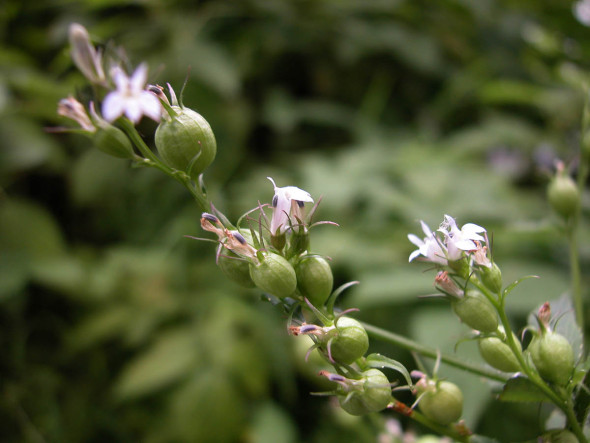
Lobelia inflate (pictured above)
kava kava better known as Piper methysticum
The roots of the plant are used to produce a drink with sedative and anaesthetic properties. Kava is consumed throughout the Pacific Ocean cultures of Polynesia, including Hawaii, Vanuatu, Melanesia and some parts of Micronesia. Kava is sedating and is primarily consumed to relax without disrupting mental clarity. Its active ingredients are called kavalactones. A Cochrane Collaboration systematic review of its evidence concluded it was likely to be more effective than placebo at treating short-term social anxiety. Safety concerns have been raised over liver toxicity, largely due to the use of stems and leaves by supplement makers, as opposed to solely the root of the plant as dictated by traditional uses.
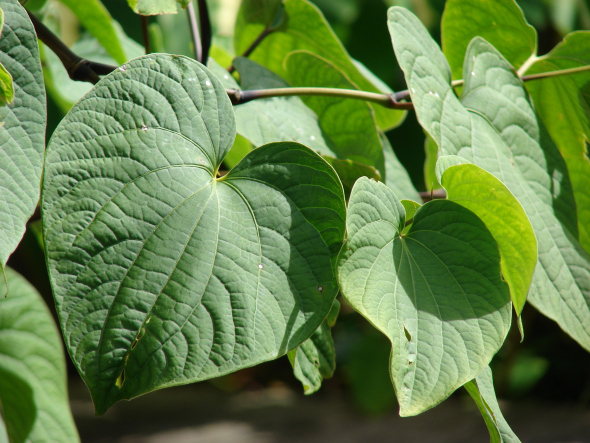
Piper methysticum (pictured above)
Kava Kava though is if used moderately and correctly will not cause liver toxicity such as illicit narcotics or liqueur.
Kava Kava is a very effective remedy for relaxing tension, and it works both on the mind and the muscles. Kava is very often used when people are holding their emotional or mental tension physically, but it can also be useful when the physical tension of an injury is causing a lot of mental anxiety and unrest. While I think Kava poses no problems when taken frequently, it’s an herb I’d restrict to use as needed to deal with the anxiety attending injury, and not the mainstay of treatment. Also, I do think kava works rather nice in larger doses, anywhere from 30 to 90 drops (1 to 3 “squirts” of tincture). Please consult homoeopathists and do not try to prepare yourself unless you’re fully qualified in botanical medicine.
Emotional stress and depressive stress;
Ashwagandha & St Johns Wort
Withania somnifera, also known as ashwagandha, Indian ginseng, poison gooseberry, or winter cherry, is a plant in the Solanaceae or nightshade family. Several other species in the genus Withania are morphologically similar. Yes Nightshades “can be toxic” however only the main species of the (deadly nightshade) Atropa belladonna a completely different species and genus.
Withania somnifera, is a perennial herb found throughout western India. It is also known as the Indian ginseng because of its revitalizing actions. Ashwagandha is a rejuvenating tonic in Ayurveda, and practitioners use the roots to treat general fatigue, nervous exhaustion, insomnia and stress. In their 2000 book “The Herbal Drugstore,” Dr. Linda B. White and medicinal plant expert Dr Steven Foster recommend ashwagandha to enhance your body’s mental and physical performance and its ability to cope with stress. You can use ashwagandha teas, tinctures and capsules, but consult a qualified health care professional for dosage instructions. Do not use ashwagandha if you are pregnant, have stomach ulcers, autoimmune disease, or if you are having surgery with anaesthesia.
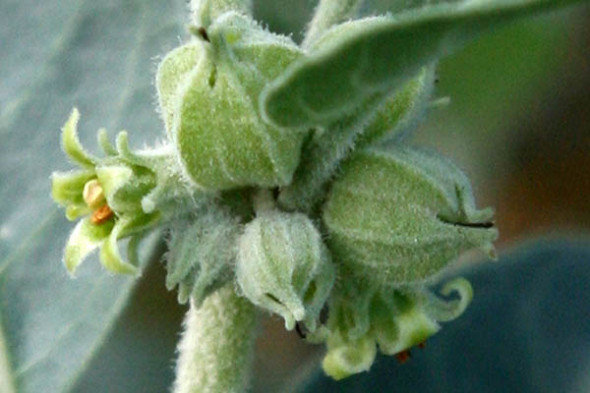
Withania somnifera (pictured above)
You can purchase Ashwagandha here - http://www.google.com/shopping/product/7563134337631719525?q=Ashwagandha&hl=en&rlz=1C1CHMO_enGB520GB520&bav=on.2,or.r_gc.r_pw.r_qf.&bvm=bv.42553238,d.cGE&biw=1517&bih=664&sa=X&ei=4sIdUde_KpDxigLZwIGgBg&ved=0CG4Q8wIwAA
St Johns Wort – Hypericum perfoatum or H. vulgaris is and has been used for some many years across the planet as an emotional stress and depression reliever lifting moods and helping your bodies to battle immune stress and emotions.
Now available on prescription due to cost in herbalist formulation of this amazing plant it can be located in Germany, France, England, and Spain via your local physician. Please note that in some parts of the United Kingdom it’s not available due to funding and what I could locate as a discriminatory post code lottery.
St. John’s wort is most often taken in liquid or pill form. The dried herb may also be used as a tea.
The most common dose used in studies has been 300 mg, three times a day. Preparations in the U.S. have varied amounts of active ingredient in them. So be careful to note how much you’re getting in your tablets.
Please NOTE;
You should be alert for any of the following effects if you are taking St. John’s wort:
- allergic reactions
- fatigue and restlessness with long-term use
- increased blood pressure
- increased sensitivity to the sun — especially if you are fair-skinned and taking large doses
- stomach upsets
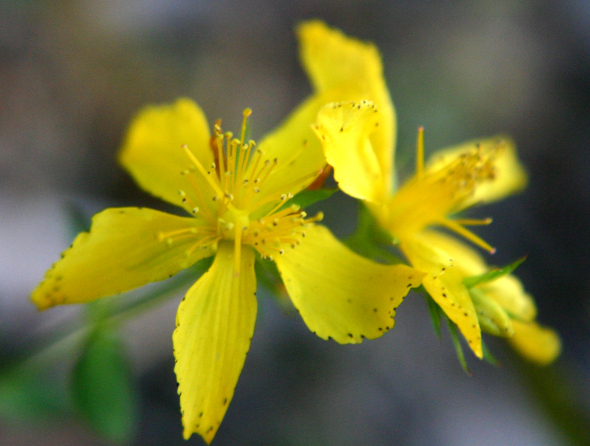
St Johns Wort (pictured above)
Nervous tension/stress/ emotional stress;
Valeriana wallichii known as Tagara
Valeriana wallichii, is a rhizome herb of the genus Valeriana and the family Valerianaceae also called Indian Valerian or Tagar-Ganthoda, not to be confused with Ganthoda or the Long Pepper. It is a herb useful in Ayurvedic medicine used as an analeptic, antispasmodic, carminative, sedative, stimulant, stomachic, and nervine.
A perennial herb rich in volatile oils Ayurvedic practitioners use it to treat emotional stress, nervous tension, insomnia, muscle spasms, headaches and anxiety. The active ingredients are called valepotriates, and they have potent antispasmodic and anti-anxiety action. In her 2009 book, “The Holistic Herbal Directory,” herbalist Penelope Ody says that tagara can also be applied as a cream topically to treat stress-related skin conditions like eczema. Do not combine tagara with other sedatives or antidepressants.
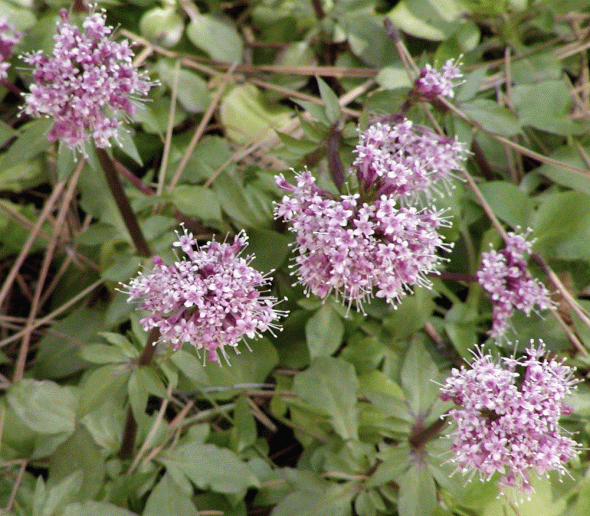
Valeriana wallichii (pictured above)
Please read more here http://www.a2xanxiety.com/reports/anxiety.html?stress?weirdherbscombo?www.livestrong.com
Although I have named only a small handful of the most stressful complaints that can be reduced through using natural herbs there are thousands of botanical species that can be purchased online or at your local herbalist homoeopathist.
Thank you for reading
Dr J C Dimetri V.M.D, B.E.S, Ma, PhD , MEnvSc
Please note in the first video below the speaker quotes “there are no side effects” this is untrue and there are indeed side effects like with synthetic medications. Please always consult your practitioner, herbalists, or homeopathic therapists,
Please note International Animal Rescue Foundation shows BOTH SIDES of every story and wish to explain in great detail our own findings and what knowledge that we are already aware of;
Environmentalism Chapter 20 - Energy saving
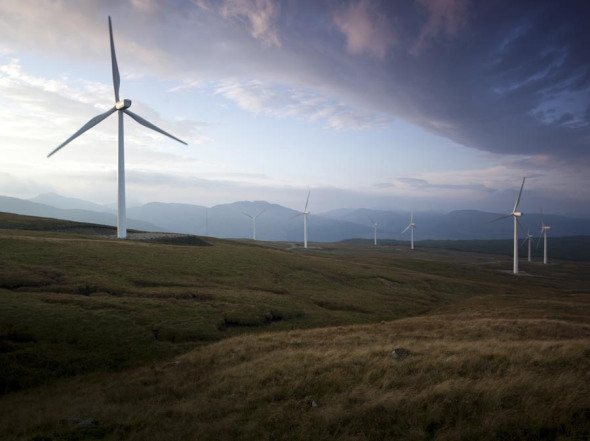
I am becoming increasingly annoyed and frustrated at the recent and past energy price rises that has increased in the European Union by up to twenty five per cent in the last two years. International Animal Rescue Foundation © owns its own rescue in the United Kingdom and since our last yearly energy bill came in from N-Power Energy with I being the utility payer and rescue owner I was absolutely disgusted at the rates from which I was being charged.
Our energy consumption for one entire year is always estimated and for the past two years I have asked my staff to provide monthly meter readings as requested, plus I have continuously demanded that the energy readers travel to the farm and take monthly meter readings so that a complete 100% accurate usage of energy can be established thus charging me the owner of the rescue farm the correct amount in usage.
The bill yet again was exactly (wait for it) drum roll du du du du du £4,576 for one years of estimated usage, (even though I have asked trusted staff to take meter readings) and the utility meter readers have travelled to the farm and taken exact usage readings to the nearest decibel. I have read through all the paper work as requested by myself and sent to me by my staff and still N-Power have charged myself the Chief Executive Officer the best part of almost £5,000 English sterling.
The rescue farm has many energy saving modifications, all energy saving white goods, water meter’s and turbine, to solar powered energy and 3 small wind turbines too that generate and store energy. So in theory one would think with a moderate supply of free natural energy “although not a substantial amount” and environmentally friendly modifications that have since paid themselves off then the amount of kilowatts per hour of energy usage would be vastly reduced.
Unfortunately this is not the case and it’s going to become a lot worse with more peaks in energy “billing” for the entire nation of the United Kingdom and many other continents if not all due to obsessive over consumption that could be greatly decreased if we all took vital steps in reducing heat loss, increasing environmentally friendly modifications within the home and business sector to turning of energy when we don’t require it.
Even though I am not a resident or citizen of the United Kingdom I still have to pay for the usage, however I feel it unfair that I am being forced to pay “increases” because other people in the United Kingdom cannot be bothered to use energy wisely and efficiently to securing their homes from “energy loss” thus decreasing higher bills to using greener energy such as solar, wind, and water to recycled energy within the home, business and even automobile.
So in reality I have paid for all these modifications over a period of two years and yes ok “has been awarded star decreased energy billing” because I had electrical engineers fit the rescue with (alternative energy) saving technology. However because other British citizens that have yet to decrease their carbon output, to fitting alternative energy within their homes then I and others are still being “discriminated and singled out” due to their obsessive over energy consumption, which I believe is totally unfair and discriminative.
OK so let’s move away from my own expense and look at the average energy billing that I have listed below, and please note this is based on estimated sources that I could source and locate from energy suppliers around the world and not just in the United Kingdom.
Please note the readings below are based on the United Kingdom, the average size of the living space to the average weather readings for the past two years, I have only included electricity as this is the main source of energy that one uses.
- One person in a one bedroom apartment = 500 Kwh/year
- Two people in a two bedroom apartment = 2,500 Kwh/year
- Three people in a three bedroom house = 5,500 Kwh/year
- Family of four in a four bedroom house = 4800kwh/year to 15840kwh/year
The above readings are based on “usage” and not an exact figure as everyone uses energy differently and are not always at home. This is based on average moderately healthy person[s] but does not show an exact figure.
Below I have placed some of the averaged priced bills based upon what “type” of home the individual lives in. Please remember again this is “estimated” and does not represent a real accurate figure which would be practically impossible for one to document on.
Energy billing per type of property;
For a flat/apartment from one bedroom up to five the prices per energy consumption are listed below with the lowest priced billing figure being a (one bedroom) to the highest figure being a six bedroom.
Flat £675 £570 £743 £823 £575 £693
For a terraced from one bedroom up to five the prices per energy consumption are listed below with the lowest priced billing figure being a (one bedroom) to the highest figure being a six bedroom.
Terraced £774 £579 £710 £755 £1,085 £1,150
For a bungalow from one bedroom up to five the prices per energy consumption are listed below with the lowest priced billing figure being a (one bedroom) to the highest figure being a six bedroom.
Bungalow £804 £929 £836 £707 £1,031 £1,200
For a semidetached from one bedroom up to five the prices per energy consumption are listed below with the lowest priced billing figure being a (one bedroom) to the highest figure being a six bedroom.
Semi-Detached £805 £619 £666 £796 £1,059 £886
For a detached from one bedroom up to five the prices per energy consumption are listed below with the lowest priced billing figure being a (one bedroom) to the highest figure being a six bedroom.
Detached £924 £300 £917 £797 £991 £1,038
It’s quite peculiar to see such fluctuations of energy based on how many bedroom’s you have, for example a one bedroom flat will use per year on average £675 however move up to a (five bedroom and your consumption per year on average is £575) and the same applies for a detached, a one bedroom detached will see you at a rate of £924 per year however move up to a two bedroom then you’re paying £300??? (this is ludicrous)
But purchase a four bedroom and the usage on average is £797 BUT living in a six bedroom you’re paying just over the average of what you would for a one bedroom detached. Confusing? Yes rather confusing as energy companies are rather crafty in the United Kingdom.
The monthly meter reading man/woman will ONLY take an (estimate of your consumption) of which it’s up to YOU to provide most energy companies nowadays with your energy usage by providing them over the telephone the two click meter readings per month or quarter.
This is not only time consuming for yourselves (but have you actually been kept in a telephone waiting line for almost an hour listing to the verses of Mozart or Vivaldi before launching into a tyrant of abuse? I have many times now. It’s also costly on the telecommunications usage too.
If you feel that your being unfairly treated then one can complain or you can pay of your outstanding electricity bill at the end of the year and then run your usage by taking the meter readings yourselves then placing them through this simple search engine http://www.home-save.co.uk/energy/compare_cheap_gas_and_cheap_electricity_prices_online/cheap_gas_and_electricity/ of which you can “haggle as they say in Britain” with electricity companies and if you’re not sure on how to (haggle) then here’s how http://www.wikihow.com/Haggle trust me it works.
I use this technique many times when I am traveling from one continent to the other or just purchasing on markets. Be sure to make a (realistic) “quote” and if they refuse then explain to them you’re going to shop elsewhere as (another company has offered you a cheaper price and extra’s, remember though don’t exaggerate as they are actually trained in haggling too).
If they agree (to your haggling quote) then explain to the telephonist that you’re still not satisfied, give them your number and then explain you’ll shop about. Trust me your energy bill will drop substantially, then all you have you do is ensure you SIGN the dotted line and READ THE SMALL PRINT.
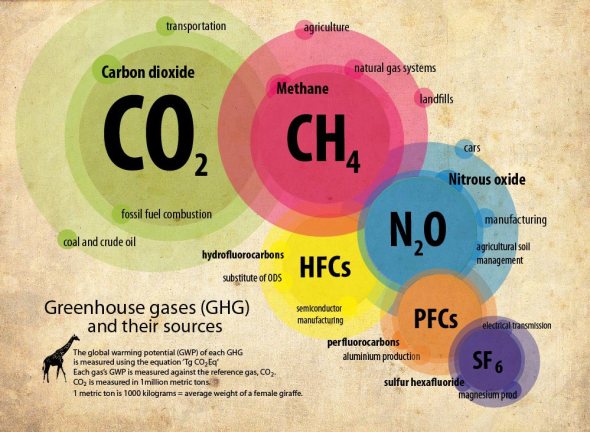
Whatever you do (never forget to read the small print) even if it’s in bible format and 10 pages long of which you need a magnifier glass to read (you must read it) because on the telephonists end (energy company) they will have the small print standing out on their computers at a rate the size of the Eifel tower.
However we are still not solving the problem here and the problem is obsessive over consumption and wastage of energy through many reasons such as poor construction, poor household maintenance, to inadequate loft and ceiling insulating or just failing to turn your electrics of at night time or when you vacate the property that can and does use more energy than having your electric’s turned on.
Fact your television uses about 80 to 400 watts, depending on usage however leave it on standby and it’s using 99W. A laptop is more energy-efficient than a desktop and monitor set-up.
Laptops, desktops and monitors are becoming increasingly energy-efficient, especially when you compare LCD or LED monitors with the old-style tube or CRT monitors. Newer machines also have reasonably good power options, so they switch on and power down fairly quickly, making it less tempting to just leave your computer on unnecessarily.
Computers effectively use similar power whether they are busy or idle. If you leave them doing nothing, they are using almost as much as if they are number crunching or accessing information, that’s why ‘sleep’ mode is so useful.
Use your power-saving setting: these are usually found in your computer preferences, and there are normally two options, either sleep or hibernate mode, both will turn off the monitor within a specified number of minutes of inactivity - with an old tube/CRT monitor energy usage may fall by half. Don’t forget to switch off your computer and any peripheral devices, such as your printer and scanner, overnight. Check your back-up settings and make sure it is set up to run as soon as your computer is switched on again (in case your computer is switched off at the designated time).
How much energy are you actually losing through poor home construction, shoddy maintenance, to poor insulation and even small cracks under the doors and window frames?
The average household will spend an average of about $960 each per year keeping warm and using various electrical items please note the figure above though is based on electric heating, gas heating, too using plug in heaters which the rate above is “WORLD ESTIMATE” to the nearest figure.
That’s three months of grocery money for a family, pumping heat into a leaky sieve that could actually have been built to require much less, or even no added heat, depending on the location and climate.
To understand heating, you must first know what you’re paying for. Heat is often measured in BTUs, British Thermal Units.
Then you must understand how you are losing your heat. The most important form of heat loss from your house is something called thermal transmittance, also known as U-factor. This is really just a number that means “how leaky is this material”, and it is based on the leakiness of a single pane of glass.
A single-pane glass window has a U-factor of 1. In English units, this means that each square foot of glass leaks out one BTU of heat per hour, for each degree Fahrenheit your house is warmer than the outside air.
So when you’re looking through a giant 10×10 foot window (100sqft), from a 70F room out into a 0F deadly-cold wintry blizzard, your window is leaking out 100 x 70 = 7,000 BTU per hour of heat into the night. That’s 7 cents/four UK pennies per hour or $50.40 per month of heat from that single window.
The “R-value” you have probably heard about is simply the inverse of the U factor. That means 1 divided by U equals R, and 1 divided by R equals U. You’ve heard of R-13 wall insulation, right? The U-factor of that is 1/13, or 0.08. (Are you still with me?)
With that knowledge, we can move up to understand the heat loss of an entire house. A 1000 square foot house probably has an outside surface area of about 2000 square feet including the roof. If it has standard R-13 wall insulation (and no windows for this example), and the temperature inside is 68F, it loses how much heat on a 32 degree day? 2000 square feet x 0.08 U-factor x 36 degree temperature difference = 5760 BTU per hour = $1.38 per day. (Times that by seven days = $9.66)
Imagine a household uses the same amount of electricity, about 299 kilowatt-hours per month, equivalent to 415 watts of average continuous use. How much heat does this electricity use add to the house? The answer is 1416 BTU per hour.
“What? You were just talking about home heating, and now you are talking about electricity. Aren’t they two different things?”
No, it turns out they are actually directly related. Almost all of the electricity you use in your house ends up being converted to heat, with 100% efficiency. Your light bulbs give off heat and light, and the light bounces around the room and eventually gets absorbed by the walls and turns into a tiny amount of heat as well. Likewise for your appliances, your computer, etc.
What this means is that any electricity you use in the heating season provides some of your heat, and reduces the amount your furnace needs to provide. The only exception to this rule is electric appliances that vent their waste heat outside. (Now are you paying attention?)

The glowing red and yellow sections on the left of this photograph indicate where the heat loss is via the use of thermal imagery
Getting down to the real deal here, and that is energy consumption wastage that’s not just costing you hundreds and leaking out thousands of dollars a year it’s also adding up to environmental global climate change and as explained on previous documentation if we don’t decrease and start slowing our wastage down then the planet’s surface temperature is regrettably going to heat up to another 4oc by 2100 and that is very concerning.
Of course our “winters will be warmer” however if winters are warmer what does that explain to you the home and business owner? Well it means more intense flooding and at higher levels destroying vast swathes of land, placing the world’s economy into jeopardy, agriculture will be effected considerably, corn, wheat and other cereal crops will be priced much higher due to importation from other nations (all because we couldn’t be bothered to turn the television, computers, lights, car engines, to mobile phones and much more.
Where are we losing our energy within the home?
- Lack of loft insulation or no loft/attic insulation
- Lack of or incorrect to no inner wall heat insulation
- Cracks in walls, ceiling’s, waste outlet/inlet pipes, air circulation vents, shoddy building construction, poor maintenance, poorly fitted doors and windows, underneath doors, unused chimney vents, chimney vents that are now used for decorative features, plug holes (yes believe it or not plug holes), over flow pipes, damaged exterior brick pointing and interior brick pointing to damaged plaster and render, key holes (did you know that a key hole can cool your house down in 1 hour?), broken tiles, poorly constructed A frame roofs to flat roofing.
- Electricals not being turned off at the wall and left on standby or (vampire power) use almost as more energy within the time that you’re away from the set “as they say” than you are watching. Example - if you watch television for 4 hours at night, then turn it on standby and sleep for the average of 7-8 hours (normal average sleep pattern) your television is consuming more energy, and it’s not to keep the red light on neither. Please read http://en.wikipedia.org/wiki/Leakage_(electronics)
- Other electronics such a coffee percolators, video game consoles, mobile phones left on at night, answering machines, stereos, and white goods from cookers, washing machines, microwaves, toasters, tumble dryers, (anything with an L.E.D display).
- Lights (a very big energy waster and environmental atmospheric warmer) It sounds almost too simple, but don’t forget that you can save a lot of energy, and therefore money, by making sure to turn off the lights when you leave a room. Lighting is responsible for about 11 per cent of a home’s energy bills, and those continue to march up across most of the country, at a time when home prices are falling and job growth is soft. It’s true that a compact fluorescent bulb uses about 75 per cent less electricity than an incandescent, but the most energy-saving bulb of all is one that’s turned off. So get in the habit of flipping those switches when you leave a room. Kids can easily get in on the action, and it’s an environmental value that will last a lifetime, and carry over into other areas.
Items in the home that consume the most energy;
- Fridges (use economy and make sure the fridge and freezer is full, ensure the fridge is in between 2-5oc not above the food spoil danger zone of 5oc) – ensuring the fridge and freezer is full uses less energy and reduces “energy wastage” make sure that when you open your fridge and freezer door that you close the door immediately. A simple drop in temperature will start the thermostat = more energy because you was too lazy to shut the door
- Gas or electric boilers / central heating (use when needed or at a constant 15oc)
- Cookers (turn of at the wall if you have a L.E.D
- Air conditioning uses masses amount of energy (use a battery fan)
- Computers (turn to energy efficient setting)
- High grade television and DVD players (larger the screen = more energy usage) (do you really need a 50” television screen? If so think of an up to date eye examination
- Stereos (turn of at the wall when not in use)
- Plasma heating units / mobile electric heaters (fancy heaters? We don’t need them)
- Video game consoles (uses masses of energy due to high grade technology) (turn of at the wall and exercise more) – we are spending too much time as couched potatoes EXERCISE and your brain will thank you http://www.helpguide.org/life/improving_memory.htm
- Fax machines – (really?)
- Cell phones, (the newer the phone and the bigger the pixel on the camera = more charge time, video player, MP3 player, and more) (make sure you use all the power in your cell phone then recharge, turn of at night and rely on a non-electric landline)
- Plug in air fresheners (purchase natural fragrance or clean more please DON’T use CFC’s)
- Security lights, CCTV, intruder alarms (set them on timers and at the correct height)
- Clocks (use battery)
- Coffee and tea makers (use a kettle)
- Electric land line telephones (use non-electric)
- Light bulbs (turn of when not in the room or purchase energy efficient)
- Electric storage heaters (these are massive energy consumers if not used correctly) (read the manual and make sure your generating and storing it, then releasing it on a timer and not generating it and releasing at the same time)
- Gadgets (do you really need them on at night) (do you really need them)
- Children’s rechargeable toys (BOOKS please READ – we are using more electric toys than reading books FACT)
- Electric wheel chairs (buy a non-electric and apply for a career) This link is for the UK https://www.gov.uk/carers-allowance/overview and USA http://www.ssa.gov/disability/
- Intercom systems (door bells or knockers with a spy hole)
- Electric smoke alarms (purchase battery)
- Skype headsets (these use masses of battery power) (use PC built in microphone)
- Spotlights (just the same as a 50 WAT halogen we don’t need them, purchase energy saving)
- Fish tanks and basic animal tanks (animals belong in the wild not the home)
- Water coolers (make ice in the freezer with an array of herbs and spices)
- Air ventilation systems (use a handmade fan)
- Electric automobiles (use bio fuel) (don’t use palm oil)
- Water lime scale removers (purchase a non-battery/non-electric lime remover) http://www.brita.com/intl/
- Washing machines (use when you have a heavy load not just for a single shirt)
- Tumble dryers (ever heard of wind)
- Electronic rotary air drying lines (we have natural wind for this)
This is thirty three objects that we are using in the modern house today that are not being used wisely with most of them used too much, too little, to using at the wrong times of the day. We don’t even need half of these goods listed above within our homes and sadly it’s a well-known fact of life that the average human is spending more time in their homes then they are out as recorded in recent 2010, 2011, 2012 market surveys. http://www.smh.com.au/business/cutting-peak-energy-demand-could-ease-pressure-on-rising-electricity-costs-20110717-1hk75.html On and off peak times for Great Britain https://customerservices.npower.com/app/answers/detail/a_id/179/~/what-are-the-economy-7-peak-and-off-peak-periods%3F
The biggest issue here though is (WHAT DO ALL OF THESE PRODUTS PRODUCE) and that is heat, even the simple house light bulb as explained above gives of heat and if you have all of these products in your home your home then you home is producing an eye watering loss of heat that can actually be seen on thermal imagery cameras and by the ISS (International Space Station).
How can I cut down my energy consumption?
Firstly;
By reducing your energy consumption you’re helping to reduce your carbon foot print which will slow but sadly no longer cease global climate change. There are many alternative energy options that you can purchase that are at this stage “still fairly expensive” however once they are installed and they have been running for at least a six months to one year you will see a considerable energy decrease billing amount on your monthly, quarterly to yearly utility bill. Please also remember that before and “if” you purchase that we do as an experienced animal and environmental agency strongly recommend, that you read through all the contracts and small print.
If you’re a home owner and you have had alternative energy saving options introduced and then come to sell your home it “could” place the home at a decreased value market price if the other buyer doesn’t want to live in an adapted property.
Should you purchase adaptions of an energy supplier then again this could also affect your property value of which “you would not be entitled to ownership” until a set amount of years which is in between 15-25 years.
Most suppliers of “solar blinds/panels” will state that they will fit however they will not legally be yours to own until after a set amount of years. Please do read all the contracts and don’t just sign out of excitement or laziness.
International Animal Rescue Foundation © recommends that your shop about and “purchase to fitting” your own energy saving adaption technology because then if you do decide to sell and move you can uninstall the adaptions and take them with you. You haven’t lost out then, and can continue to use the adaptions in your new home.
Secondly;
Alternative energy saving adaptions;
Wind power;
Yes you can have wind power turbines fitted to your home of which I have fitted to my rescue farm and 3 fitted to my 7 bedroom cottage of which they do generate a substantial amount of green energy. Please read below.
Wind is free, so once you’ve paid for the initial installation your electricity costs will be reduced.
Through Feed-in-Tariffs, you get paid for the electricity you generate even if you use it. What you don’t use, you can export to the local grid - and get paid for that too.
Wind electricity is green, renewable energy and doesn’t release any harmful carbon dioxide or other pollutants.
If your home isn’t connected to the national grid you can store excess electricity in batteries and use it when there is no wind.
The cost of a system will depend on the size and the mounting method, building-mounted turbines cost less to install than pole-mounted ones. For equipment and installation, with VAT at 5%: a roof-mounted 1kW micro-wind system costs around £2,000 a 2.5kW pole-mounted system costs around £15,000 a 6kW pole-mounted system costs around £22,500. Maintenance (A simple 3-4 bedroom home will need only 1 £2,000 1kW micro wind systems. Think about the price though, (Your average bill per month is around in the United Kingdom to America £80 $100 per year that’s almost paid it’s self of then after three years (your free from robbing electrical companies)
Maintenance checks are necessary every few years, and will generally cost around £100 to £200 per year depending on turbine size (this I am sure you can save up for with the amount you’re saving from you’re normal utility bill). A well-maintained turbine should last more than 20 years, but you may need to replace the inverter at some stage during this time, at a cost of £1,000 to £2,000 for a large system.
For off-grid systems, batteries will also need replacing, typically every six to ten years. The cost of replacing batteries varies depending on the design and scale of the system. Any back-up generator will also have its own fuel and maintenance costs.
Savings;
Building-mounted turbines tend to produce less electricity per kW than pole-mounted ones. A well-sited 6kW turbine can generate around 10,000kWh and the equivalent of around 5.2 tonnes of carbon dioxide a year. (That is a lot)
Visit an online tariff saving generator and that will work out for you your weekly to monthly and yearly savings.
How do wind turbines work?
Wind turbines use large blades to catch the wind. When the wind blows, the blades are forced round, driving a turbine which generates electricity. The stronger the wind, the more electricity produced.
There are two types of domestic-sized wind turbine:
Pole mounted: these are free standing and are erected in a suitably exposed position, often around 5kW to 6kW
Building mounted: these are smaller than mast mounted systems and can be installed on the roof of a home where there is a suitable wind resource. Often these are around 1kW to 2kW in size.
Solar power;
Depending on the location and design of your system, the typical home installation ranges from 3 to 7 kilowatts and costs, between $18,000 to $40,000 to purchase this is considerably cheaper in British sterling I do believe.
Equipment Costs ~ 45%
Solar panels: About a third of the cost of a residential photovoltaic system comes from the cost of solar panels, which can cost around $4,500-$12,000.
Power inverter: The inverter, which converts DC to AC so you can connect to the grid, will cost $1,000-$3,000.
Mounting hardware: Depending on your home, you may need standoffs, rails, clips, etc., which cost around $800-$2,000.
Wiring: Wires and wiring boxes, disconnects, conduit, and other electrical components can total to around $1,000-$2,000.
Advantages of solar energy;
Solar cells provide cost effective solutions to energy problems in places where there is no mains electricity. Solar cells are also totally silent and non-polluting. As they have no moving parts they require little maintenance and have a long lifetime. Compared to other renewable sources they also possess many advantages; wind and water power rely on turbines which are noisy, expensive and liable to breaking down.
Rooftop power is a good way of supplying energy to a growing community. More cells can be added to homes and businesses as the community grows so that energy generation is in line with demand.
Many large scale systems currently end up over generating to ensure that everyone has enough. Solar cells can also be installed in a distributed fashion, i.e. they don’t need large scale installations. Solar cells can easily be installed on roofs which mean no new space is needed and each user can quietly generate their own energy.
Hydropower power;
Very unheard of in the modern world however we believe there is no such word as can’t and what can be achieved through water turbine energy is absolutely amazing. OK this is not so good for the modern housing estate that has no streams to even a water supply, however you do have the heavens above, and with a turbine fitted that can be modified so that water flow from rain is directed to the turbine this then = momentum = generated power thus stored energy for you to use = free energy.
This is of course on a small scale in the modern or old housing estate, fortunately cottages and farms that reside next to a vast rivers can benefit from this greatly thus reducing large electricity bills = lowered bills and again free electricity.

Hydropower is arguably the most reliable and sustainable source of renewable energy. It does not require the sun to shine or the wind to blow. The rivers in this country have been running for thousands of years and will continue to do so. The utilisation factor for hydropower should be in excess of 85%. Waterpower has a history it has been used in Britain for over 1,800 years to provide power for mills. Water was initially used to power the industrial revolution of the 18th century helping to put the great into Great Britain. http://www.ewaterpower.com/files/service-rates.pdf http://www.ewaterpower.com/files/how-long-will-this-take.pdf http://www.ewaterpower.com/power-basics.php
If your stream or pond has sufficient head (vertical drop) and flow, a microhydro-electric system can be a cost-effective and reliable choice to provide renewable electricity for your home. To tap the power in falling water effectively, you need to understand basic physics, how each component works, and how to select and install the appropriate turbine and balance-of-system components for your site.
Head & Flow, Energy & Power
Hydropower results from the marriage of two forces—gravity and the flow of water—both used to determine how much power and energy can be had. Gravity is what creates the pressure between the inlet and outlet of the turbine. For every 2.31 feet of vertical drop in the pipe, 1 pound of pressure per square inch (psi) is gained. This vertical drop is also called “head”—the vertical distance between where water is taken out of a stream and where it leaves your turbine. The horizontal distance between the source and turbine is also important because of pipe cost and friction losses in the pipe—but it does not affect the basic head measurement.
Flowing water, whether measured in gallons per minute, cubic feet per second, or some other measure, is the other key factor in the hydropower equation. A continuous flow of falling water is needed to make electricity. Measuring this flow accurately is crucial to hydro site assessment and system design.
Once you have these two measurements, you can make at least a rough estimation of the power available. Multiplying the gross head (in feet) by the flow (in gallons per minute) and dividing by a specific factor will give you the potential output wattage. The factor, which is derived from real-world experience with hydro systems, will vary from 9 for larger AC systems to 13 or more for smaller battery-based systems.
Once you have figured power (watts), it’s easy to calculate energy (watt-hours): Just multiply by 24 hours in a day to arrive at daily watt-hours, since hydro turbines run around the clock. The relationship of power production with water flow and head is linear, meaning that a site with 1 unit of water flow times 2 units of elevation difference will give roughly the same power production as a site that experiences 2 units of water flow times 1 unit of elevation difference, if all other things are equal. For example: If your stream has 120 feet of head and 45 gallons per minute of flow, you might expect to generate about 11 kilowatt-hours per day.
120 ft. head x 45 gpm ÷ 12 factor x 24 hrs./day =
10,800 watt-hrs./day
Basic System Components
A hydro-electric system, like any renewable electricity system, is a collection of components. Buying only the turbine will get you nowhere. Hydro systems typically contain these basic components, listed here with their basic purpose:
Intake structure and screen: Direct clean water into the pipe
Penstock (pipeline): Carries water to the turbine
Diversion or weir (used in some systems): Diverts or backs up water to be delivered into the penstock and/or turbine
- Turbine: Converts falling water to electricity
- Controls: Manage turbine and electrical components
- Dump or diversion load: Removes excess energy
- Battery bank (not used in some systems): Stores energy and provides surge capability
- Metering: Monitors system performance
Disconnects and overcurrent protection: Provide a way to shut the electrical system down and to protect wires from too much current
Hydro system design is not simple, nor is it recommended for those with little experience with electrical, mechanical, and hydraulic systems. Because good hydro sites are few and far between, it is sometimes difficult to find expertise. Many systems are also deep in the back woods and not on public display, so you may need to do some research and networking to find the right people to help you.
System Configurations
Hydro systems come in four primary configurations, with other variations and permutations. Which type you choose depends on your site, goals, budget, and energy needs.
Battery-based off-grid systems are appropriate for smaller systems far from the utility lines, where the peak load exceeds the peak generation on a regular basis. If your hydro system produces 800 W, you’ll generate about 19 kWh per day, which is substantial. But without a battery bank and higher-powered inverter, you could not run many appliances or electronics simultaneously, and many loads, such as a 1,100 W microwave, would be impossible to power.
Battery less off-grid systems are appropriate when the generating capacity is 2 kW or more. As household loads decrease and increase, load-control governors constantly adjust the amount of energy to the diversion load to maintain a constant voltage and frequency. Because the system cannot store energy, considerable amounts of power are typically diverted to the diversion load. For this reason, it’s worth considering how to use it most effectively. One of the most common ways to use the excess energy is for heating water for domestic use.
Battery-based on-grid systems are very similar to their off-grid counterparts. The first of two primary differences is that excess energy can be sold to the grid for payment or credit. The other is that the grid can be used for backup if the hydro system doesn’t provide enough energy.
Battery less on-grid systems use the grid as the “dump load,” sending excess energy back to the utility’s grid for their customers to use. These systems still may require a controller and dump load which only come into play in the event of a utility outage. Battery less grid-tied systems are perhaps the simplest and most reliable systems because they incorporate no batteries but have the grid available. Their drawback is the lack of backup for any utility outages.
Turbine Types
All hydro-electric turbine generators, like electric motors, work on the principle of electrons moving through wire as a result of wires passing through magnetic fields (the electromagnetic effect). Hydro-electric turbines use the moving water to turn a wheel and provide the rotational movement necessary to cause the electromagnetic effect in their generators.
Micro hydro turbines are generally classified in the range of 100 W to 100 kW, though most turbines used by homeowners are less than 25 kW. Another classification is based on the “head” (water pressure) that drives the turbine.
Low-head turbines are used in systems with 3 to 20 feet of head. Medium-head turbines are for 20 to 60 feet of head, and high-head turbines can use 60 to 1,000 feet (or more) of head.
Low-head turbines are typically “reaction” turbines, in which the turbine blades are submerged and produce electricity as an integral reaction with the water pressure. Because they work with low head, these turbines normally require a significant amount of water to produce useful power. For instance, the Energy Systems and Design LH-1000 low-head propeller turbine requires 1,000 gpm of water operating at 10 feet of head to produce 1,000 W.
Medium-head turbines are often reaction turbines. A Francis turbine is a common type. Medium-head turbines often have adjustable flow-control devices to deal with variable water flow under the same head conditions.
Another type of reaction turbine is a pump that runs in reverse as water flows through its centrifugal works (see the “Pumps as Turbines” sidebar). These can be a simple and cost-effective solution in the right situations.
High-head turbines are the most common micro hydro turbines installed in residential systems and are known as impulse or impact turbines. Water is passed through nozzles, converting pressure into velocity and sending a jet of water that “impacts” buckets or vanes attached to a rotating wheel, making it turn.
Electricity produced by most micro-hydro turbines is unregulated and is normally converted from “wild” (unregulated voltage and frequency) AC to DC using a rectifier. DC is then used to charge batteries from which an inverter can provide true 60 Hz AC electricity.
Larger (2 to 100 kW) micro hydro turbines can produce 60 Hz electricity directly through regulation using an electronic load governor, which maintains a constant load on the generator through dump loads when electricity is not needed.
Off-grid micro hydro turbines require the means to “dump” excess energy when batteries are full or AC loads are reduced. Generally it is best to have redundant (duplicate) diversion loads and/or an overvoltage trip device for protection in the event that a dump load or charge controller fails.
Turbine Specifications
Model is dependent on each manufacturer. Each manufacturer should be contacted to verify a turbine will suit a particular site.
The generator type associated with micro hydro power is normally a permanent magnet, a wound-field, or induction. Smaller turbines use permanent magnet generators, some of which have adjustable gaps between the magnets and the windings for tuning the output. Stand-alone synchronous generators have a wound-field that produces its own magnetic excitation, and induction generators receive their magnetic excitation from the stator, either via capacitors or the grid.
Maximum power is determined by the watts produced by the turbine at maximum water flow and net head. This number is used to calculate the size of charge controllers and dump loads necessary to protect turbines and battery banks, adding a safety factor. Voltage of the type of generator used. Alternating current (AC) generators are used for either standard 60 Hz electricity or to produce “wild” unregulated voltage and frequency electricity, which is rectified to DC to charge batteries. “Wild” indicates that the turbine is not producing steady 60 Hz AC, and the frequency and voltage may vary. High-voltage generation (hundreds of volts instead of dozens of volts) can be useful in overcoming line losses.
AC/DC stands for alternating current and direct current. Most smaller (100 to 1,000 W; less than 2 kW; 48 kWh/day) hydro-electric turbines use permanent-magnet, “wild” AC generators. Larger micro hydro systems (2 to 100 kW) use either an induction or synchronous AC generators. Virtually all spinning generators make AC natively, and how it is transferred and conditioned is based on the application. Battery charging turbines end up producing DC. The grid and your home loads are AC systems, so turbines designed to directly interface with them produce AC in the end.
Grid connection is possible with certain makes and models. The grid connection for a smaller (less than 2 kW) hydro system commonly uses a grid-tied inverter, as for PV systems. Larger systems (2 to 100 kW) are connected through switchgear and inductive generators or synchronous generators and governors.
Runner type identifies the turbine wheel used to convert water power to rotational power, and is determined by the head and flow available. Through testing, manufacturers have determined the best runner types for various head and flow conditions. Common types are the Pelton wheel, the turgo, the cross flow, and the propeller. Your turbine supplier and contractor can give good advice about the choices.
Runner Material - Runners for micro hydro applications are commonly made of an alloy, since these materials resist corrosion and are easily cast and machined into shape. Stainless is most common in larger systems. Stainless steel and various bronze alloys are common, long-lasting materials. Plastics are used for smaller, less expensive runners.
Runner diameter selection is associated with the velocity of water impacting the runner, which is directly related to available head. The higher the head, the smaller the runner diameter for a given/constant shaft speed. Under ideal conditions, the runner velocity is approximately half the water jet velocity. For practicality, runners for smaller turbines are usually limited to just a few. The runner’s speed is adjusted by means of the generator field in relation to battery voltage, or using belt pulley ratios in relation to the output frequency of direct AC systems again, your suppliers are your best resources for helping make this choice.
Number of nozzles is a choice dependent on the range of water flow available to the turbine. Nozzles are opened or closed (manually for most small turbines, and occasionally automatically for larger turbines) to maintain maximum pressure in the turbine pipeline while taking advantage of available flow. Having multiple nozzles is especially important where stream flow varies widely over the year, so you have the option of using more or less water.
Nozzle size options are associated with available water flow. Smaller-diameter nozzle sizes are used for lower-flow situations. Nozzles are sized by manufacturers based on potential range of flow. Generally, these parts are removable and replaceable. Larger systems sometimes have adjustable “needle nozzles” or “spear valves.”
Head range is associated with types of turbine runners that can be used. Higher-head turbines use impact runners, which are generally Pelton or turgo designs. Mid-range turbines (suitable for 20 to 60 feet of head) use reaction runners, which are submerged fully or partially, and include Francis and propeller runners. Low-head turbines (3 to 20 feet) may also use propeller reaction turbines.
Flow range will vary for every project site. The table shows the actual flow used in the turbine, which may be 10% to 50% of the stream flow.
Controls and over-speed control are necessary for stand-alone AC turbines to maintain 60 cycles per second output under varying load conditions. Electronic load governors usually provide this control for AC units, shunting energy to resistive loads. Control is also necessary for grid-tied systems when utility outages occur. Without the load of the utility grid, a hydro turbine will over-speed, possibly resulting in mechanical and electrical failure.
Controls, dump load, and metering included describes what comes with a turbine and what must be purchased separately.
Turbine Selection
Turbine selection usually begins with determining the site’s available head and flow, including variation in seasonal flows. Selection is also based on whether your system will be grid-tied or off-grid, and with or without batteries. Most turbine manufactures provide online questionnaires to assist in turbine selection.
Most turbine manufacturers publish test results for their turbines at various heads and flows, and with various turbine runners. Charts are prepared and compiled for various nozzle sizes and will be used by the manufacturer to recommend a specific turbine.
The intended use of energy will further determine turbine sizing. There is no point in generating more energy than can be used. Unlike PV systems, hydro-electric turbines generate electricity 24 hours a day, seven days a week. Unused energy must be shunted through to the grid, or to diversion loads—typically water or air heaters—to protect the generator. Inverters and battery banks for hydro-electric systems are normally sized to meet peak load, and store excess energy for these loads and motor-starting surges.
The location of a turbine relative to its interconnected battery bank or loads normally dictates turbine generation voltage. A distance of 100 feet or less may permit use of a low-voltage DC generation turbine. Transmission wire size and voltage drop beyond 100 feet may be excessive at low voltage and will often dictate the selection of an unregulated high-volta
Please note I have included both “small scale and large scale water turbine energy” that can be used in all homes and businesses.
There are also two other types of alternative energy that can reduce your energy bill considerably and cut down on carbon output greatly. Although not all that I have mentioned in great detail may be suited to you some alternatives such as wind and solar are used every day in many homes and businesses which are saving a lot on the “energy usage & reduction in greenhouse gas emissions”
Geothermal Power
The process involves trapping heat underground, then building energy that rises near the surface in the form of heat. When this heat naturally creates hot water or steam, it is harnessed and then used to turn a steam turbine to generate electricity. The Italians were the first to use geothermal energy for commercial purposes in the early 1900s.
Biomass
Biomass is a very versatile form of renewable energy biomass power plants burn biomass fuel in boilers to heat water and turn a steam turbine to create electricity. Biomass fuel is everything from wood to landfill trash, which is currently being used to convert into methane for the production of dry natural gas. Agricultural research is seeing unique results, including dairy farms in Texas converting cow manure into energy.
International Animal Rescue Foundation © work towards a greener and brighter future not a polluted and toxic environmental ending, it’s our duty to help and make aware the endless possibilities that you and we can work towards in helping to preserve not just our future, our children’s and our natural environment atmospheric conditions but also for the lifelong protection of our fauna and flora.
The possibilities are endless – The future is becoming greener.
Thank you for reading and please do act upon this and share to your friends, neighbours, business colleagues, and more.
Dr J C Dimetri
For more information on what we do, how we work, to whom we are please email
info@international-animalrescue-foundation.org.uk
Sleeping with the enemy
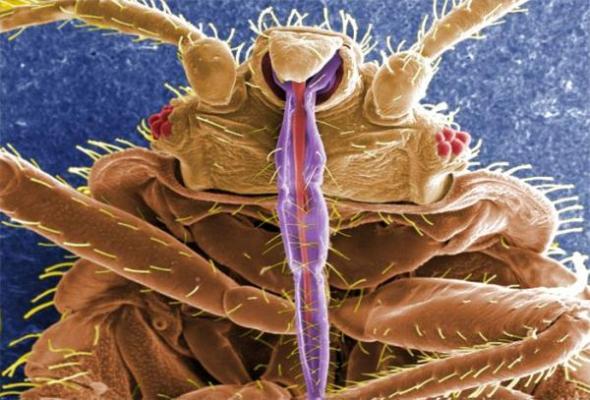
Bed bug (under microscope)
Do you know exactly who you’re sleeping with at night time? Interesting question one may ask, and very peculiar to document on however as this is the International Animal Rescue Foundations © news and media site which covers all environmental, botanic and and animal affairs then our little critters that lurk beneath the covers of our bed and in the cracks of out floors should also be documented on too considering they are a microscopic species of animal.
Now bug’s and viruses have always fascinated myself although not so much my so colleagues, friends and family, and I can still clearly remember to this day when studying pests and diseases at university my lecturer a keen and enthusiastic bee keeper, entomologist and virologist Professor Crompton jumping around the lecture theatre whenever one mentioned the word “bug” as they are exceptionally fascinating to watch, breed and evolve.
However they can cause havoc in the family home and ruin social living aspects as of their fierceness and destructiveness, as well as their ability to travel from one mammalian to the other and live in the most obscure of places one could possibly imagine.
Most bugs are relatively harmless and go about their daily business without you even noticing there within 0.01cm of you, however as explained above there are many hundreds of species that live and thrive within our bed linen, clothing, to mattresses, shoes, and even upon ourselves feeding of our blood and causing immense suffering to even hospitalisation to inducing allergies and Anaphylaxis a life-threatening type of allergic reaction to skin complaints.
Bed bugs are microscopic/parasitic incest’s that come from the Cimicidae family or better known as “Cimicids” which feed of our blood every night and no matter how much you try to banish them from vacuminfg, opening your bedroom or home windows, to using insecticides I must state you will never get rid of them and that is truly a fact of life.
Where there is a food source as in YOU or an animal such as pet with short hair to long hair then there will be a feeding frenzy, the Cimicidae family of vampires will only feed on warm blooded mammals and not cold blooded, and how they actually become living within our homes is still baffling.
The Cimicidae family are one hell of a strong insect that can withstand even pesticides and the vacuum “to a point” most pesticides will remove them “in living form” however their young that they lay are encased in an extremely strong outer type shell which is untouchable even with the strongest of pesticides or insecticides. Once they hatch though and the pesticides are on them then they shall perish “until the next invasion”.
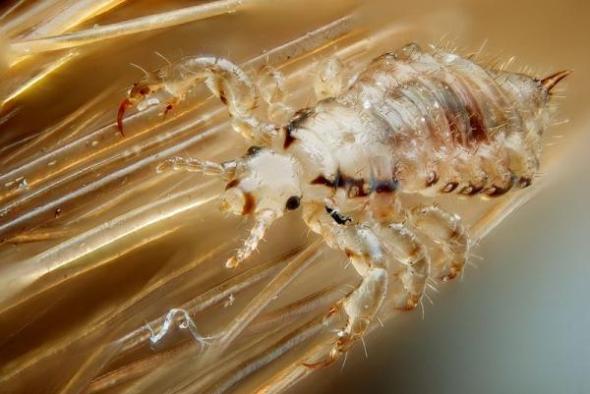
Head lice (under microscope)
Cimicids are relatively specialized in their choice of hosts, compared to other bloodsucking insects. Most cimicids have a preferred host but will accept some others when presented with the choice, such as C. lectularius and C. hemipterus, which are most often found among humans but can also survive by feeding on birds, bats, rabbits, and mice. Some subfamilies are restricted to certain types of bats, while one species, P. cavernis, appears to accept only one species of host.
Some people believe that these type of invasive insects actually live on ourselves and upon animals such as the flea Ctenocephalides felis or C. canis and dust mite Dermatophagoides pteronyssinus in fact your very wrong, these type of insects need to “travel to live and breed”. All we and animals are to them are a feeding source so no matter how many times you shower, cover yourselves in insecticides your still going to be sucked on alive which is a fact of life. Dust mites, to fleas, and the countless other species of animal and house insects/mites or bugs live in clothing, bedding, and within the small dark warm cracks of floors, carpets, including any type of upholstery and leather.
They will not ever live on you or an animal, we and animals are simply a “feeding host”. These insects need to travel in order to live and gestate from one host to another, then it’s back to the upholstery, bedding, with wooden floors being their main choice “hence why you will be bitten more on the legs and ankles”.
It’s no laughing matter though and as explained they can cause and wreak havoc in the family homes to retail centres, to hospitals causing millions of dollars in lost revenue as of areas needing to be pest cleared with insecticides and pesticides, they can close down schools, hospitals, retail outlets, to even forcing families out of the their homes. (You wouldn’t think that an insect that’s microscopic could actually become that invasive, however they do and multiply rapidly).
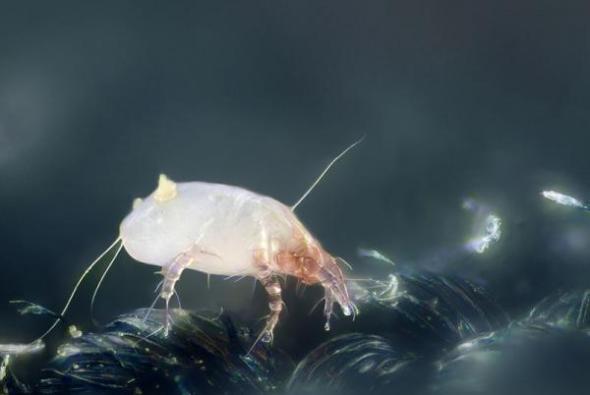
House dust mite (under microscope)
How many species of bugs live within our homes?
Now were talking as this is truly fascinating and before I document further, these insects don’t care how clean you are, how hygienically spruced your house is, to even shaving all your hair of. We and animals are warm blooded so that is their food source hair or no hair, clean or non-clean. The myth that quotes blood sucking insects will only target unclean people to even clean people is simply a myth and utter nonsense.
Bed or dust mites (please note that this is not even a complete list and there are at least 100 more species that still haven’t been fully identified)
The common mite
In total there are 18 species that have been identified because of their destructiveness and allergies to illness they cause that I have listed below and damage to food stock;
All of the listed mites below can bite human skin and result in a cutaneous reaction, as well as transmit other diseases of or affecting the human integumentary system, just because “some live on other species” of mammalians to reptilians” doesn’t mean we are immune from attack and please remember these are just (mites). There is a vast and significant difference between “mites and insects”.
- Acarus siro
- Glyciphagus domesticus
- Carpoglyphus passularum
- Cheyletiella spp
- Cheyletus eruditus
- Dermanyssus gallinae
- Dermatophagoides pteronyssinus (house dust mite)
- Lepidoglyphus destructor
- Leptotrombidium deliense
- Liponyssoides sanguineus (Allodermanyssus sanguineus)
- Ornithonyssus bacoti
- Ornithonyssus bursa
- Psoroptidae spp (carpet mite)
- Pyemotes herfsi
- Sarcoptes scabiei
- Trombicula alfreddugesi
- Trombicula autumnalis
- Tyrophagus neiswanderi (cheese mite)
The common or household bed bug, or Cimex lectularius, is found worldwide. These insects adapt well to human environments and typically live in temperate climates. A number of other pests resemble bed bugs in habits and appearance.
The tropical bedbug, or Cimex hemipterus, was only recently discovered by the Medical Entomology Department, ICPMR. Found in tropical regions such as Florida, this species infests poultry and bats.
Leptocimex boueti, or bat bugs, have also been observed in tropical regions. This species feeds primarily on bats, although they do sometimes select human hosts. Bat bugs and bedbugs are extremely similar in appearance and one can only distinguish between them through microscopic examination. Other species, such as Cimex pilosellus and C. pipistrella, also target bats.
Located primarily in North America, the Haematosiphon inodora, or Mexican chicken bug, also closely resembles the common bed bug. However, these insects are typically found on poultry farms and choose bird species and domestic fowl as hosts.
Barn swallow bugs resemble bed bugs as well. Although barn swallow bugs feed primarily on cliff swallows and live in swallow nests, they have been known to enter human dwellings when bird migration occurs. It is important to accurately identify bed bugs before beginning treatment of an infestation: incorrect control methods will prove ineffective and may be harmful to small children, pets and furnishings. Contact your local pest control experts to arrange an inspection and consultation. http://www.ca.uky.edu/entomology/entfacts/ef636.asp
Bed Bugs identified in 1802 I have documented below;
- Afrociminae
- Cimicinae (most common)
- Cacodminae
- Haematosiphoninae
- Latrocimicinae
- Primicimicinae
All six species are categorised as “the subfamilies” of the main species of bed bug more commonly known as Cimex lectularius which derives from the arthropod family an invertebrate animal having an exoskeleton (external skeleton), a segmented body, and jointed appendages. (Are we itching yet?)
Fleas have to the be one of the most disruptive, disease spreading “type insect” that I know of and as an environmentalist they do actually make me itch just writing about them. Some may think there is actually only one species of flea however there are over 2,000 species of Fleas the family name for the flea is Siphonaptera but the most destructive are named below that can cause major animal and human, including commercial business shut down if a major infestation breaks out.
The most common named and known fleas;
- Cat flea (Ctenocephalides felis)
- Dog flea (Ctenocephalides canis)
- Human flea (Pulex irritans)
- Moorhen flea (Dasypsyllus gallinulae)
- Northern rat flea (Nosopsyllus fasciatus)
- Oriental rat flea (Xenopsylla cheopis)
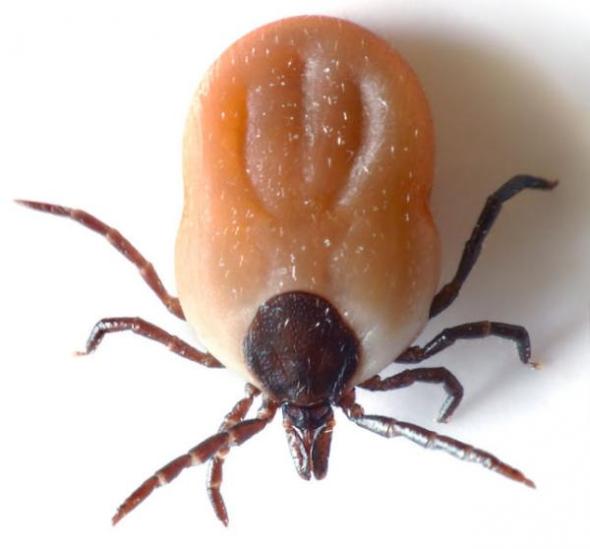
Human tick (under microscope)
The canine and human flea can be most traumatising for animals causing major upset and illness to form to passage for other diseases and viruses knocking the immunity of the canine and feline badly to even causing in rare cases death. They are not very nice insects to have located on ones animals nor in the home and I do highly recommend that should you adopt a canine or feline that you de-flea on a regular basis or you could be in breach of the Animal Welfare Act within your state or continent if that animal[s] suffer.
The human flea though not many people are aware off, and wow they can cause some damage that I have documented on in brief below.
This species bites many species of mammals and birds, including domesticated ones. It has been found on dogs and wild canids, monkeys in captivity, opossums, domestic cats, wild felids in captivity, chickens, black rats and Norwegian rats, wild rodents, pigs, free-tailed bats, and other species. It can also be an intermediate host for the cestode, Dipylidium caninum.
People with fair skin and red hair are more likely to be infested with the human flea. Flea bites are typically red and inflamed. Overall symptoms include itchiness, and rashes. Fleas can spread rapidly move between areas to include eyebrows, eyelashes, and pubic regions.
Common treatments include body shaving and medicated shampoos and combing, however if you don’t treat the source then you will never banish this pest (and that is what they are, a pest) they do no good to this planet, they do not pollinate, nor do they help other species live.
They don’t just live in the house too outdoors fleas are most prevalent in locations that have relatively high humidity and moderate daytime temperatures. They favour shaded, protected areas such as animal enclosures like a kennel and doghouse, as well as crawl spaces in which pets rest and vegetation located next to buildings.
In the past, it was most commonly supposed that fleas had evolved from the flies (Diptera), based on similarities of the larvae. (Some authorities use the name Aphaniptera because it is older, but names above family rank need not follow the ICZN rules of priority, so most taxonomists use the more familiar name).
Genetic and morphological evidence indicates that they are descendants of the Scorpionfly family Boreidae which are also flightless; accordingly it is possible that they will eventually be reclassified as a suborder within the Mecoptera. Their evolution continued to produce adaptations for their specialized parasitic niche, such that they now have no wings and their eyes are covered over. The large number of flea species may be attributed to the wide variety of host species they feed on, which provides so many specific ecological niches to adapt to. In any case, all these groups seem to represent a clade of closely related insect lineages, for which the names Mecopteroidea and Antliophora have been proposed.
Flea systematics are not entirely fixed. While, compared to many other insect groups, fleas have been studied and classified fairly and thoroughly, details still remain to be learned about the evolutionary relationships among the different flea lineages.
Fleas can cause many diseases to occur the most common is “Cat Scratch” Cat scratch disease is a bacterial disease caused by Bartonella henselae. People with weak immune systems are at increased risk of getting seriously ill with cat scratch fever. Young cats and kittens are most likely to be the source of human infection and about 40% of cats carry these bacteria at some point in their lives. The infection, which rarely causes disease in cats, is transmitted between cats by fleas. Infected flea droppings on the cat’s fur or claws are the source of human infections, which are spread from the cat to a person by a cat bite, scratch or lick. Cat scratch fever can be prevented by practicing excellent flea control and by avoiding cat bites or scratches.
The RAREST form of flea disease is the plague - Plague is a serious infection of humans caused by bacteria called Yersinia pestis. It is usually caused by the bite of a flea that has fed on an infected wild animal, such as a rat, chipmunk or prairie dog. It usually causes large sores and abscesses in the glands of the arms and legs. Dogs, and especially cats, can also become infected and can spread the disease to their human companions. While plague has been found in wildlife in many parts of the state including Western Washington, human cases are rare. The most recent human case was in Grant County in 1984. Plague is treatable with antibiotics.
All of the named above SLEEP WITH YOU AT NIGHT – What a feeding frenzy of disease and viruses, however like explained you can keep these mites, and fleas at bay using professional and domestic pesticides “you cannot stop them though” unfortunately.
Humans are a favourite cuisine for millions of microbes, mites, worms and bugs. In other words, we humans are the most suitable habitat and a ‘walking ecosystem’ for these hungry bugs. Here is a list of some of the hungriest and creepiest that might be feasting on you right now as you sleep.
- Head lice
- House dust mite
- Mosquitoes
- Human fleas and ticks
- Bed bugs
I have only named a few species “of many thousands that residing in your homes” to even your rescues, the true extent on documenting them all would take roughly 1-2 years as there are thousands of species that are “feeding of us and our animals.
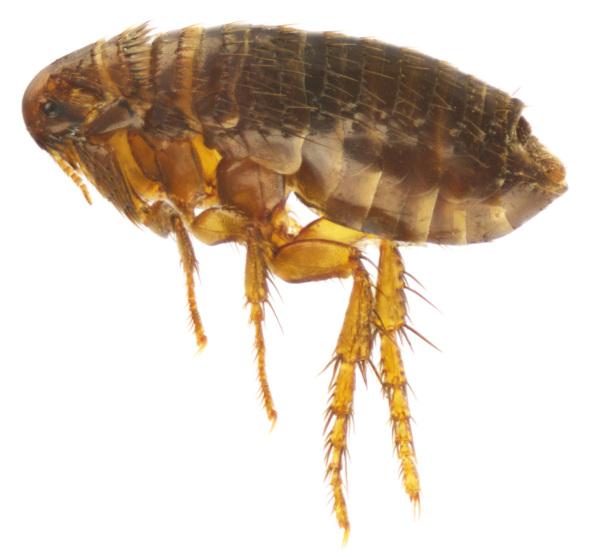 Flea (under microscope)
Flea (under microscope)
Remember your never alone
Tobacco - Animal Experimentation

We all know that nicotine and tobacco in general is bad for our health including the environment and those that don’t smoke coming under increased attack from plumes of passive smoke, however smoking in general is not just bad for our health it’s also grotesquely damaging for our environment, to the mammalians that tobacco is scientifically tested on in secret underground horror movie type dungeons.
Advertisements on televisions banned in the European Union never informed anyone that smoking was also bad for “animals” that are incarcerated in medical medieval torture chambers then pumped daily with carcinogenic toxic substances to evaluate the damage that smoking causes to one’s body such as cancers, loss of libido, tachycardia, hypertension, to the effects that nicotine can have on unborn foetuses, and other parts of the body being mainly internal organs, to the nervous system too.
There are many laboratories around the world that are mostly government owned are also asked by tobacco companies to test the effects of nicotine and other poisonous substances on animals from canines, felines to primates to source the correct brand of tobacco that the consumer may be more interested in purchasing.
Tobacco smoke contains over 4,000 different chemicals, at least 50 are known to be carcinogens that (cause cancer in humans) and many are poisonous that are seriously damaging too one’s health including the non-smoker and the environment too.
Cigarettes are one of few products which can be sold legally which can harm and even kill you over time if used as intended. There are on-going lawsuits in the USA which aim to hold tobacco companies responsible for the effects of smoking on the health of long term smokers.
In 2012 the European Union imposed new stringent rules on tobacco companies issuing them with a form of ultimatum. They either hid the “brand names” on their packaging or they would be refused the right to sell in many European Nation supermarkets and small outlets, this law has come into effect in “most European Union” hypermarkets and small outlets however not all have yet opted into, with some smaller shops not actually effected by the law as of their opening hours, shop floor size to how well they are trading with regards to profits.
Other rules that have come into effect are now hypermarkets that have been ordered now to conceal tobacco products behind white sliding doors which are aimed more at the younger generation that shop in many major supermarkets. This is an act of governmental safety protocol to try and reduce the number of younger generation smokers thus reducing illness that cigarettes can cause at such an early budding age. Again this rule only applies to some hypermarkets and smaller shops that are not “effected by the law” due to size, profit margin and general opening hours. http://www.dailymail.co.uk/news/article-2125978/Cigarettes-tobacco-disappear-supermarket-displays-today.html#axzz2KN9piAZi
So in all due respects the governments are now clamping down hard and “protecting the consumers” along with the younger generation from being brain washed in to the purchasing these highly additive chemicals just to reduce physiological and neurotransmitter function stress levels or boredom in general thus equalling a form of protection to the public.
Now not wishing to name or rock the boat a little too much but I’m becoming a little pissed off with hypocritical animal rights activists and ignorant members of the public that simply believes tobacco derives from the Tobacco plant Nicotiana tabacum which is such a beautiful plant on its own without the added carcinogenic addictive chemicals.
The actual Nicotiana tabacum herbaceous perennial is not tested upon our vulnerable species of primate to canines and felines of course, we all know that, or do we? It’s the four thousand plus addictive, cancerous and highly deadly chemicals added to the Nicotiana tabacum that are tested on animals “in secret prisoner of war camp like chambers” within agricultural and consumer government owned laboratories such as Huntingdon Life Sciences http://www.huntingdon.com/ founded in 1956 and Shin Nippon Biomedical Laboratories http://www.snbl.com/en/index.html founded in 1957 and of course the other infamous AstraZeneca plc http://www.astrazeneca.com/Home founded in 1999 and is the fifth largest biomedical pharmaceutical laboratory in the world.
There is a vast difference although not much between the slaughter house and the animal pharmaceutical experimentation industry. Firstly the slaughtered dead flesh you are eating is killed because of consumer want and demand with meat being relatively safe in the “governments” eyes to produce, slaughter for you to then devour even though its pumped with copious amounts of water carbon dioxide, tranquilisers, antibiotics, food additives, E numbers, gluten, colourings, cacogenics, and mostly water to saline, oh and horse meat. Forgot that one, added by mistake apparently to many supermarket ready processed meals 2013.
However the chemical industry is by far more complex and the government must tread carefully when introducing new chemicals in order to feed the markets and their dripping gold lined pockets/economy with highly addictive yet life threatening chemicals that are added to the actual plant Nicotiana tabacum.
Take the chemicals added to the plant away then the plant is “not worth selling” as it has lost what we describe “addictive demand” that’s been made addictive for you to purchase more and in larger quantities depending on (strength). Nicotiana tabacum is only used as a tobacco plant because it burns easily, and grows rapidly in many arid nations, so no chemicals equals no money and very slow consumer sales.
Please note (strength) as this the government scientists and tobacco companies enjoy dabbling with to ensure that you crave stronger cigarettes with more Mgs of nicotine and chemicals added for a more serene and relaxing smoke thus soothing the neurotransmitters in one’s brain until the next fix is required.
What chemicals are you smoking?
- Benzene (petrol additive)
- Formaldehyde (embalming fluid)
- Ammonia (toilet cleaner)
- Acetone (nail polish remover)
- Tar
- Nicotine (insecticide/addictive drug)
- Carbon Monoxide (CO) (car exhaust fumes)
- Arsenic (rat poison)
- Hydrogen Cyanide (gas chamber poison)
All of the chemicals above can cause an array of disorders form Leukemia tongue and throat cancer, to loss of appetite, sexual dysfunction, asthmatic attacks, to emphysema, and death - http://www.stop-smoking-programs.org/effects-of-smoking.html
Where do animals come in to this though?
Well this is now something the International Animal Rescue Foundation © has been asking the British Home Office and Huntingdon Life Sciences since 2010, and they are being rather crafty with regards to giving this information out.
The freedom of information act 2000 which we have accessed and used many times to obtain information that should be placed within the public domain is being denied by the Home Office and Huntingdon Life Sciences with regards to how many animals they have experimented on with regards to mainly tobacco and cosmetics.
Huntingdon Life Sciences are apparently immune from giving out these two very important pieces of documentation that we only require to analyse, however International Animal Rescue Foundation © has been denied on several requests/occasions this information.
It doesn’t come as a surprise since this type of horrific and utterly brutal barbaric animal experimentation is prolonged, incredibly painful and torturous to primates, canines and felines and rodents that are put through hellish months if not years of tobacco and cosmetic pharmaceutical experimentation leaving them withering in pain, suffering without analgesia for you the consumer.
There are many FOIA requests that can be read here from the British Home Office http://search.homeoffice.gov.uk/search?q=huntingdon+life+sciences+&searchSubmit=Search&entqr=0&ud=1&sort=date%3AD%3AL%3Ad1&output=xml_no_dtd&oe=UTF-8&ie=UTF-8&client=default_frontend&proxystylesheet=default_frontend&site=default_collection
http://www.homeoffice.gov.uk/science-research/animal-research/
http://www.homeoffice.gov.uk/publications/science-research-statistics/research-statistics/other-science-research/spanimals11/spanimals11?view=Binary (We was denied a similar request to this on tobacco and cosmetics)
http://www.homeoffice.gov.uk/publications/science-research-statistics/research-statistics/other-science-research/spanimals11/
http://www.uncaged.co.uk/news0094.htm
You can make a FOIA request here https://www.gov.uk/make-a-freedom-of-information-request/the-freedom-of-information-act
2012 November
“Disturbing details of the applications to administer tobacco smoke to animals have recently been uncovered. Such details are always kept secret from the public, animal advocate and humane research alternative organisations.
A few months ago it was revealed that experimenters who wanted to administer tobacco smoke to animals thought that making an animal go into spasm 40 times was acceptable. It was pointed out that it was distressing (to say the least) and that operatives should be on hand to observe and take the “right action.” The naivety of the experimenters might lead one to think that they were inexperienced, but the application was from a US based international company. As is usual in these cases the application was approved.
– NOTE H.L.S Huntingdon Life Sciences and other laboratories contrary to what is placed on the internet routinely experiment on animals every year using cosmetics and tobacco to assess what dangers there may be to the public and on behalf of tobacco companies too this is completely disrespectful and totally abusive.
Experimentations on animals with regards to tobacco;
In tests that many people don’t realize are still being conducted, animals are forced to breathe cigarette smoke for up to six hours straight, every day, for as long as three years. Animals naturally avoid breathing cigarette smoke, so lab rats are forced into tiny canisters, and cigarette smoke is pumped directly into their noses.
In the past, dogs and monkeys have had tubes attached to holes in their necks or have had masks strapped to their faces to force smoke into their lungs. In other commonly conducted tests, mice and rats have cigarette tar applied directly to their bare skin to induce the growth of skin tumours (you think animal slaughter is OK) and (Are you still craving for that cigarette?)
A small insight in the experimentations that where noted in 2010
- Cutting holes in beagles’ throats through which the dogs are forced to breathe concentrated cigarette smoke for a year.
- Inserting electrodes into dogs’ penises to measure the effect of cigarette smoke on sexual performance.
- Strapping masks to the faces of rats and monkeys and permanently restraining them to force them to breathe cigarette smoke constantly.
- Restraining Rhesus monkeys in chairs with head devices and exposing them to nicotine and caffeine to determine how caffeine and nicotine affect breathing.
- Forcing dogs to be on mechanical ventilators and chronically exposed to cigarette smoke.
Do you believe that we are lying just to entice you in to quitting that filthy habit that’s of course not just killing YOU but torturing and killing animals for YOU the consumer? Anyone that smokes and knows this is actively contributing to animal torture should be ashamed of themselves. You wouldn’t see a child put through this, so why an innocent animal? http://www.sourcewatch.org/index.php?title=Smoking_beagles
In 1970, Dr. Oscar Auerbach revealed that he had trained 86 beagles to smoke and 20 of them developed cancers. It was an experiment that proved for the first time the link between large animals exposed to cigarette smoke and cancer; it caught the tobacco industry unaware and opened the floodgates as both sides frantically rushed to prove or disprove harmful effects of cigarettes via a frenzy of animal testing.
It was amidst this controversy that Mary Beith went to work for Imperial Chemical Industries in the summer of 1974, but she was different from other workers. She had been engaged by The Sunday People in Manchester to work undercover at various animal research laboratories. She chose ICI’s Macclesfield labs for the simple reason that it was close to her home.
She could not produce her insurance cards (which would betray her journalistic background) so she pretended they had been mislaid. It was just perhaps the trusting nature of those days, but the company gave her three days to find them or face dismissal. Inside, she saw beagles forced to inhale as many as 30 cigarettes in a day to test ‘safe’ non-nicotine cigarettes, called New Smoking Material.
A darkroom was set up in a van parked near the lab and Beith was given a tiny camera, which she concealed in her bra. But when she took the film back, staff laughed at her efforts, one telling her “The next time you take pictures of those beagles, Mary, please be sure to take your finger off the lens!”
The next day, she smuggled in a larger camera and took some of the most ionic photos seen in the Animal Rights Milita, and Animal Liberation Front to date. The paper sat on the story for several months until publishing it on 26th January 1975 on the front page. It coincided with Richard Ryder’s powerful book against animal testing, Victims of Science.
These incidents provoked strong and violent backlashes from animal rights activists, and with the imprisonment of two such figures from the Animal Liberation Front, a new chapter in animal rights law would soon open.
As for Mary Beith, she won an award as campaigning journalist of that year, ironically for the reporter best remembered for an anti-tobacco story, she was a lifelong smoker and died soon after, after a long battle with an aggressive form of lung cancer.
http://monographs.iarc.fr/ENG/Monographs/vol83/mono83-6C.pdf
Due to acute exacerbations of chronic obstructive pulmonary disease (COPD), which are often associated with respiratory infections, are defined as a worsening of symptoms that require a change in medication.
Exacerbations are characterized by a reduction in lung function, quality of life and are associated with increased pro-inflammatory mediators in the lung. The aim was to develop an animal model to mimic aspects of this exaggerated inflammatory response by combining key etiological factors, tobacco smoke (TS) and bacterial lipopolysaccharide (LPS). The animal models were rodents that are still used to this day along with canines and Rhesus monkeys.
The conclusive results where;
Rats were exposed to TS for 30 min twice a day for 2 days. On day 3 animals were exposed to LPS for 30 min followed by exposure to TS 5 h later. Inflammation, mucus and lung function were assessed 24 h after LPS.
KEY RESULTS
Neutrophils, mucus, oedema and cytotoxicity in lung and/or bronchoalveolar lavage was increased in animals exposed to combined LPS and TS, compared with either stimulus alone. Lung function was impaired in animals exposed to combined LPS and TS. Inflammatory cells, oedema and mucus were unaffected by pretreatment with the corticosteroid, budesonide, but were reduced by the phosphodiesterase 4 selective inhibitor roflumilast. Additionally, lung function was improved by roflumilast.
CONCLUSIONS AND IMPLICATIONS
We have established an in vivo model mimicking characteristic features of acute exacerbations of COPD including lung function decline and increased lung inflammation. This model may be useful to investigate molecular and cellular mechanisms underlying such exacerbations, to identify new targets and to discover novel therapeutic agents.
Still fancy a cigarette?
A.R.M
PLEASE REMEMBER THAT SHELTER ANIMALS ARE ALSO AT RISK AND ROUTINELY PURCHASED FOR CRUDE EXPERIMENTS

